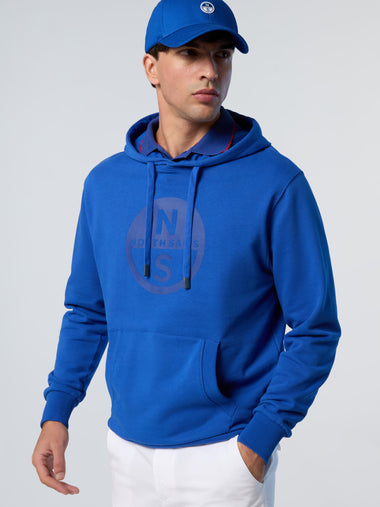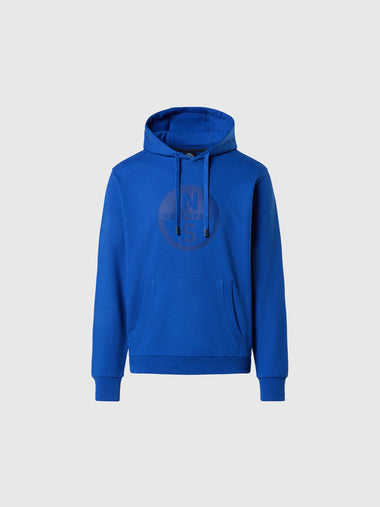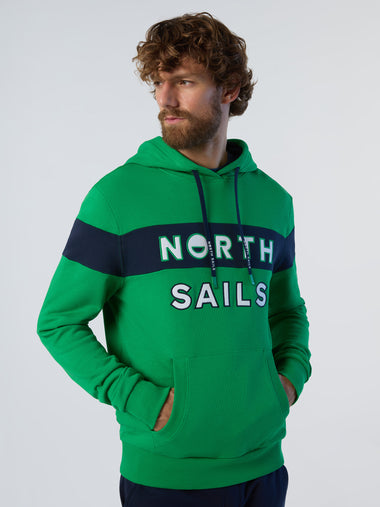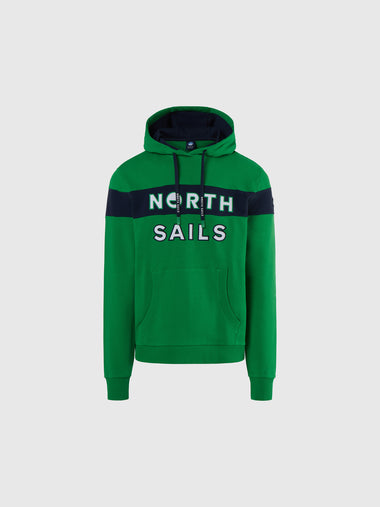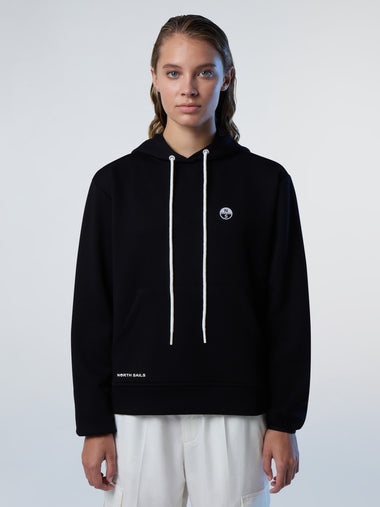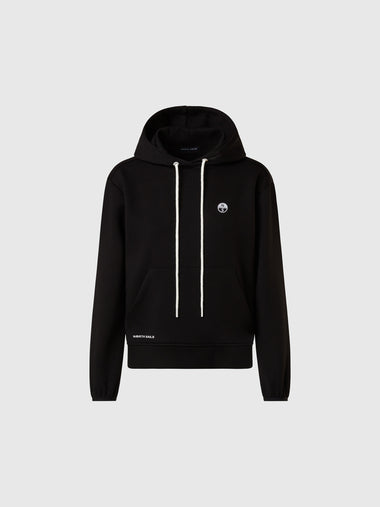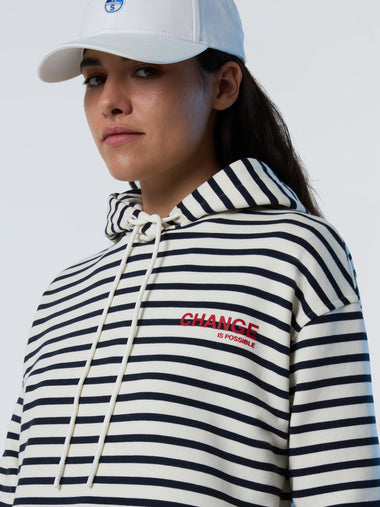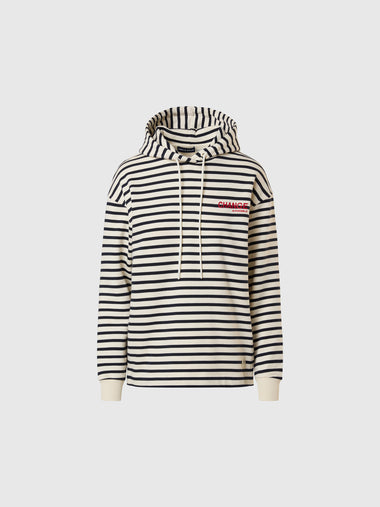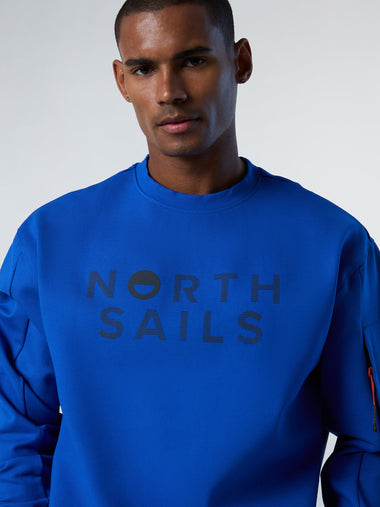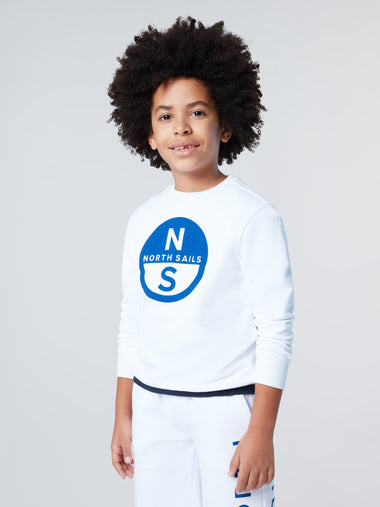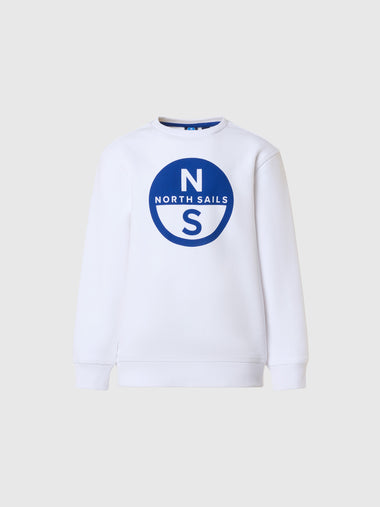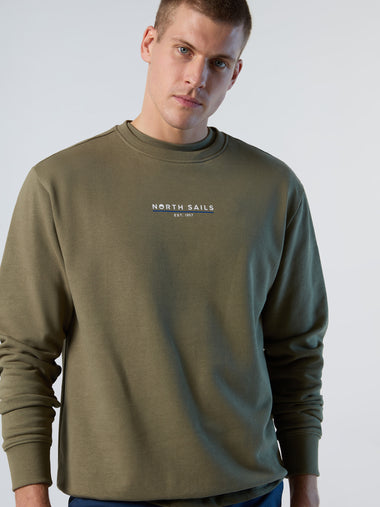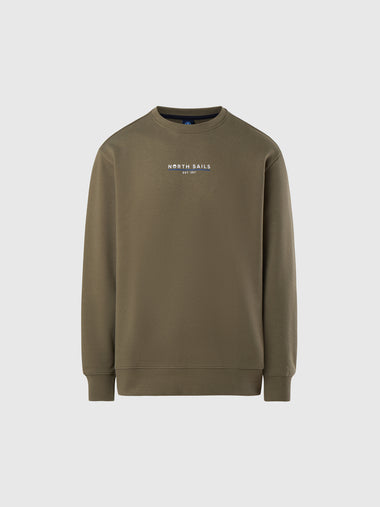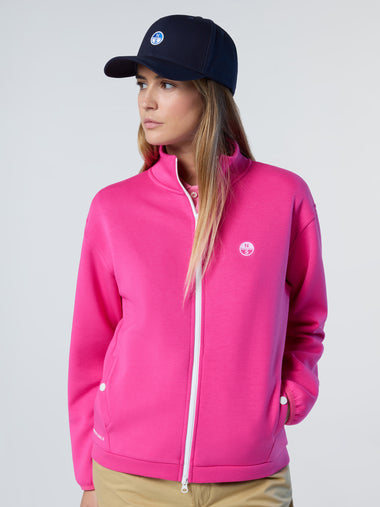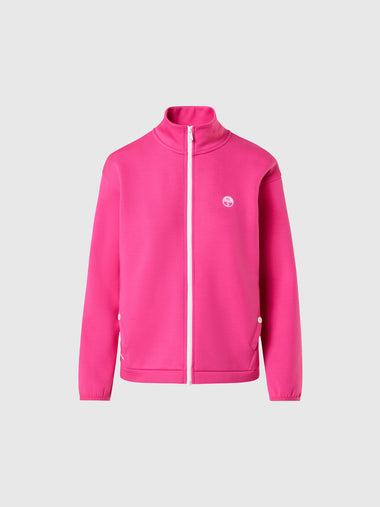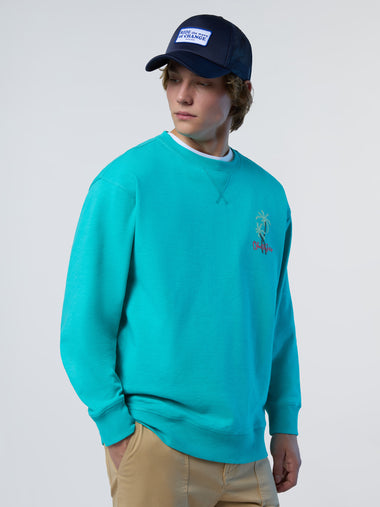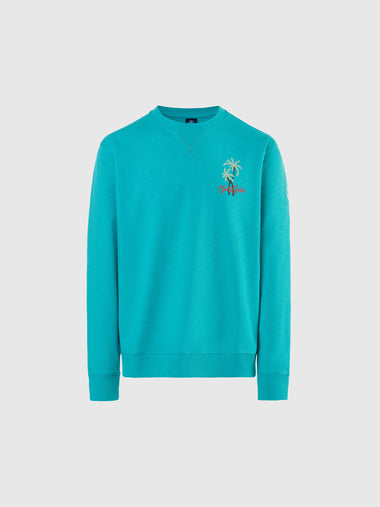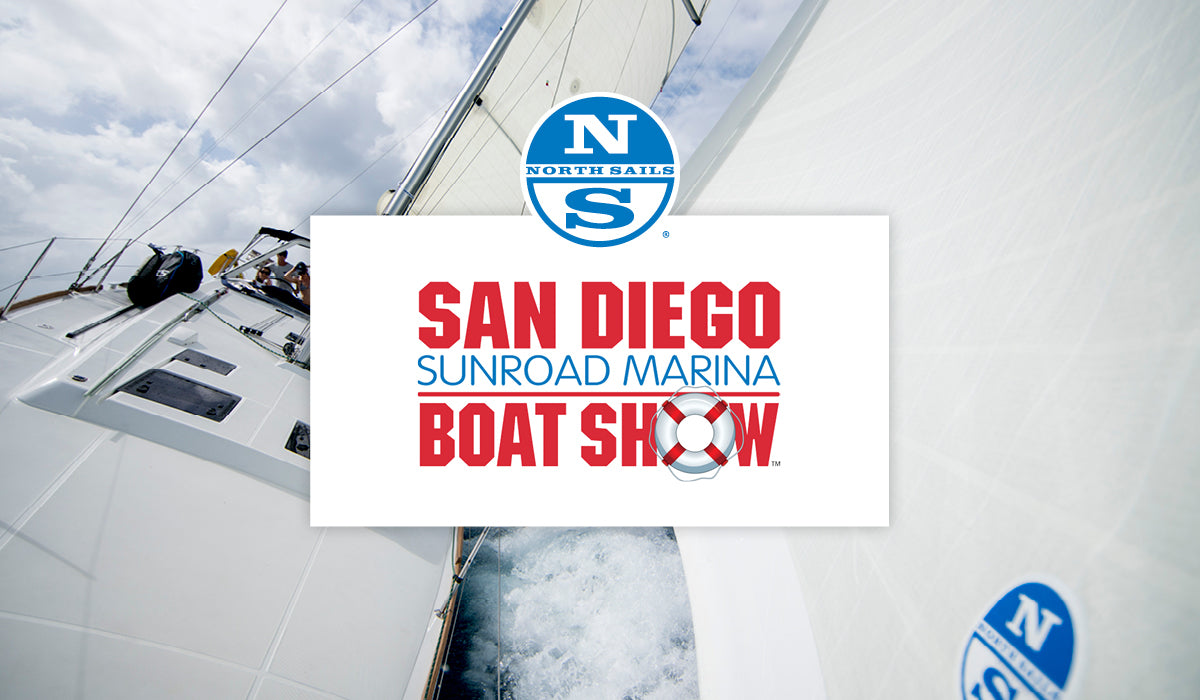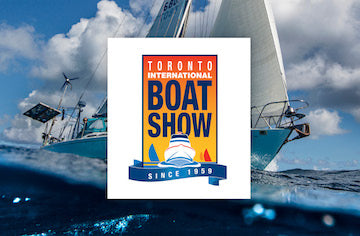NORTH SAILS BLOG
Todo
Events
Guides
News
People
Podcast
Sustainability
Tech & Innovation
Travel & Adventure
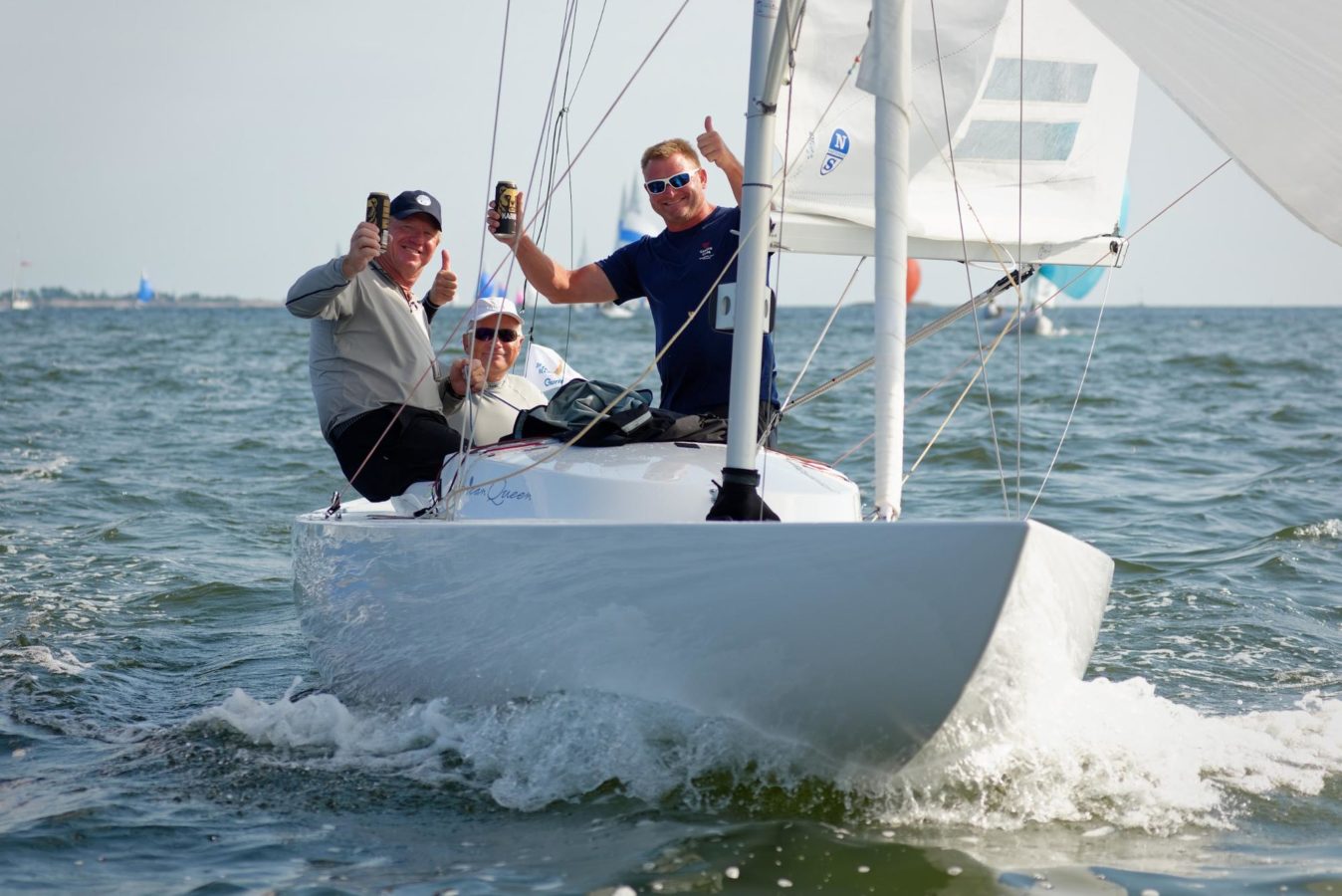
THEIS PALM TAMES THE DRAGON
THEIS PALM TAMES THE DRAGON
Introducing Our New Class Leader
Theis (far left) racing with his team African Queen celebrating the win at the 2018 Gold Cup. ©sailpix.fi
North Sails expert Theis Palm, has been appointed class leader for the Dragon. Theis has sailed on a lot of different boats in his 42 years as a sailmaker—including the Crown Prince of Denmark’s Farr 40 and his Dragon. He’s won eight world championships (Soling, Yngling, H-boat, Dragon, and 1/4 Ton), 3 Gold Cups (Dragon and Nordic Folkboat), two Europeans (Dragon and X-79), and 28 Danish Nationals in a whopping nine different classes. He feels lucky to sail almost exclusively in One designs.
“On a one design sailing day you sail one hundred percent of you time spend, but on a big boat you only sail forty percent and the rest of the time is organizing.”
He’s based out of the loft in Herlev, Denmark, less than half an hour northwest of Copenhagen, though he spends a lot of time traveling to regattas.
Palm began sailing in the Optimist in 1968, and moved on to other dinghies like Europe, Flipper and OK, before an opportunity to sail with double gold medalist Poul Richard Hoj Jensen led him to sail small keelboats. He was part of a medal-winning Danish Olympic training squad, and his team finished 3rd at the Pre-Olympics in 1995. He has been working as a sailmaker since 1977, and spend five years as Head coach for Danish Olympic Sailing Team up to the 2004 Olympics in Athen. He went to his first Dragon regatta in 1998.
“I like the Dragon because it’s a true three person boat. It was designed back in the 1920s, and it’s a very sensitive boat which makes it fun to sail. Many very good sailors sail the boat up to a high age, and that is great.”
He also enjoys the high level of competition. The annual Gold Cup has “between 10-15 boats that could win. There’s not many classes where you have so many boats that can win an event. There are many good sailors and a lot of professional sailors from Russia, England, Germany and United States.
“I had been helping some Russians teams and then they actually switched over to our brand. I am a little bit happy about that because they are pretty strong in the class at the moment, and most of them are using our sails. So that has been a good effort there.”
©sailpix.fi
Palm enjoys sharing his expertise with other Dragon teams and also helping North’s design team fine-tune the sails. “I’ve been sailing a lot in my life, so I have a good feeling for how sails should look to be fast… and I started sailmaking when we made them 2D on the floor. Understanding that can help to transfer good designs into 3D is a Big advantage.”
Dragon class rules currently limit sail materials to woven cloth, which he says limits the design options to improve already fast sails.
“We have very nice shaped Dragon sails, so it’s hard to find another two to three percent in the sails. Maybe you find it in a very, very narrow wind range, but we build huge crossovers sails so you don’t take the wrong sail. We’ve been very conservative with designs, because we are hard to beat.”
His customers also appreciate design stability. “They know our product. I have sailors who order a new sail and say, ‘No changes please? Good, I can use same mark on my mainsheet. Don’t change anything because we are fast!’ We have a very good product line.”
Because development happens very slowly, Palm focuses “more on the service, or the tuning, or the setting on the boats, where you can move clients to be better. I like helping them to better understand what happens with the sails when you tune the rig. That’s why it’s so important to meet clients in the field.”
And Palm says North Sails will be ready to evolve when the class is ready.
“The company is really looking into the future all the time. 3Di on smaller keelboats is an outstanding product. I hope in the next five years we can convince many One Design class to change their class rules.”
Until then, Palm will keep learning new tricks and passing them along to other Dragon sailors. “There are so many things to trim on the boat and the rig, it really makes a difference even if you make very small changes.”
Interested in sails for your Dragon? Contact your local expert today.
READ MORE
READ MORE
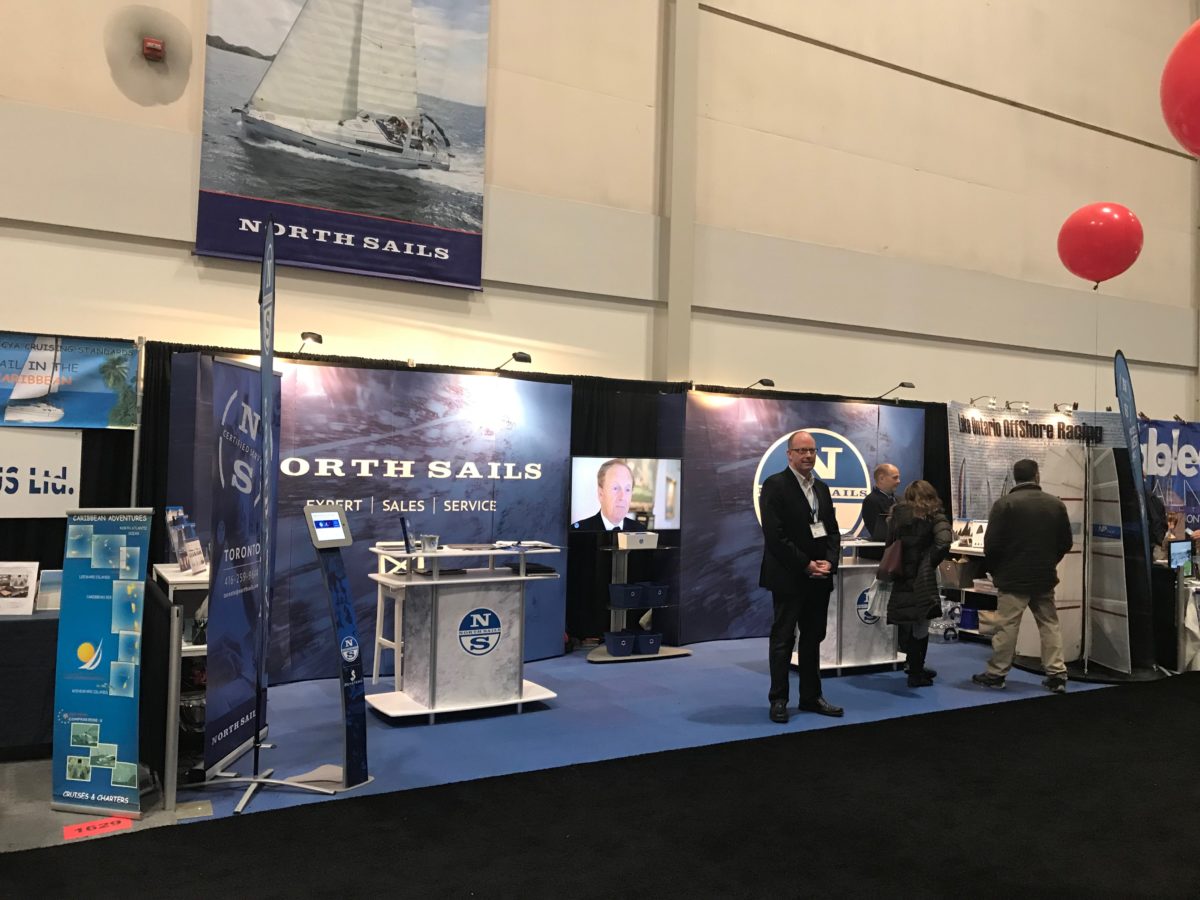
2019 TORONTO BOAT SHOW RECAP
WHIRLWIND WEEK AT THE TORONTO INTERNATIONAL BOAT SHOW
10 Days of All Things Sailing for North Sails Toronto
What a jam-packed 10 days it was for our Toronto crew at #TIBS2019. While the weather was less than favourable the first weekend, it was still a great time with friends old and new. Our reps from Kingston (George Jackson), Quebec (Miro Balcar) and Hamilton (Doug Folsetter) also joined us for the show! Office manager, Louisa Sonosky, shares how “the show was an amazing way to kick off the New Year and get people thinking about sailing again.” Everyone was able to put a little bit of summer in their winter and start getting ready for summer 2019. In addition to our local team, Bill Gladstone of North U, along with Geoff Moore, was on hand presenting North U Seminars during the first and second weekend. Gladstone & Moore shared information on Tactics, Tips & Tricks as well as Upwind Sail Trim in the hour-long complimentary sessions. NEW this year was our 3Di RAW 360. Boats with North 3Di RAW sails command podiums worldwide in the most competitive events and classes. For 2019, North has applied this advanced technology to 3Di RAW 360, a new product tier which combines 3Di's signature shape holding with an easy to read, easy to trim, and notably long-life racing sail that is perfect for Club Race sailors with smaller boats. Sales expert, Hugh Beaton, says “this is an exciting new product that is pushing North Sails technology to club racers and the local racing circuit.” The Toronto crew of North Sails would like to say a big THANK YOU to everyone who stopped by and supported the team!
READ MORE
READ MORE
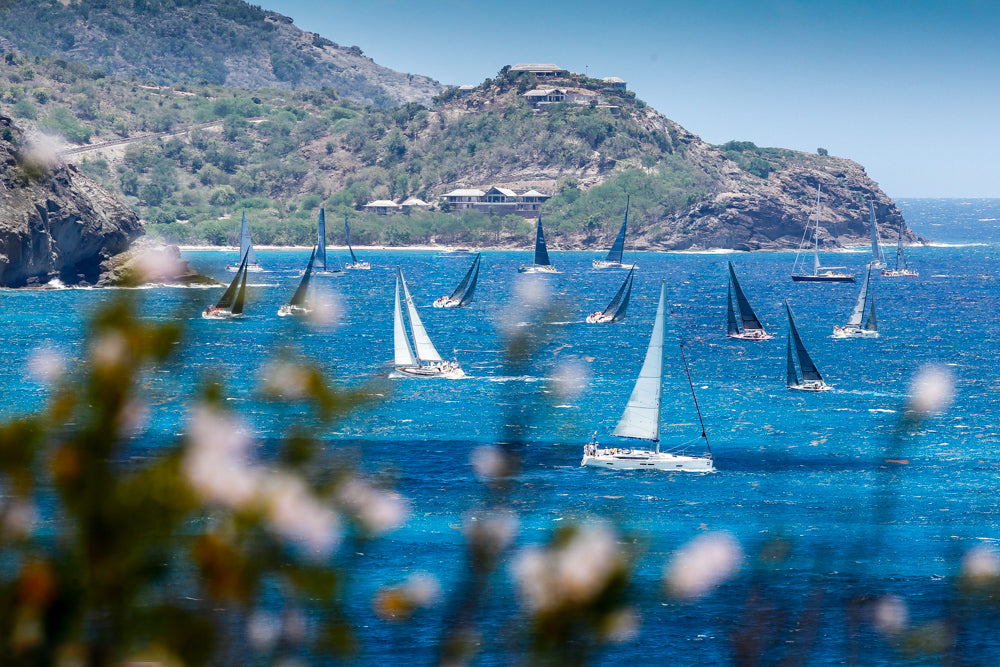
CARIBBEAN COMEBACK
CARIBBEAN COMEBACK
Experts Share Thoughts About the 2019 Season
Antigua Sailing Week ©Paul Wyeth
According to Andrew Dove, North Sails Caribbean Area Manager based in English Harbor, Antigua, 2019 is on track to be the best year ever for sailboat racing in the islands.
“We’re having a good year,” Andrew told us, when we caught up with him just after the New Year. “The work is piling in. The Caribbean is foolproof, it’s friendly. And obviously this is one of the ideal places in the world to sail.”
Mike Toppa, who is based at North Sails in Fort Lauderdale and races several Caribbean events, agrees that 2019 is going to be a great season. “After the hurricanes last year, regattas were at maybe 80 percent capacity; this year it seems like everyone’s making up for lost time. We’re all ready to get racing again.”
Organization Increases Numbers
Good planning—of the overall winter calendar, and of regattas—is part of the reason for increased participation across the board, Mike thinks.
“The Caribbean Racing Association has done a really good job coordinating all the schedules around the Caribbean so they don’t overlap. People have the ability to go to any regatta they want without missing out on another they might want to do. All of the events have stepped up their game with good, well-trained, race committees. Laying out courses, managing the regattas as people expect at a world class level.”
“Mike is quite right,” Andrew says. “There’s definitely professional management for racing in the Caribbean. The people who don’t live here participate for a whole range of reasons, but one is that the racing is very good nowadays.”
Andrew is predicting that the Caribbean 600 will have a record number of entries this year. All the events are growing, Mike adds. “It must be something that’s calling people in. Definitely an optimistic feel.”
Les Voiles de St Barth © Paul Wyeth
Antigua: Great for Cruisers, Racers, and Duty-Free
Each Caribbean season begins with the Salty Dawg Rally, a group of cruisers who travel south in tandem each autumn. Usually their destination is the Virgin Islands, but last year’s hurricanes sent them to Antigua—and they liked it so much, a large number came back again this year.
“For that week,” Andrew says, “there were events every night. We organized a 3Di evening at the loft, we had videos going, and we were giving away crepes and drinks. Most of the people didn’t have a clue what 3Di was, but now they appreciate its real advantage. And it was quite the party.”
Antigua has become a favorite hub for larger yachts as well because of its easy logistics, Andrew explains. “In the past it was difficult to ship things in and out; now it’s very easy to get provisions and sails delivered. And we’re very lucky with North Sails, they now allow us to deliver sails to the boats and catch up with the paperwork afterwards. Which means that when people come to regattas here and leave things for the last moment, it’s not a disaster.”
Docks of Antigua in English Harbour
Yacht Transports
Another reason the Caribbean is attracting more boats is that it’s now easy to get there without sailing across open ocean.
“In Fort Lauderdale,” Mike says, “a lot of yacht transport ships come in from Europe with a lot of the same boats you see on the racecourse. There are direct ships to St. Maarten and Antigua and different places. The costs are coming down, convenience is up, the scheduling is a lot more regular, and it’s definitely an option a lot of people take advantage of.”
Multihulls Multiply
Andrew says he’s been noticing a larger percentage of multihulls joining the Caribbean regattas. “Five years ago, you’d see one or two. Now there’s a class or even two classes of them.” Adding a widely accepted French handicap system has made it easier for regattas to handle scoring.
At the opposite end of the size and age spectrum, he adds that Antigua will host the 2019 Optimist Worlds in July, out of Nelson’s Dockyard in English Harbor. “That’s a major event because of the number of participants—not only the children but parents and staff. It’s offshore racing because they sail a few hundred meters and they are out to sea.”
Antigua Sailing Week © Paul Wyeth
3Di: Fewer Overnight Repairs
For this year’s regattas, Andrew plans to race with his customers by day and repair sails by night—though with 3Di, he says, the volume of repairs are way, way down. “In the past whether it be string sails or even 3DL, we would have to do sail repairs throughout the night. Now at big regattas, we’re asked to do small modifications but we’re not actually repairing the sails.” As 3Di NORDAC becomes more popular with cruisers, he predicts that repairs will drop off even more. “Fortunately we have a growing number of customers; if we didn’t, we’d be losing business.”
3Di is a huge advantage over laminated sails in the Caribbean, Mike agrees, because heat and humidity don’t affect 3Di. “We see it here in Florida too; all of a sudden sails are lasting six or seven years. Whereas a string sail would last three years. One of our customers has a 37m Dubois sloop,” Mike continues. “Their 3Di sails are three years old and are doing the St. Barth’s Bucket this year. I was talking to the captain the other day and asked how the sails are holding up, and he said they look like they’re brand new. They’re excited to race and they’ve got the sails to do it.”
“I actually don’t think we can overstate the change 3Di has brought into our market,” Andrew adds. “People here go sailing for more than a couple of hours, so it’s a real advantage. The only big repairs we have now are non-3Di.”
“You’ll get your evenings back,” Mike replies, chuckling.
Onsite pop-up loft, St. Barth
READ MORE
READ MORE
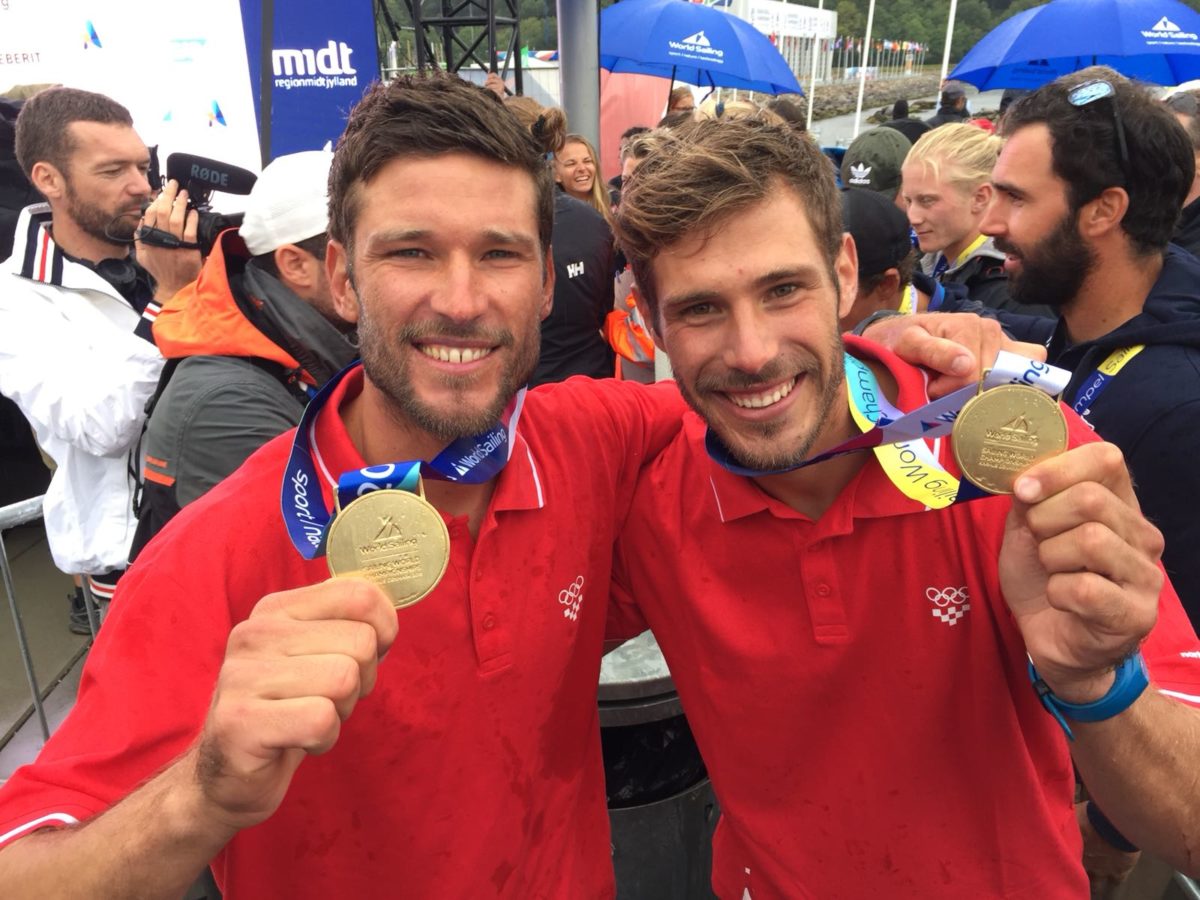
CROATIAN OLYMPIC GOLD MEDALIST ŠIME FANTELA JOINS NORTH SAILS
OLYMPIC GOLD MEDALIST ŠIME FANTELA LATEST TO JOIN NORTH SAILS
World’s Leading Sailmaker Recruits Olympian To Grand Prix Team
Sime Fantela (L) and Mihovil Fantela (R) after winning their gold medal in the 49’er class at the 2018 Sailing World Championships in Aarhus, Denmark.
North Sails today announced that Šime Fantela will be joining the Grand Prix segment, putting to use his experience across a range of classes. Šime will work closely with Grand Prix Segment Leader Paul Westlake, helping the design and product development teams to quantify their ongoing innovations.
After winning gold in the 470 class at the 2016 Olympics, Šime has his sights firmly set on a second Olympic gold medal in Tokyo 2020—this time in the 49er. He’s also sailing as strategist in the 52 Super Series on the newly launched Bronenosec.
North Sails Global Head of Sales John Welch commented: “We are really delighted that Šime has agreed to join North Sails. Not only is he a great sailor with a wealth of experience, but he is a huge asset to our pro sailor network, working across sail development and testing. We firmly believe that we need the best people out on the water pushing our sails to the limits and it is only in doing this we are able to give our customers what they want – the best product for whatever type of sailing they are doing. Through the addition of Šime to our team, we continue to learn from the best of the best to deliver the highest performing products.”
Paul Westlake added: “With such depth of experience and raw talent, Šime can help us develop our understanding of sailing campaigns and Grand Prix boats even further. He is an exciting, talented sailor and is quickly turning into an important opinion leader who can help us engage and inspire the younger generation of pro sailors. We believe that the North Sails team and technology can enhance his challenge for Gold in Tokyo and in turn we can learn so much from him, competing at the highest level of the sport. In order to continue to innovate we need to be challenging ourselves to think differently, and through working with Šime we see a great opportunity to do that.”
Šime commented: “I was delighted to have been asked to work with North Sails alongside my Olympic campaign. I really believe that I need to surround myself with the best possible people and to work in the best possible environment in order to become not only a good sailor, but also the most technically skilled sailor I can be. I have always been interested in the technical side of sailing and I really enjoyed making sails for myself in my campaign for Rio 2016 – I know how important it is to know everything you can about the sails you use in order to get the most out of them.”
“There is no better place to continue growing my knowledge than joining the greatest team in the world, North Sails. I am excited to be working with some of the best designers out there as well as the technically most advanced computer programs that exist. I look forward to learning more about how to apply them both to my campaign but also to help others get more from their sails and understand as much as they can about their ‘engine’.”
📸 Star Sailors League / Gilles Morelle
READ MORE
READ MORE

ŠIME FANTELA NAJNOVIJI ČLAN EKIPE NORTH SAILS
ŠIME FANTELA NAJNOVIJI CLAN EKIPE NORTH SAILS
Vodeći svjetski proizvođač jedara regrutirao je olimpijca za svoju Grand Prix ekipu
Šime Fantela i Mihovil Fantela, nakon osvajanja zlatne medalje u klasi 49er na prvenstvu svijeta u Aarhus-u, Danska.
Kuća North Sails objavila je da će se Šime Fantela pridružiti njihovoj ekipi za Grand Prix i svoje dugogodišnje iskustvo upotrijebiti u više segmenata. Šime će surađivati s voditeljem odsjeka Grand prix, Paulom Westlakeom, i ekipama za dizajni i razvoj proizvoda s ciljem inovacije. Nakon zlata u klasi 470 na Olimpijskim igrama 2016. Šime je odlučan u namjeri da uspjeh ponovi i 2020. u Tokiju, a odnedavno je i strateg u 52 Super Series nove posade Bronenosec.
Predsjednik prodaje North Sails John Welch kaže: "Oduševljeni smo što se Šime pridružio našoj kompaniji, jer on nije samo izvrstan jedriličar s golemim iskustvom, nego i važan dodatak našim timovima koji se bave razvojem i testiranjem jedara. Čvrsto smo uvjereni da naša jedra na vodi mogu najbolje testirati samo najbolji jedriličari, jer samo tako možemo klijentima ponuditi vrhunsku kvalitetu – najbolje jedro za njihov brod i njihov stil plovidbe. Šime će našem timu ponuditi svoje znanje; od njega ćemo mnogo naučiti o tome kako stvoriti proizvod spreman za vrhunske performanse."
Paul Westlake dodaje: "S tolikim iskustvom i tolikim urođenim talentom Šime će nam pomoći da još bolje razumijemo kako misli i plovi vrhunski jedriličar i njegov Grand Prix brod. Šime je vješt, nadaren jedriličar koji evoluira u jednog najvažnijih jedriličara našeg vremena i koji će nam pomoći da privučemo pažnju i nadahnemo nove generacije profesionalnih jedriličara. Vjerujemo da će ekipa North Sails i tehnologija koja nam stoji na raspolaganju pomoći Šimi da ostvari svoj cilj, zlato, u Tokiju, a zauzvrat ćemo mi od njega naučiti od njega sve što zna o natjecanju na najvišoj razini. Da bismo mogli ponuditi inovacije potrebno je razmišljati u drugim okvirima od ustaljenih, a suradnja sa Šimom važna je i velika prilika da to postignemo."
Šime Fantela prokomentirao je buduću suradnju: "Bio sam oduševljen kad su mi North Sails predložili suradnju. Uvjeren sam da se potrebno okružiti najboljim suradnicima i raditi u najboljim mogućim okolnostima da se postane ne samo dobar jedriličar, nego i najvještiji jedriličar koji mogu biti. Uvijek me zanimala tehnička strana jedrenja i bilo je lijepo surađivati na izradi jedara za natjecanja u Riju 2016. - znam da je važno znati sve o jedrima da biste iz njih znali izvući najbolje."
"Nema boljeg mjesta za nastavak razvoja mojeg jedriličarskog znanja od najbolje ekipe na svijetu, North Sails. Uzbuđen sam pri pomisli na suradnju s najboljim dizajnerima i na najnaprednijim kompjuterskim programima koji postoje. Veseli me i što ću naučiti više o tome kako da primijenim naučeno u pripremama i natjecanjima, ali i pomognem drugima da dobiju više od svojih jedara i razumiju sve što znaju o pogonu svog broda.”
📸 Star Sailors League / Gilles Morelle
READ MORE
READ MORE

ROYAL CORK YACHT CLUB U25 ACADEMY
ROYAL CORK YACHT CLUB U25 ACADEMY
North Sails Ireland enjoyed a great day out on Friday with the Royal Cork Yacht Club Under 25 Academy.
We were looking at some new 1720 3Di Nordac upwind sails and the North 1720 T-6 Class spinnaker complete with the EY logo.
EY have sponsored the U-25 squad and as part of that North Sails Ireland were delighted to be involved with the provision of a new spinnaker complete with the EY Logo.
We were blessed with amazing conditions for the photo shoot on Friday, 10 knots of wind, 10 degrees temperature and even the odd glimpse of the sun!
As well as the official pictures we had our own media guys on the case Young Productions who were filming on shore and flying the drone to give a different view on proceedings.
We would like to wish the U-25 squad good luck for the 2019 season and we look forward to playing our part as the season unfolds. Please take good care of that new spinnaker!!
Sail FAST!
READ MORE
READ MORE
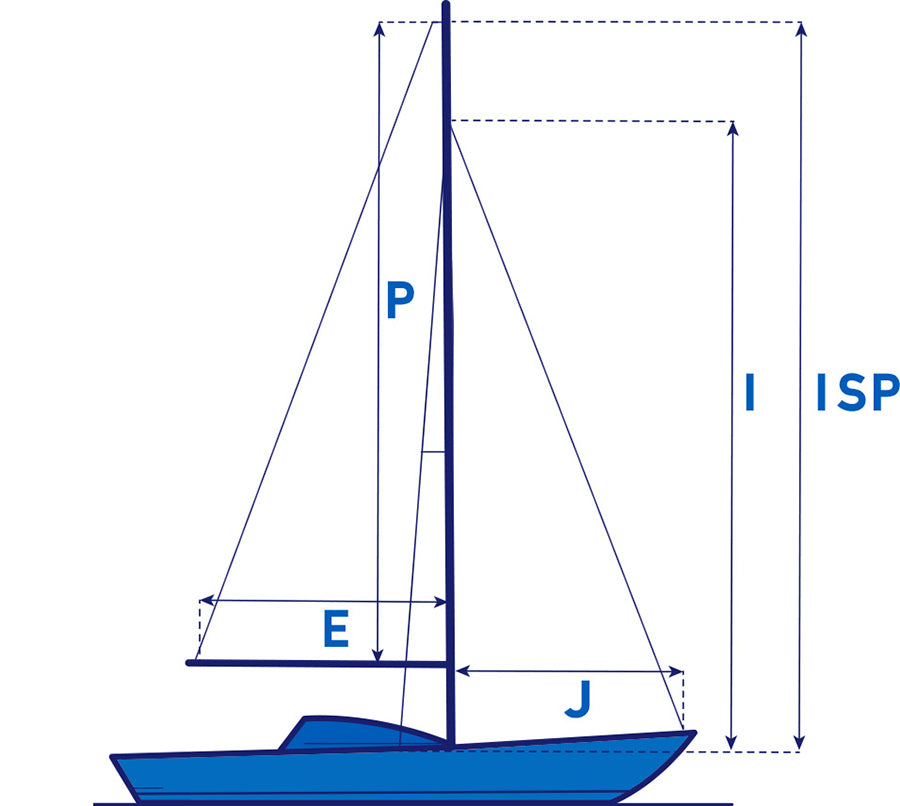
Consejo North Sails
CONSEJO NORTH SAILS
Revisamos el significado de las principales medidas de una embarcación según definición de la federación internacional de vela, World Sailing.
I – Altura del triángulo de proa: Distancia entre la intersección del stay de proa con el palo y la línea de cinta (el nivel de la cubierta).
J – Base del triángulo de proa: Distancia horizontal entre la base del estay y la cara de proa del mástil
P – Altura de grátil de la mayor: Distancia desde la parte superior de la botavara (la posición más baja del puño de amura) y el extremo superior de la mayor (el punto más alto al que se puede izar el puño de driza). Esta distancia está delimitada por bandas de color.
E – Pujamen de mayor: Distancia horizontal medida desde la parte posterior del palo a la altura de la botavara y el punto más a popa de la botavara, marcada con una banda de color, donde alcance el puño de escota de la mayor.
ISP – Altura de driza de spinnaker: Altura de la driza más alta del spinnaker hasta la línea de cinta.
READ MORE
READ MORE
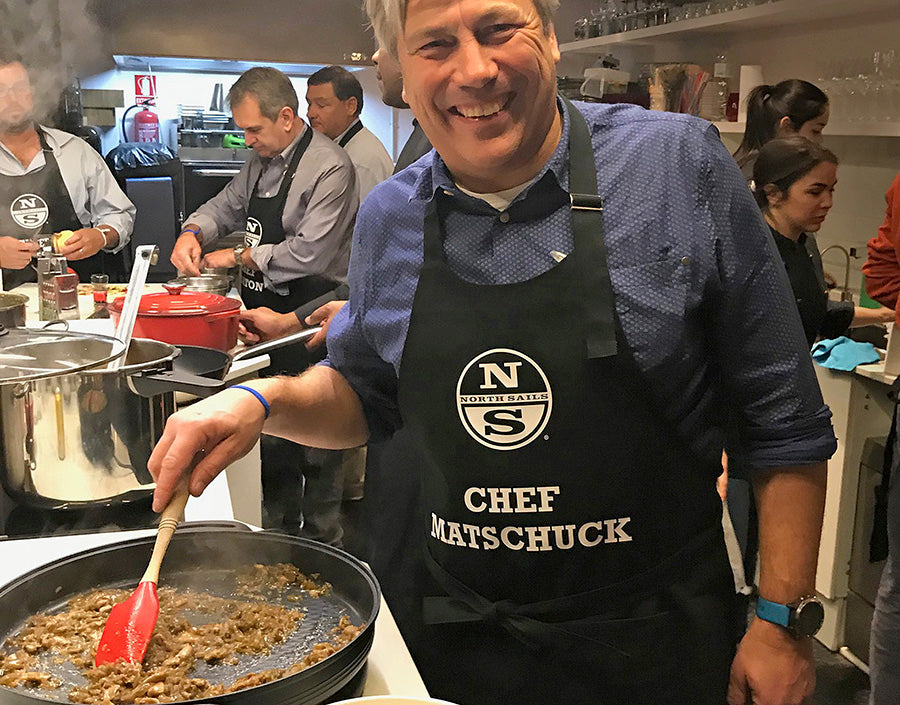
REUNIÓN FAMILIAR
REUNIÓN FAMILIAR
North Sails escogió Barcelona para su reunión anual de responsables comerciales de todo el mundo.
40 miembros de la familia North Sails participaron en la convocatoria para analizar la situación actual de la velería en cada mercado, valorar las acciones realizadas este año y planificar la próxima temporada, en la que se incorporarán interesantes novedades al catálogo de la marca. La elección de Barcelona como sede del evento resultó un éxito absoluto, y los participantes pudieron disfrutar de la gastronomía española protagonizando una entretenida edición especial de Master Chef.
READ MORE
READ MORE
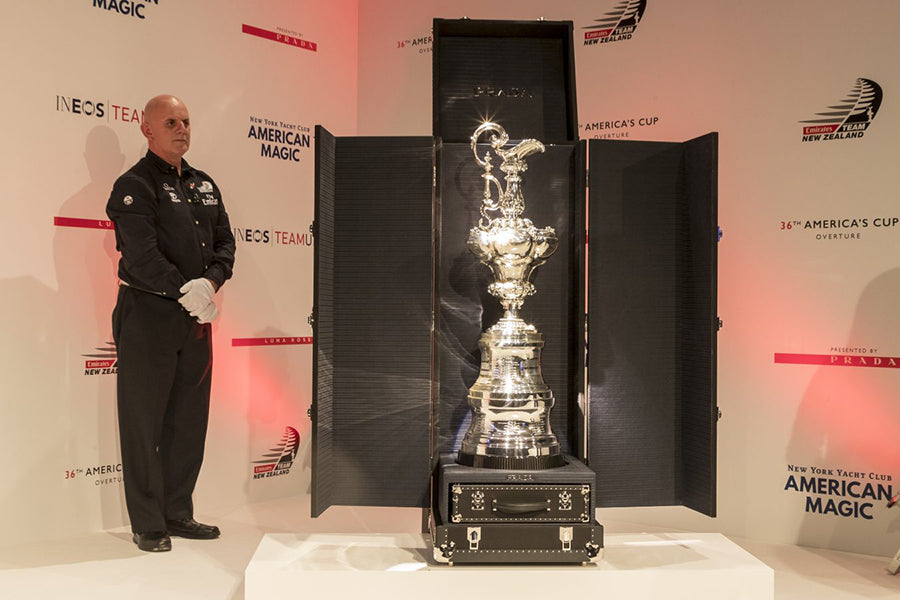
PROVEEDOR OFICIAL DE LA 36 AMERICA'S CUP
PROVEEDOR OFICIAL DE LA 36 AMERICA’S CUP
Tres de los cuatro sindicatos confirmados para competir por la 36 America’s Cup han elegido North Sails como proveedor oficial de velas.
📸 Luna Rossa Challenge
Se trata del defensor Emirates Team New Zealand y los desafíos Luna Rossa e INEOS Team UK. Los tres equipos se beneficiarán de los más de 35 años de experiencia en America’s Cup que posee la velería líder mundial, que ya trabaja en el desarrollo de la revolucionaria vela flexible que equiparán los monocascos voladores de esta edición, los espectaculares AC75.
READ MORE
READ MORE
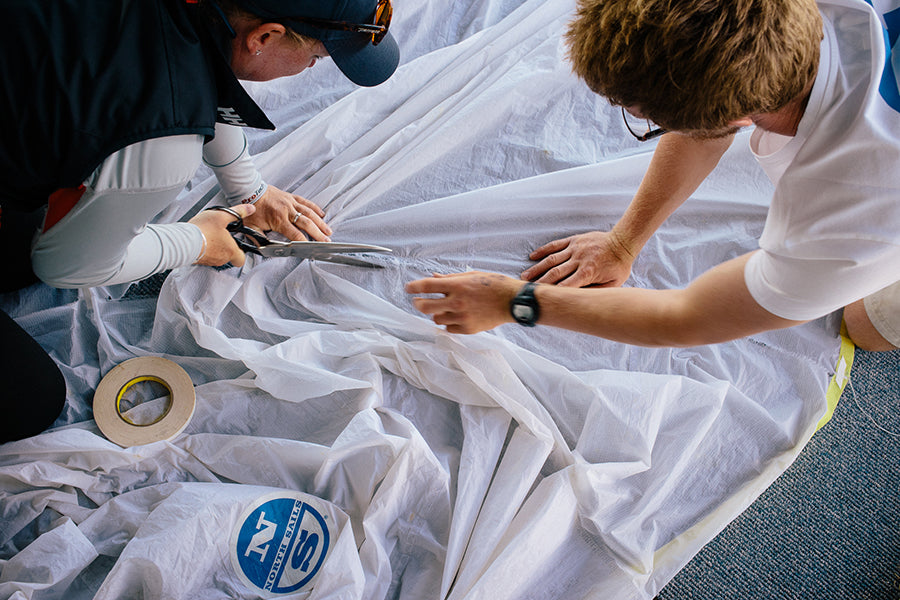
BARCELONA MARINE STORE, NUEVO PUNTO NORTH SAILS
BARCELONA MARINE STORE, NUEVO PUNTO NORTH SAILS
North Sails inicia un acuerdo de colaboración con Barcelona Marine Store, centro de suministros y servicio consagrado a la náutica con una ubicación privilegiada en Marina Vela Barcelona.
📸 Ben Zucker
Su eslogan ‘don’t worry about a thing’ refleja la vocación de Barcelona Marine Store de “ayudar al cliente”, como indica desde la firma Toni Belles.
"Todos somos navegantes, y ofrecemos soluciones personalizadas de forma similar a como un médico de cabecera hace con sus pacientes".
Como nuevo Punto North Sails, ofrece servicio de entrega y recogida de velas para su mantenimiento, además de ejercer de lugar de encuentro entre clientes y el equipo comercial North Sails.
"Este acuerdo nos permite estar más cerca de nuestros clientes y beneficiarnos de la experiencia y el excelente servicio de Barcelona Marine Store",
destaca Luis Martínez Doreste, director comercial de North Sails España.
READ MORE
READ MORE
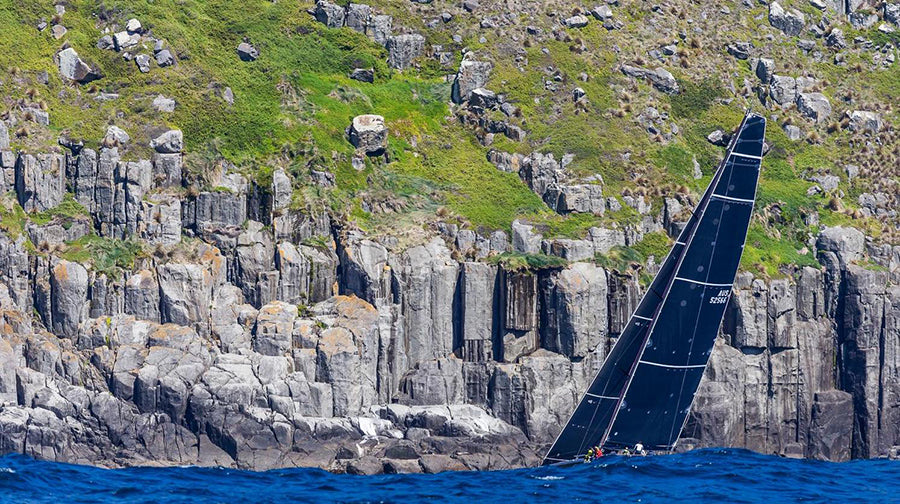
DOMINIO EN LA ROLEX SYDNEY HOBART
DOMINIO EN LA ROLEX SYDNEY HOBART
La 74 edición de la clásica oceánica del Hemisferio Sur reunió a una heterogénea flota de 85 barcos, incluyendo cinco supermaxis de 100 pies de eslora.
La Rolex Sydney Hobart partió de la bahía de Sídney el 26 de diciembre y dejó estampas históricas como la de cuatro de los supermaxis remontando juntos el río Derwent, en la aproximación final a Hobart. La victoria en tiempo real correspondió al Wild Oats XI patroneado por Mark Richards y con la navegación del español Juan Vila. El coloso australiano batía así su propio récord al sumar su noveno triunfo en 14 años. El título absoluto bajo fórmula IRC fue para el RP65 Alive de Phillip Turner. Ambos equipos eligieron velas North Sails, pero además la firma dominó los podios de las diferentes clases, incluyendo presencia en los tres primeros clasificados en tiempo real y en los absolutos de ORCi e IRC. Desde North Sails España felicitamos a todos por sus resultados y les agradecemos su confianza en North Sails.
📸 ROLEX / Studio Borlenghi
READ MORE
READ MORE
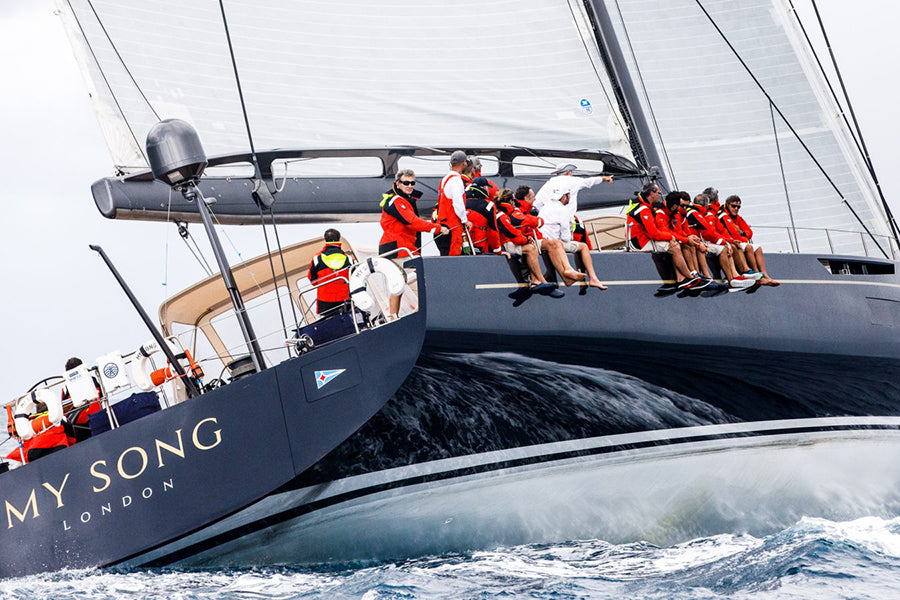
NUEVO AÑO DE RÉCORDS
(NUEVO) AÑO DE RÉCORDS
El año 2018 ha sido especialmente prolífico para los clientes North Sails.
📸 Arthur Daniel
Varios de ellos han establecido marcas históricas que se han convertido en récords a batir en diferentes disciplinas: En febrero, el Rambler 88 de George David completó la RORC Caribbean 600 en 1 día, 13 horas, 41 minutos y 45 segundos; en marzo, el Maserati de Giovanni Soldini navegó entre Hong Kong y Londres en 36 días, 2 horas y 37 minutos; en mayo, el Warrior de Stephen Murray realizó la Antigua Round the Island en 3 horas, 55 minutos y 38 segundos; en agosto, el Imerys Clean Energy de Phil Sharp completó la Sevenstar Round Britain & Ireland en 8 días, 4 horas, 14 minutos y 49 segundos; en noviembre, el IDEC Sport de Francis Joyon finalizó la Route du Rhum en 7 días, 14 horas y 21 minutos; en diciembre, el Baltic 130 My Song de Pier Luigi Loro Piana –con nuestro compañero Nacho Braquehais a bordo–, estableció el nuevo récord de la RORC Transatlantic (3.000 millas entre Lanzarote y Grenada) en 10 días, 5 horas, 47 minutos y 11 segundos. Enhorabuena a todos ellos, y gracias por confiar en North Sails.
READ MORE
READ MORE
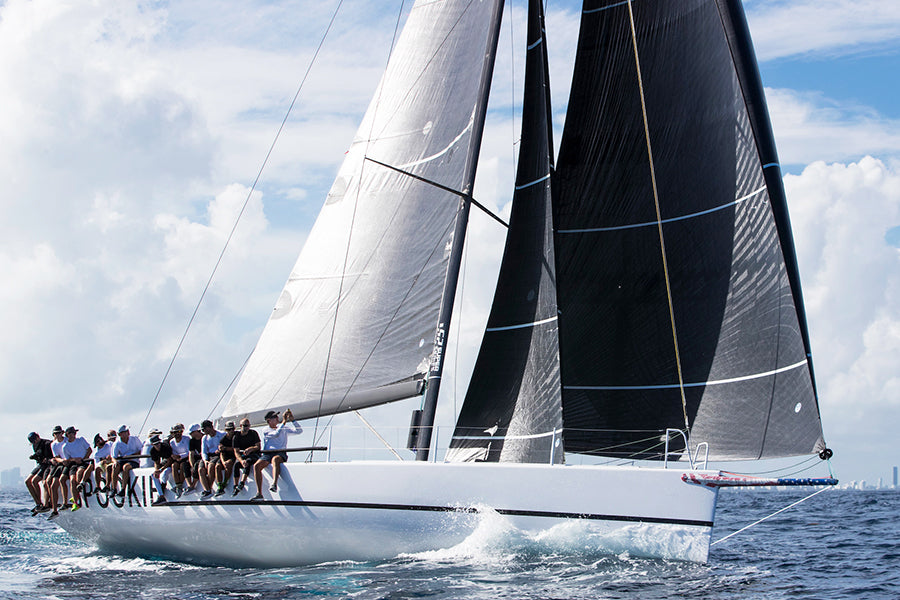
HELIX LO ÚLTIMO DE NORTH SAILS PARA VELAS DE PROA
HELIX, LO ÚLTIMO DE NORTH SAILS PARA VELAS DE PROA
Bajo la denominación HELIX, North Sails propone la eliminación del cabo antitorsión en velas de proa con una solución que logra una óptima redistribución de cargas, garantizando las prestaciones asociadas al 3Di con una reducción de peso sin precedentes. Ya disponible para todas las esloras.
📸 North Sails / Ian Roman
Los diseñadores de North Sails comenzaron a trabajar sobre el concepto de vela d eproa sin cabo antitorsión junto a Oracle Team USA y Emirates Team New Zealand durante la 34 America’s Cup, cuando el radical diseño de los barcos implicó cargas extremas sobre las velas de proa 3Di. El desafío en diseño e ingeniería supuso proporcionar una solución en la que las cargas de las velas de proa fueran redistribuidas desde el cabo antitorsión/estay de proa y repartidas por la vela. Conocido en el seno de North Sails como Load Sharing Technology (Tecnología de Reparto de Cargas), este concepto, cuando se combina con la estructura de grátil 3Di HELIX Luff, es la respuesta de North Sails a lo que otros podrían considerar concepto de vela de proa sin cable.
JB Braun, director de ingeniería y diseño de North Sails, explica:
"Intentar reducir las cargas en barcos y aparejos al tiempo que se mantiene la tensión del estay de proa se ha convertido en una tendencia y ha abierto el campo de las ideas en diseño para reconsiderar la importancia de los cabos de grátil, y en el caso de las velas HELIX, transferir las cargas desde un cabo antitorsión tradicional y redistribuirlo por la vela. La tecnología 3Di encaja mejor con la aplicación de reparto de cargas porque todas las velas 3Di están realizadas con capas de cintas en diversas orientaciones y profundidades para optimizar la distribución de cargas por la vela. Las propiedades de distribución de cargas intrínsecas al 3Di, unidas a la estructura de grátil 3Di HELIX Luff, alejan efectivamente la dependencia de cargas del cable/estay de proa y la redistribuyen por la estructura de la vela, reduciendo potencialmente las cargas totales".
Es precisamente la optimización en la redistribución de cargas por la vela lo que permite conservar las prestaciones de la tecnología 3Di.
"El principal avance con las velas HELIX consiste en que la redistribución de cargas permite a la vela de proa proyectar hacia adelante la estructura en la parte frontal de la vela para conseguir tensión del estay de proa y proyección del grátil, al tiempo que reduce las cargas en el barco, el mástil y el aparejo”, continúa JB Braun. “El diseño enfatiza la estructura innovadora de grátil Helix Luff sin apenas carbono visible, una manipulación del diseño 3Di que proyecta la vela hacia adelante, presionando el grátil hacia la proa del barco. La Tecnología de Reparto de Cargas, unida al HELIX Luff, está permitiendo a North Sails volver a imaginar tanto enrolladores de velas de portantes (Código Cero y velas tipo A3), como velas de través, e incluso traducirlo a ciertos tipos de velas de ceñida. Es casi como un nuevo punto de trimado. La tecnología 3Di, unida a las herramientas del potente North Design Suite, permite mapear y desplazar las cargas para ofrecer velas más ligeras, eficientes y hermosamente lisas".
Sin límite de eslora
Las velas North Helix no están limitadas a una eslora o tipo de embarcaciones, sino que pueden aplicarse a casi toda clase de barcos, desde diseños IRC de mediana eslora a TP52, Imocas, Volvo, WallyCento o maxis de 100 pies, e incluso superyates. El feedback recibido recientemente del TP52 Spookie de Steve Benjamin utilizando velas North HELIX indica que registran aproximadamente la mitad de las cargas de amura que un Código Cero convencional, con protección de grátil similar o incluso mejor. Esto significa menor arrufo del tope de palo, menor flexión lateral, carga de botalón significativamente inferior, cabos, winches y equipamiento de cubierta... Todo con una vela que proyecta mejor y crea más fuerzas de avance. Se reducen muchas de las cargas de cualquier tipo de barco, y para un diseño nuevo existe un potencial significativo de reducción de peso a lo largo de toda la embarcación.
En opinión de Ken Read, presidente de North Sails Group:
"Las velas HELIX son el último avance del 3Di, una tecnología en la que en North Sails invertimos la mayoría de nuestros esfuerzos en I+D. Normalmente avanzamos sin demasiada ostentación, porque conseguir velas más ligeras, rápidas y eficientes es la base de North Sails. Los grandes avances logrados con Helix y la Tecnología de Reparto de Cargas, especialmente en velas de través y enrollables de largo, es la reducción del peso total y la habilidad de ajustar realmente el borde de entrada de la forma de la membrana con un cable o cabo de gratil muy pequeño. No los grandes y pesados cabos antitorsión que se han estandarizado. Estamos muy emocionados con el abanico de oportunidades que ha abierto para la utilización del 3Di en este proceso".
(Extracto del artículo publicado por Seahorse Magazine)
READ MORE
READ MORE
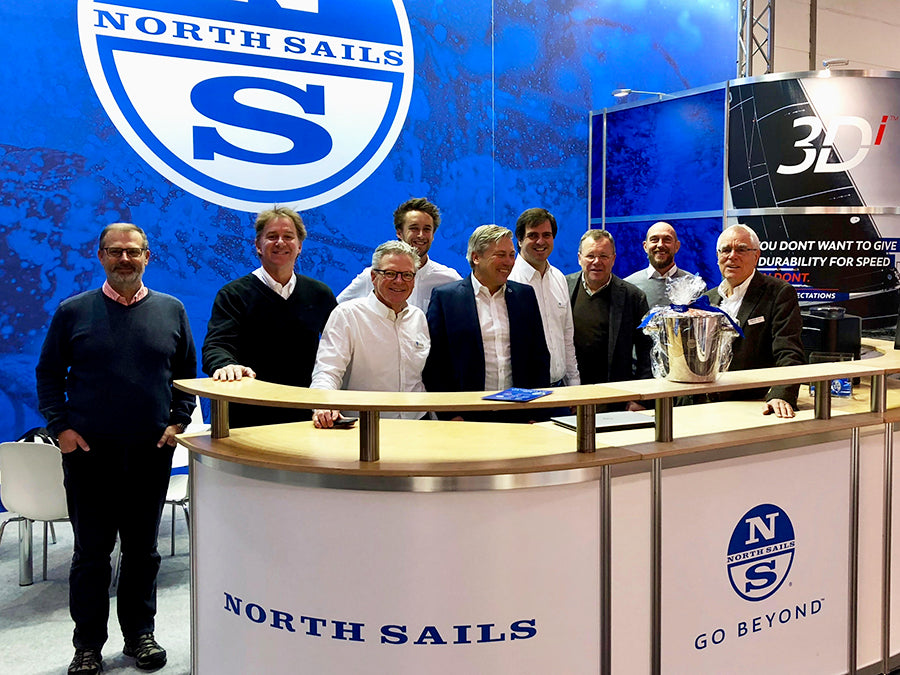
NORTH SAILS AUF DER 50. BOOT DÜSSELDORF
NORTH SAILS AUF DER 50. BOOT DÜSSELDORF
Die Bedeutung der Boot Düsseldorf für die Wassersport Branche zeigt sich auch in der kontinuierlichen Beteiligung der Marke North Sails.
Am Dienstagabend erhielt die deutsche North Sails Vertretung vom Bürgermeister der Stadt Düsseldorf ein besonderes Dankeschön. Als eine von lediglich sechs Firmen wurde Sie für Ihre 50-jährige Messebeteiligung geehrt.
Um dem mittlerweile internationalen Charakter der Messe gerecht zu werden, beraten bis zu 10 Sales Experts aus fünf Ländern unsere Kunden auf dem Messestand. Insgesamt sind in Spitzenzeiten mehr als 25 North Kollegen auf der Messe vertreten.
Einer von ihnen ist dieses Jahr North Sails President Ken Read. Im Interview mit Segelreporter.com zeigt er sich beeindruckt von der Messe, spricht über Technik, Innovation und über Olympia. Reinhören lohnt sich.
Noch bis Sonntag, 27. Januar steht unser North Sails Team um Sales Manager Stefan Matschuck in Halle 11 auf Stand H24 direkt für Sie zur Verfügung.
READ MORE
READ MORE
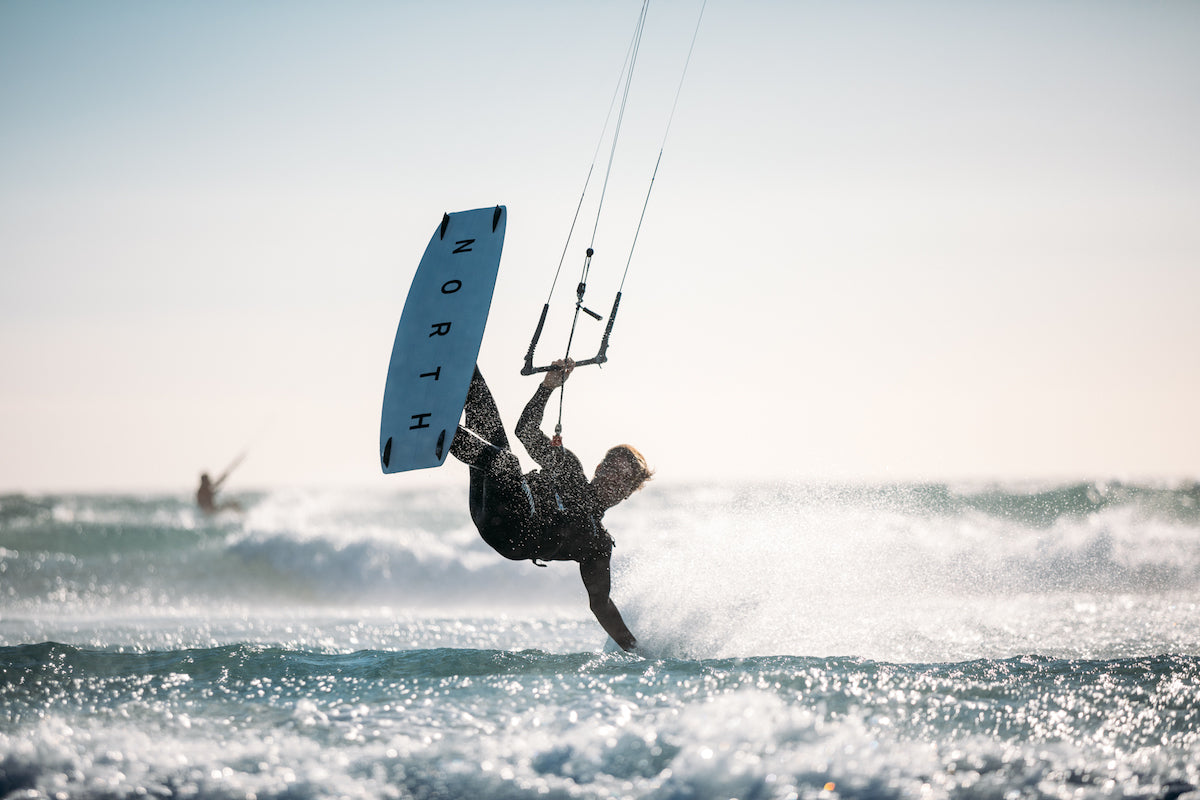
RED BULL KING OF THE AIR
RED BULL KING OF THE AIR
Counting Down To The Main Event In Cape Town, South Africa
Make sure you’re following @northkiteboarding to find out exactly what day the competition is called within the two week window, so you can watch the livestream at redbull.com.
Want to tune into the world’s most jaw-dropping big-air contest?
The Red Bull King of the Air competition, proudly sponsored by North Kiteboarding will be returning to Kite Beach, Cape Town on the 26th January, until the 10th Feb. It’s all about the amplitude as contestants go head-to-head in a “flag out” competition format. During the two week weather window riders will only face-off in the perfect conditions – wind speeds of over 30 knots are ideal for providing the perfect swell from which to boost some extreme maneuvers.
The field for 2019’s Red Bull King of the Air will be made up of top nine riders from the 2018 edition as well as nine wildcards and video entrants. After much deliberation the last nine participants have been chosen, securing their place for the showdown on the windiest day during the waiting period in early 2019.
Confirmed for the 2019 event is defending champion Kevin Langeree, as well as North athlete Nick Jacobsen. He is currently the only person in the world with a set of North prototype kites. Nick won the event in 2017, however missed out on a chance to defend his title last year due to injury.
READ MORE
READ MORE
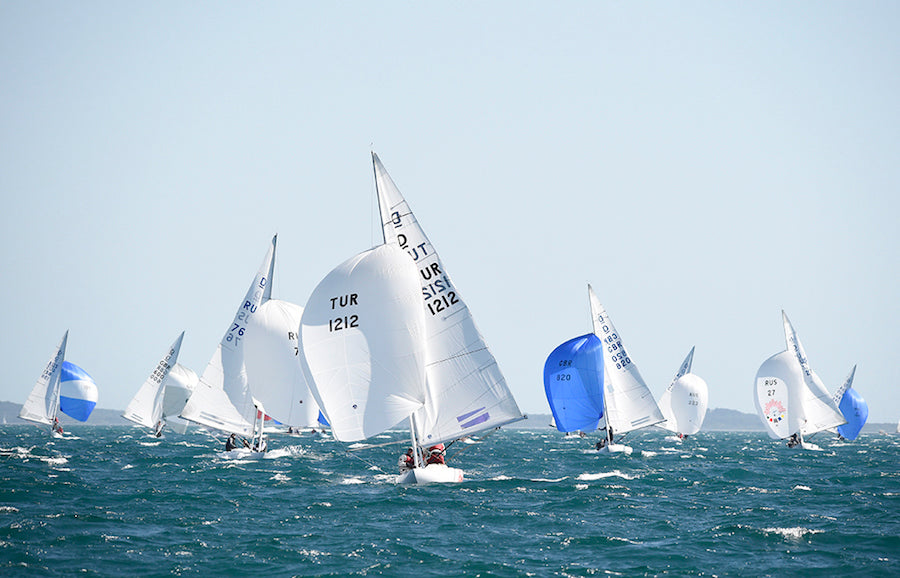
DRAGON CLASS SPEED READING
DRAGON CLASS SPEED READING
A Helmsman’s View
North clients lead the pack to the podium at the 2019 Worlds in Fremantle ©Tom Hodge Media
The Dragon World Championship in Fremantle kicked off the 2019 racing season on a high note for North Sails, with North customers making it a clean sweep on the podium claiming Gold, Silver and Bronze medals.
We talked to Grant Gordon, Silver medalist and first owner-driver about his campaign build up, crew and choice of equipment.
Team Louise Racing, second place finishers ©Tom Hodge Media
You have had a fantastic 12 months in the Dragon class. Tell us about your year and setting up the campaign?
The 2018 season saw our team change format to sail four up on our Dragon. The first step in this process was to scout for talented sailors, and we soon identified two excellent additions to the team. Jimmy Williamson joined us as jib & spinnaker trimmer and Sophie Weguelin in the role of bowman and extra pair of eyes on board. Ruairidh Scott, with whom I have sailed regularly, continued in his key role of tactician and mainsail trimmer. Spending time on the water would unmistakably be critical, and we teamed up with my friend and former Dragon World Champion Klaus Diederichs and the FEVER team. Together we ran a two boat training camp on Lake Garda; which was an ideal venue to prepare for sailing in Fremantle.
Your speed this year has been regularly commented on by fellow competitors. Can you explain a little about how you have achieved this so consistently?
Naturally, we have worked on tuning the rig using the North Sails Tuning Guide as a start point which gives you instant speed out the blocks. From there it’s just fine tweaks in changing winds and sea states as well as finding the optimal trim settings for the sails depending on the conditions. Making sure the boat is well balanced is critical so you can avoid using any unnecessary helm adjustments. As helmsman, I have focused on finding the right heel angle upwind and working with the trimmers to maintain this. Through our training time in Lake Garda, we were able to find trim settings which worked for us and allowed us to be fast consistently.
©Tom Hodge Media
What sails/equipment did you use and why?
We took delivery of a new Pettricrow V6 Dragon in February 2018. Once the mast was tuned correctly, we were confident that we had an accurate platform to build on. The North sail inventory is made of standard production sails, including an A-7+ Mainsail, R-5 Spinnaker, and V-6M and V-6H Genoas. The heavier wind conditions in Fremantle most often favored sailing with the Heavy Genoa. The combination of the A-7+ Mainsail and V-6H Genoa was very fast in the 14-22 kts wind range we often raced in Fremantle. We have also been equally fast with the V-6M medium Genoa in other venues throughout 2018.
What would be your top tip be for success in the Dragon class?
Assemble a team of talented sailors who respect each other and sail together as often as possible. During training, work hard to address your weaknesses. During the race, when the going gets tough, never give up; it isn’t over until you have crossed the finishing line!
©Tom Hodge Media
2019 Recommended Inventory
North Sails has been prominent in the class for many years. We are trusted and supported as our sail products are well developed. Our clients finished first through fourth overall at the 2019 Worlds, all using North Sails Mainsails, Genoas and Spinnakers which speaks for itself.
Louise Racing’s recommended products are: A-7+ Mainsail, LM-2 Mainsail, V-6L Genoa, V-6M Genoa ,V-6H Genoa, BR-9 Spinnaker, and the R-5 Spinnaker.
To upgrade your racing program to World Championship winning sails, contact your local Dragon expert for more information.
©Tom Hodge Media
READ MORE
READ MORE
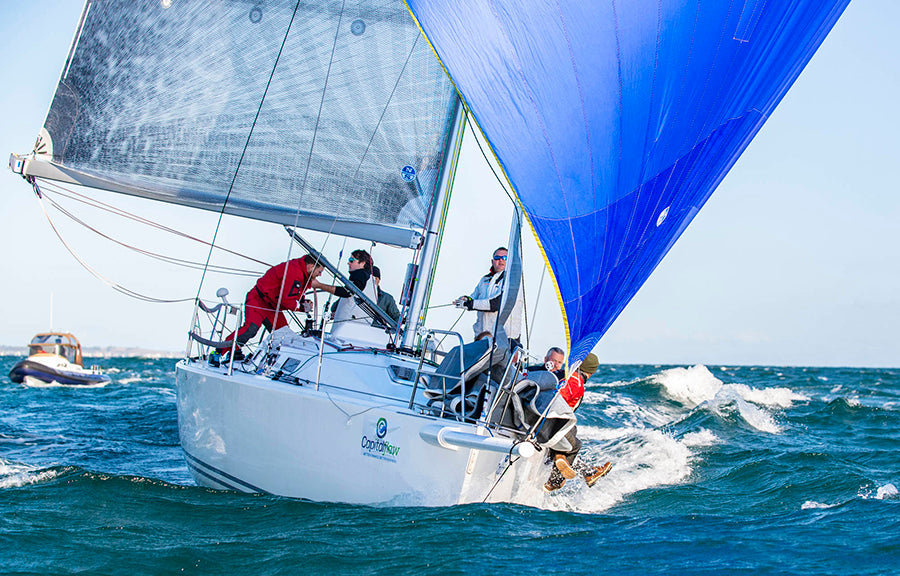
AN AMAZING YEAR FOR NORTH SAILS IRELAND
AMAZING RESULTS FOR NORTH SAILS
"What an amazing year 2018 was for North Sails Ireland and its clients",
Nigel Young, manager of North Sails Ireland says.
© Bren Fogarty
"We are extremely proud of these results and it's really great to play a part in the success of so many winning teams around the country and beyond. The depth of these accomplishments and the spread of classes is down to the hard work and dedication of the North Sails Ireland team, our products and of course our great clients. It is almost impossible to pick stand-out results from the 2018 list but I asked my North Sails Ireland colleagues Prof O'Connell and Shane Hughes for their thoughts. Over to you guys!"
Maurice "Prof" O'Connell (with North Sails Ireland since October 2007)
"It was impossible to pick but I had to try. Stand out inshore boats for me were Dave Cullen's team on "Checkmate XV" and Andrew Algeo's team on "Juggerknot". Standout offshore results were in ISORA with "Mojito", "Aurelia" and "Windjammer" taking overall and class wins".
Dave Cullen has been a North Sails client since 2007 and Andrew Algeo since his J24 days in 2001.
The Half Ton Cup was a particular highlight for "Checkmate XV" and of course their ICRA Boat of the Year award.
Dave had these kind words to say:
"North Sails have been powering "Checkmate XV" and my previous boat "King One" for many many years. I am constantly impressed with their superb quality and attention to detail in design, production and after-sales service. Our 2018 season was a great success - we are always fast. Keep up the good work Prof and the North Sails Ireland team".
It was also fantastic to see Andrew and his team (including my Olympic Star class crew-mate Ben Cooke) taking the J-109 Nationals 2018 title this year (in addition to winning the inaugural WAVE Regatta and the J109 East Coast Championships). It was the icing on the cake for him in a very competitive One Design class.
© Fiona Brown
Andrew said:
“The team on Juggerknot enjoyed the 2018 J/109 and IRC1 season immensely. Better than expected results certainly helped in that and the advice and after-sales service from Prof O'Connell and the North Sails Ireland team played a large part in our achieving those. The products and after-sales support is fantastic, and we have no hesitation in returning to North for "Juggerknot 2" in 2019. Keep up the great work guys!"
Shane Hughes (Started with NSI Oct 2016)
"As Prof says it's hard to chose but the stand out result for me was with Eleuthera GS44 Owner Frank Whelan. Frank has been a North Sails client since 2014 and the turnaround from a slow start at Cork Week to finishing with FIVE straight wins and taking Class Zero / One victory was fantastic. He also lifted trophies in Dublin Bay and in Schull at GAS Calves week. The upwind boat speed was the difference and the new 3Di 780 J2 (Medium Jib) was a big part of that.”
Frank said:
“Working with North Sails has offered the Eleuthera team some real advantages. The New 3Di medium jib performed really well for us in a variety of conditions and the service and support from the North Team is ever present and valuable to us.”
Nigel Young (Founded North Sails Ireland in March 2004)
"What an amazing list of results. Great credit must go to Prof and Shane for making so many of these happen. Stand out for me personally was the Mermaid "Innocence" owner Darragh McCormack who was a new North Sails client in 2018. We had the absolute minimum amount of time to meet, consult sail, photograph, re-design and build his new sails for the 2018 class Nationals. For Darragh to win the Championships was the highlight of the year for me".
See the full story here: Mermaid Fairytale
Darragh said:
"When I contacted North Sails they treated me as an equal and when we discussed my needs, they listened. I quickly felt comfortable working with them and the sails worked amazingly well from the start. Winning the first race with the new sails gave me immediate confidence to go on and win the Nationals. Thanks guys for a great job"
The Final Word from Jonny Swan!
Jonny had this to add:
"I made the decision in 2018 to move to North Sails Ireland. Nigel Young and Shane Hughes have been superb. I cannot thank them enough for all they have done and having Nigel on board in Cork Week and the recent Half Ton Cup in Belgium was a great addition to Harmony. His input contributed to the best result I have achieved out of the 4 half Ton Cups I have competed in and also a significant result in Cork Week where we won the prestigious Harbour Race by a comfortable 2 minutes from over 90 boats that started on the one start line. The expertise and quality of the North Sails product have significantly improved the performance of the boat"
What can I say except a big THANK YOU to all our clients and for their kind words. As one of my old mentors used to say, "nothing happens until someone sells something!", but the selling of the sails is just the beginning of the journey when you work with us.
Next time you are thinking about new sails there is only one place to go... North Sails Ireland.
Take a look below for all our clients results from 2018.
Download Victory List
Sail FAST.
READ MORE
READ MORE
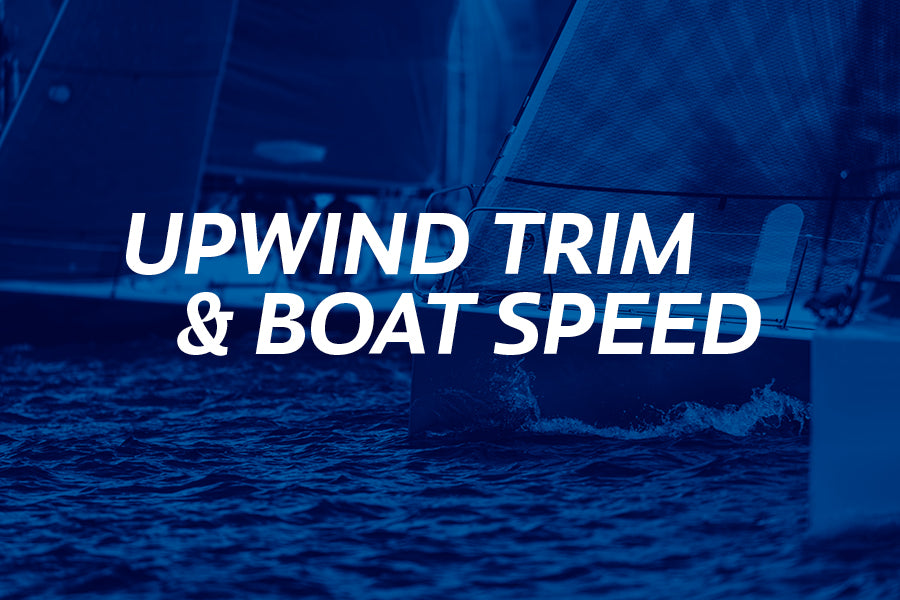
SAIL TRIM TALK AT FOYNES YACHT CLUB
TRIM TALK AT FOYNES YACHT CLUB
Friday 15th February at 19.30.
Presented by Nigel Young & Shane Hughes
North Sails Ireland would like to offer the members of Foynes Yacht club and visitors a presentation on the latest theory and techniques for improving and refining upwind trim and boat speed. The presentation draws on the North U syllabus so successfully used around the world by North Sails representatives and includes the use of North Sails proprietary Sail Trim Simulator to help illustrate some of these trim solutions.
Upwind Sail Trim & Boat Speed
Topics Covered:
This session shows how the angle of attack, depth, and twist combine to control upwind speed, pointing and balance; and how to change the trim to improve performances as conditions change.
Mainsail trim
Jib trim
Helming in light, moderate and heavy air
All are welcome, members and visitors. No entry fee.
READ MORE
READ MORE

FRANCISCO UVA NO TOPO DO RANKING CENTRO
FRANCISCO UVA NO TOPO DO RANKING CENTRO
O velejador de Optimist, Francisco Uva, posicionou-se no Topo do Ranking Centro, ao conquistar o 1o lugar na II PAR, depois dos 3o lugares alcançados na I PAR e na Regata de Natal.
Photo: Luis Fráguas
Parabéns ao Francisco por esta vitória, resultado da consistência do seu trabalho!
Na terceira prova da época, realizaram-se cinco regatas, nas quais velejadores North Sails somaram três vitórias. Augusto Castelo-Branco venceu duas regatas, com a sua North R-2 e Francisco Uva venceu uma, utilizando a North R-1.
Para saber mais sobre as velas North Sails contacte-nos já hoje por email para office.cascais@northsails.com ou por telefone para o 916 857 896.
Good Luck & Sail Fast!
READ MORE
READ MORE
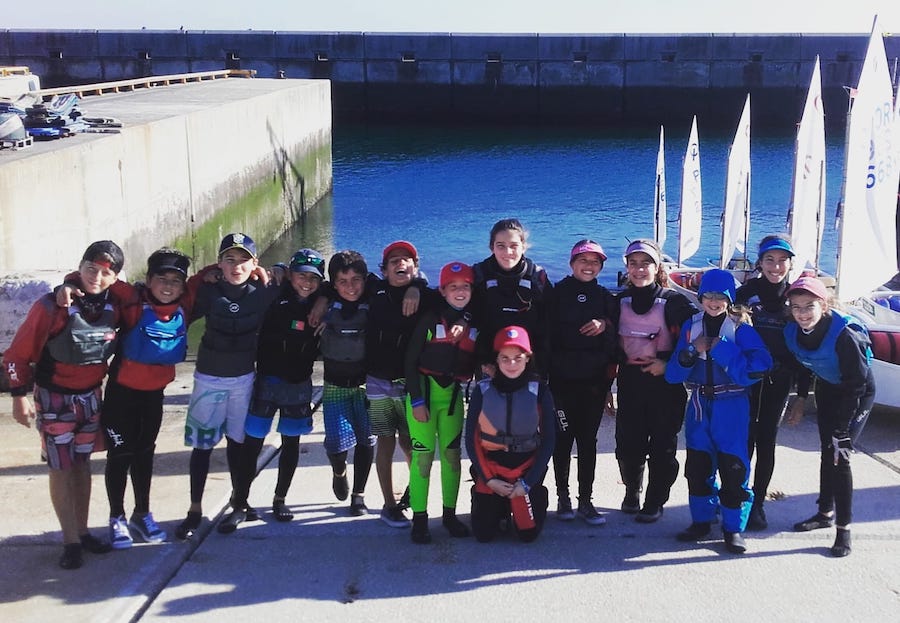
VELEJADORES DE OPTIMIST FECHAM O ANO
VELEJADORES DE OPTIMIST FECHAM O ANO NA XMAS NORTH SAILS CLINIC
Foi com grande satisfação que recebemos 14 velejadores de Optimist, de cinco clubes nacionais, na nossa Xmas Clinic.
Depois de treinos de Natal, seguidos das festividades da época, é com admiração que olhamos para estes pequenos-Grandes velejadores como uns guerreiros. Foram três dias de empenho a trabalhar com base no enorme gosto que têm pela Vela.
Com idades compreendidas entre os 8 e os 14 anos, estes Opti Kids mostraram grande sentido de união e entre-ajuda nos diferentes níveis em que se encontram. Trabalharam em equipa e isso deu-lhes oportunidade de ensinar e aprender através das partilhas que fizeram.
Vicente Pinheiro de Melo (North Sails) e Pedro Bolina (Treinador convidado) foram os responsáveis pelo acompanhamento do grupo.
Foi com entusiasmo que contámos com a presença e colaboração do velejador convidado Frederico Melo, que participou na última edição da Volvo Ocean Race.
"Foi um prazer poder acompanhar a clínica de Optimist organizada pela North Sails Cascais. Foi bom ver um grupo grande de jovens velejadores a tirarem o máximo partido desta excelente iniciativa."
Frederico Melo
Trabalharam-se vários aspectos técnicos com a gama das velas “R” (R1,R2,R4,R5) e os velejadores tiveram oportunidade de observar/ testar modelos de velas North Sails.
Ficamos satisfeitos com as evoluções verificadas entre as clínicas de Setembro e Dezembro e fechamos o ano com objectivos traçados para a continuação da época. Continuar o bom trabalho para alcançar resultados ambiciosos, à escala de cada um, é o desafio lançado.
"Do que gostaste mais/menos? Gostei mais de estar com os velejadores e com os treinadores e, claro, aprender. Gostei menos... de nada... gostei de tudo."
Francisco, 13 anos
"O que foi mais importante para ti? As aulas teóricas foram muito produtivas!! E é algo que eu valorizo muito."
Katharina, 13 anos
"Em que aspecto saíste mais forte? Mais confiança na vela."
Salvador, 12 anos
"Do que gostaste mais/menos? Eu gostei do trabalho de grupo e do convívio."
Constança, 12 anos
À Marina de Cascais deixamos o nosso agradecimento, o seu apoio foi fundamental para o sucesso desta actividade. Queremos dar um especial obrigado à equipa de Marinheiros que foram incansáveis e prestaram um serviço de excelência.
Continuaremos a marcar presença nas próximas regatas de Optimist para apoiar os nossos velejadores e estamos, sempre, disponíveis para dar mais informação sobre a nossa actividade, em Portugal.
A todos os velejadores, que são para nós um motivo de orgulho, desejamos um Ano de 2019 cheio de força, empenho, concentração e sobretudo um ano de Objectivos Alcançados!
Good Luck & Sail Fast!
READ MORE
READ MORE
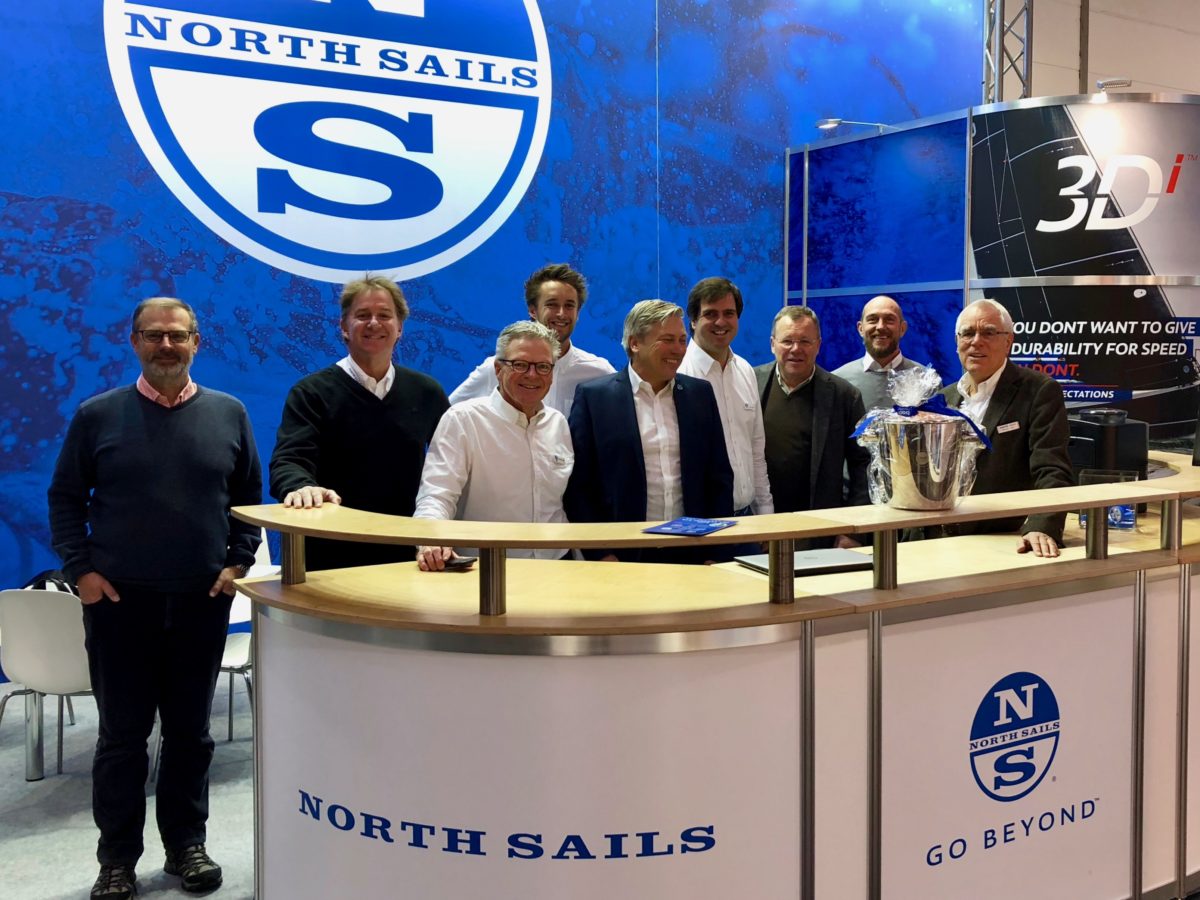
CELEBRATING 50 YEARS WITH BOOT DUSSELDORF
CELEBRATING 50 YEARS WITH BOOT DUSSELDORF
Growing Together With The World's Largest Boat Show
L-R: Stjepan Marinovic, Ken Read, Daniel Schroff, Hinnerk Muller, Stefan Matschuck, Jen Christensen, Gunnar Bahr, Thomas Jungblut
The North Sails team is toasting 50 years of attending the Dusseldoft Boat Show. Our local loft in Germany is one of six brands that have been a part of the show since 1969. Last night the show showed their appreciation by delivering North Sails a bottle of champagne chilled in an engraved ice bucket.
“This show has been crucial for North Sails in building a strong local and global market like few events can,” remarked Stefan Matschuck, country manager for North Sails. Our brand has been around for over six decades, and we’ll be around for many more. Our 50-year presence at Boot Dusseldorf is proof that the global business sees Germany as an essential market. Our stability and position as market industry leader ensure North Sails is an excellent choice for racers and cruisers, Superyachts and one design classes.
Boot Dusseldorf is open through Sunday, January 27th. You can visit Stefan and his local team in Hall 11, Booth H24.
READ MORE
READ MORE
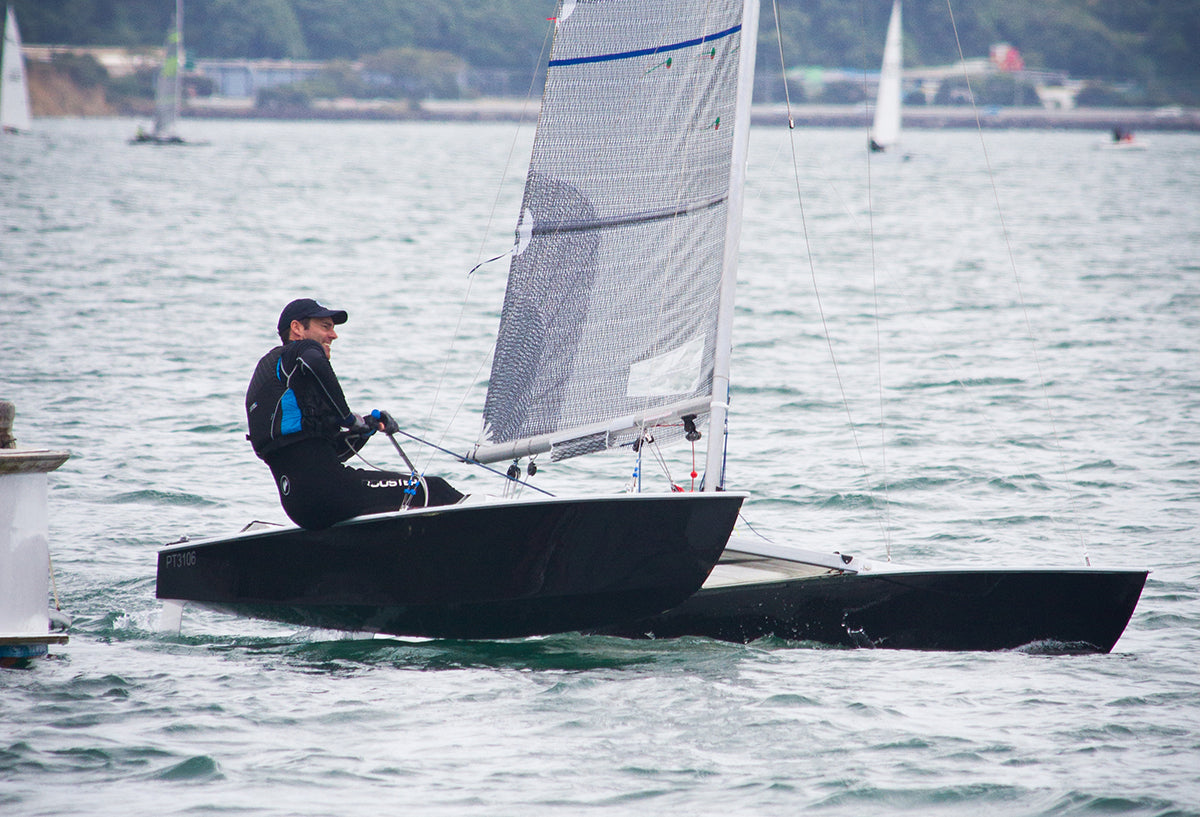
PAPER TIGER NEW ZEALAND NATIONALS
SCOTT’S SECRETS TO WIN PAPER TIGER NEW ZEALAND NATIONALS
Start well. Keep moving. Don’t rest downwind.
A strong fleet of forty-six Paper Tigers battled for the 2019 New Zealand National title on the waters of Evans Bay. North Sails expert Derek Scott dominated the regatta with five bullets in the 8-race event followed by Dylan Tayler in second and Heyden Percy in third. A full North Sails podium!
We caught up with Derek to learn about his secrets to win in such convincing way:
Derek, Congratulations! What were the conditions during the Nationals?
We had a good mix of conditions at the Nationals. The first day was 15 knots at the start of the first race, building to 20 knots by the end. The second race started in 24 knots and built quickly to above 30 knots. Hence the racing being called off for the rest of the day due to excess wind and quite a bit of damage. The rest of the regatta was sailed in shifty conditions with the wind ranging from 5-15 knots.
How long have you been racing the Paper Tiger? Do you sail other one-design boats?
This is my second season in the Paper Tiger. Before the Paper Tiger I have sailed a whole bunch of one-design boats ranging from Olympic 470 to Etchells.
Eight races, five bullets and a second-place discard for a total of only nine points – Amazing consistency in a 46-boat event! What were the three key factors for such great results?
START WELL: The first and biggest aspect is to get a good start and get into the first wind line or shift after the start gun. In the Paper Tiger if you are in 3 kts more wind than another boat the speed difference is huge.
KEEP MOVING: Keep the boat moving fast all the time. Sounds simple but you need to keep full concentration when sailing Paper Tiger as it is easy to “get out of the grove” and the boat will slow down.
DON’T REST DOWNWIND: Keep the intensity up once you have rounded the top mark. Don’t treat downwind as a time to rest. I work harder on the reach than I do upwind. Make sure the sail is trimmed perfectly and you have powered you sail up to get max speed. If there are waves, make sure you are trying to catch as many as you can and rest when the race is over.
What’s next in your calendar?
This week I will be sailing in the Bay of Islands Regatta in the sportboat division on a Magic 25. The next Paper Tiger regatta is in Auckland on the 2nd and 3rd of February with a few more regattas around the country in February and March. The Paper Tiger season ends with the International Championship when the Australians bring a fleet of 10-20 boat and we all race and have fun together.
Full results
Learn more about the North Sails products for the Paper Tiger.
READ MORE
READ MORE
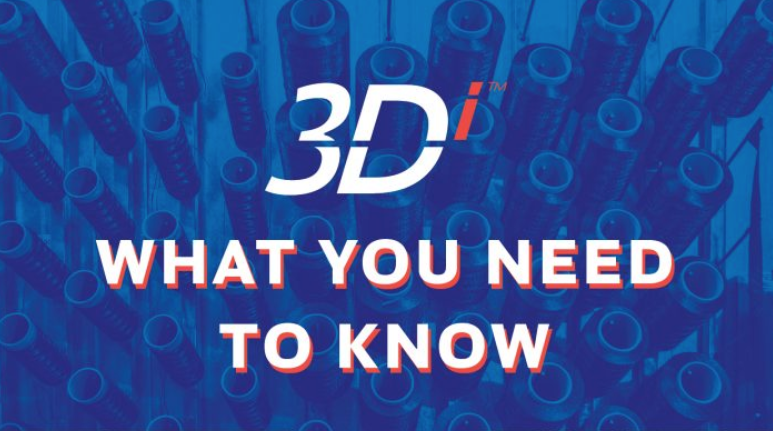
THINK YOU KNOW 3Di?
3Di Outlasts The Adventure
Francois Gabart and his 30-meter trimaran Macif broke the solo around-the-world speed record in December 2017 with a 3Di mainsail that had 45,000 miles BEFORE the start of his record run. 3Di powered all three around-the-world speed records currently held.
No Film. No Delamination.
3Di is composite technology, not a sail laminate. All other sailmakers use laminates of which Mylar film is an integral component. Moisture, sunlight, and fatigue degrade both the adhesives used with the film, and the Mylar itself. These cause delamination and film failure over time.
Another Dimension
North Sails created 3D technology and is the only sailmaker to utilize full-sized molds. 3Di uses reconfigurable molds that are set to the sail’s intended flying shape.
Made By Robots
(mostly)
The only sewing on a 3Di sail is for attaching details such as corner reinforcements and clew straps. The majority of the 3Di process is automated and run by computers.
Unique To You
North Sails has four versions of 3Di to suit different sailing styles and budgets.
It Has To Be North
3Di is a patented sail technology that is exclusive to North Sails. There are many “black” and “gray” sails on the market, but they are actually Mylar based string sails hidden underneath a cover layer giving them the superficial appearance of 3Di without the performance.
READ MORE
READ MORE
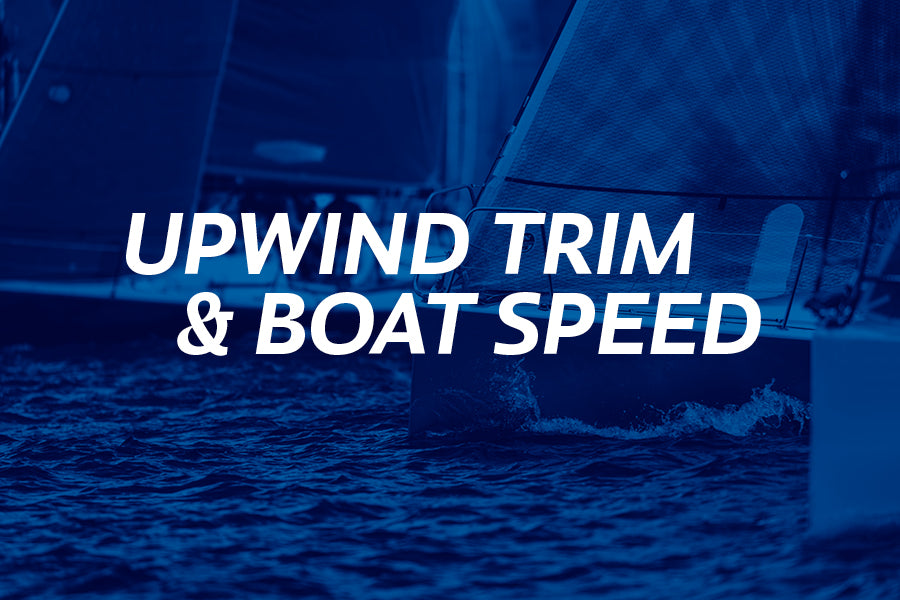
SAIL TRIM TALK AT ARKLOW SAILING CLUB
TRIM TALK AT ARKLOW SAILING CLUB
North Sails Ireland will be hosting a Sail Trim talk at Arklow Sailing Club on Friday 25th January at 19.30. Presented by Shane Hughes.
North Sails Ireland would like to offer the members of Arklow Sailing club and visitors a presentation on the latest theory and techniques for improving and refining upwind trim and boat speed. The presentation draws on the North U syllabus so successfully used around the world by North Sails representatives and includes the use of North Sails proprietary Sail Trim Simulator to help illustrate some of these trim solutions.
Upwind Sail Trim & Boat Speed
Topics Covered:
This session shows how the angle of attack, depth, and twist combine to control upwind speed, pointing and balance; and how to change the trim to improve performances as conditions change.
Mainsail trim
Jib trim
Helming in light, moderate and heavy air
All are welcome, members and visitors. No entry fee.
READ MORE
READ MORE
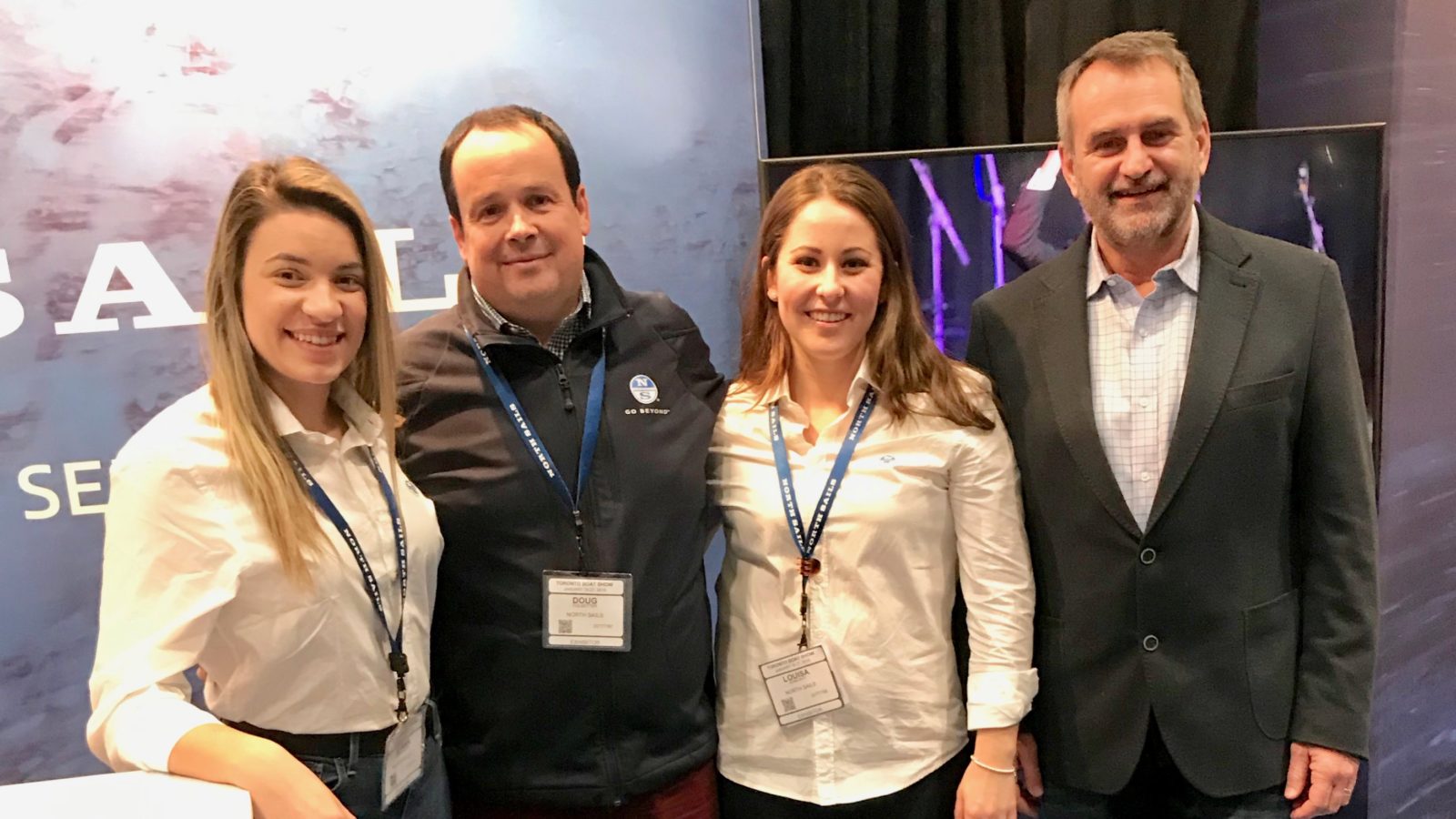
2019 TORONTO INTERNATIONAL BOAT SHOW
TORONTO INTERNATIONAL BOAT SHOW
Visit The North Sails Team at Booth 1623
Our Toronto team kicked off the 2019 Toronto International Boat Show this past weekend with a bang! The team including Hugh Beaton, Louisa Sonosky, Doug Folsetter, Miro Balcar, and Kyann Rentzelos were on hand for preview day to welcome friends and customers.
The team will be on site for the entire show to help you find the right sail for your needs. Take advantage of North Sails Boat Show Special by placing your order today for preferred pricing.
Calling all Beneteau owners! Learn how North Sails can assist you! Make sure to sign up for product information and expert advice. Ask the Toronto team how when you visit the booth.
Not to mention North U Seminars with expert Bill Gladstone will be occurring throughout the show. Bill will be sharing information on Tactics, Tips & Tricks as well as Upwind Sail Trim. Join Bill for these hour-long complimentary sessions, and don’t forget to stop by booth 1623 to talk to our local crew about finding the right sail for you.
Looking for cruising sails? Check out our award-winning 3Di NORDAC for a better cruising experience. 3Di NORDAC reinvents the traditional dacron cruising sail providing more aerodynamic shape without compromising control, speed and comfort; rather it enhances and improves all the above. Order the revolutionary cruising product today!
Interested in our products? Visit us at the Toronto Boat Show or Contact our local loft today!
READ MORE
READ MORE
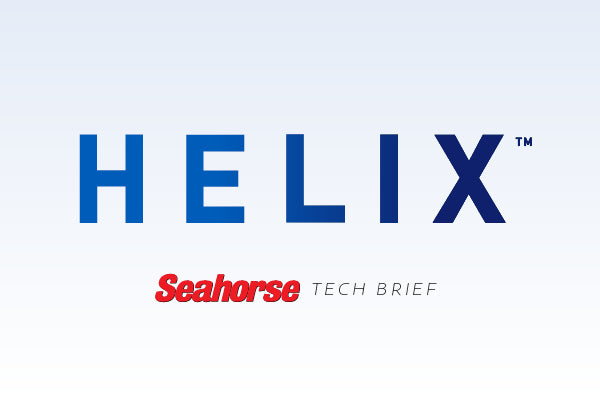
HELIX SAILS WITH LOAD SHARING TECHNOLOGY
HELIX WITH LOAD SHARING TECHNOLOGY
North Sails Is Changing The Narrative on Cableless Sails
This article is republished from Seahorse Magazine, February 2019.
There are few areas of race boat technology harder to keep secret than the latest sail designs and engineering solutions. One of the hottest – and most publicly visible – areas of development right now is perfecting a cable-free headsail that not only goes fast… but that also lasts.
There has been a significant amount of hype and hyperbole about the development of headsails without furling torque-cables, and, like most good ideas, this concept has been around for a while. At North Sails their designers began working on this concept with Oracle Team USA and Emirates Team New Zealand during the 34th America’s Cup, when radical boat designs placed extreme loads on the 3Di headsails. The design and engineering challenge was to deliver a solution where headsail loads were redistributed from the torque cable/headstay and shared with the sail. Known within the North offices as Load Sharing Technology, this feature, when paired with a 3Di Helix Luff, is the North Sails answer to what others may call the cable-less headsail concept.
North Sails new Helix Luff technology transitions headsail loads out of a traditional anti-torsion cable and redistributes them, optimizing the load distribution throughout the sail and potentially reducing the overall loading. 📸North Sails / Ian Roman
North’s head of engineering and design JB Braun explains;
“Trying to reduce loads on boats and rigs while maintaining headstay tension has begun a trend and has opened up design ideas to rethinking the significance of luff cables, and in the case of Helix sails, to transition load out of a traditional anti-torsion cable and redistribute it into the sail.”
3Di technology is better suited to the sharing application because all 3Di sails are engineered with tapes laid in varying orientation and depth to optimize load distribution throughout the sail. 3Di’s intrinsic load sharing properties, coupled with a Helix Luff effectively move load reliance away from a cable/headstay and into the sail structure thus potentially reducing the overall loading.
“The critical breakthrough with Helix sails is that redistributed loads allow the headsail to project forward the structure on the front of the sail to achieve headstay tension and luff projection while reducing the load on the boat, mast, and rigging. The engineering emphasis is focused on the innovative, barely visible carbon Helix Luff structure, a 3Di design manipulation which projects the sail forward, punching the luff out in front of the boat.”
Load Sharing Technology coupled with the Helix Luff is empowering North to reimagine both roller furling downwind (Code Zero and A-3 style sails), reaching sails, and even may translate to some styles of upwind sails. It’s almost like another trim point. The 3Di technology paired with the powerful North Design Suite tools enables mapping and displacing loads to deliver lighter, more efficient, and beautifully smooth sails. North Helix sails are not aimed at one size or class of boat, but are suitable for most boats from mid-size IRC designs to TP52s, Imocas, Volvo Ocean Race boats, WallyCentos and 100-foot Maxis and even Superyachts.
Recent feedback from Steve Benjamin’s TP52 Spookie using North Helix sails was that they were recording about half the tack loads of a conventional Code Zero with similar or even better luff projection. This means less mast tip sag, less sideways sag, significantly less loading on the bowsprit, ropes, winches and deck gear… all with a sail that is projecting better and creating more forward driving force. Many of the loads on an existing boat are reduced – and for a new design, there is significant new potential for weight reduction throughout the entire boat.
North Sails Group president Ken Read expands, “Helix sails are the latest advancement of 3Di, a technology where North Sails focuses the majority of our R&D effort. We often move ahead without a great deal of fanfare because making lighter, and faster and more efficient sails is the bedrock of North Sails.”
“The big gains with Helix and Load Sharing Technology, especially on reaching and broad reaching furling sails, is overall weight reduction and the ability to really adjust the leading edge of the membrane’s shape with a very small luff cable or rope. Not the large and heavy Torque cables that have become commonplace. We are very excited as to all of the avenues that this has opened for the use of 3Di in this process.”
Above: TP52 Spookie. Using North Helix sails they have reduced the tack loads by half while also achieving more forward drive. This creates a lot of potential for weight reduction throughout the boat. 📸North Sails / Ian Roman
Ken Read, President, North Sails Group comments; “The beauty of North Sails is the amount of technology and software that goes into what we create. We made some new Helix Code Zeros in the summer when our brief was to be conservative. Now we are reaching into the finer details with our North Design Suite which allows us to map deeper into these same sails. The best part of being a part of this company is letting our smart people loose to go explore with our North Design Suite. This is a generational opportunity for using 3Di structure and how it all works; these sails will keep evolving and have already spread into non-furling sails, where load-sharing is going to potentially allow upwind headsails to have similar characteristics without the sideways sag. We believe that the North Helix sails are now lighter and faster than any other sail out there.”
“I can tell you that the new sails coming out now are nothing short of phenomenal! With any new concept, North Sails are always searching for a downside. Right now, we are aware that none of these new types of furling sail have been in the marketplace long enough to fully assess their true working life; we are also aware of longevity issues with sails from other manufacturers. That said, 3Di sails outlast the most extreme conditions, and of all the options, we’re confident 3Di will always stand up better than a mylar laminate.”
“What is important for us now is to cover all the bases with a focus on both performance and longevity. Our commitment is to a smoother sail that will furl and perform better than anything else out there. With North Helix sails, this is happening right now.”
Click here to request information about Helix Sails
READ MORE
READ MORE
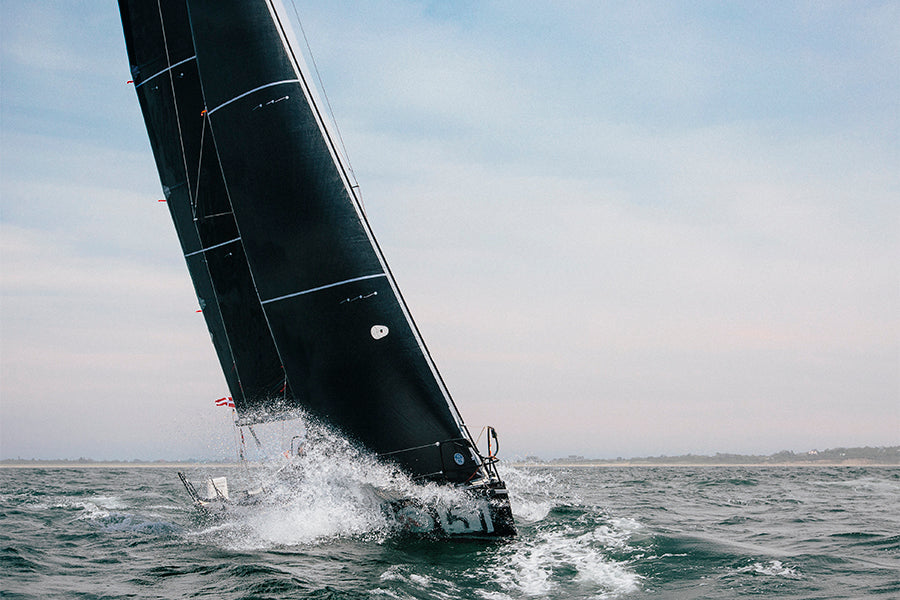
SAILS FOR ORC WORLDS 2019
GET AHEAD OF THE GAME
For the ORC Worlds in Croatia, 2019
Get in touch with your local expert today and order your race-winning sails!
Contact Your Local Loft in Croatia Today
READ MORE
READ MORE

WINTER SERVICE
WE'RE HERE FOR YOU!
Portugal, Continent and Islands
Missing summer already? Contact North Sails Cascais and make sure your sails are ready for next season! Our Certified Service experts are here for you to guarantee your sails inspection and maintenance. Contact us and get information about services provided for sails and canvas.
It's our mission to provide you with expert repairs, maintenance, and upgrades. We know that whether you race or cruise, your sails are a major investment, and we're committed to helping you maximize their performance and lifespan.
Estamos aqui para si 365 dias por ano!
Portugal, Continente e Ilhas
Já está com saudades do Verão? Contacte a North Sails Cascais e garanta que tem tudo pronto no início da época! Os nossos especialistas em Certified Service estão cá para assegurar a inspecção e manutenção das suas velas. Contacte-nos e receba informação sobre os serviços prestados para Velas e Capas.
É a nossa missão prestar-lhe serviços especializados de reparação, manutenção e upgrades. Sabemos que, tanto em cruzeiro como em regata, as velas são um grande investimento e por isso temos o compromisso de ajudá-lo a optimizar a sua performance e durabilidade.
Book your Service Today/ Faça Hoje o Agendamento
Winter Sails Check
It's that time of year to bring your sails in for their annual check up and winter storage. Schedule your 10-Point Inspection now. Our service
1 Year Free Sail Care
If your sails were delivered within the last 12 months, you qualify for our sail care program. Read more
READ MORE
READ MORE
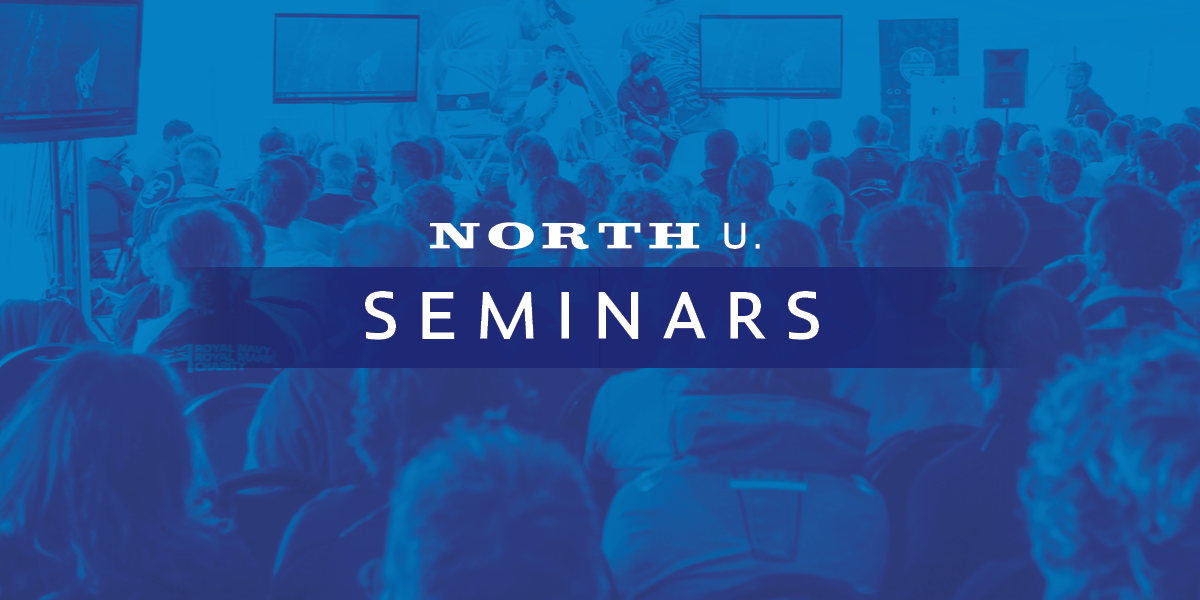
CHICAGO WINTER SEMINAR SERIES
NEW YEAR, NEW SKILLS
Start The Year On The Right Track By Preparing For Your Season Of Sailing
READ MORE
READ MORE

DAVE LENZ TAKES ON THE MERLIN ROCKET
DAVE LENZ TAKES ON THE MERLIN ROCKET
Announcing Our One Design New Class Leader
As the Head of European Design for North Sails, Dave Lenz likes making sailboats go a little faster. He spends his workday with his “fingers in lots of pies,” developing sails for big boats like the TP52 and Fast 40. Now, on the weekends, he’ll be trying to make a Merlin Rocket go a little faster—with his wife as crew.
“She’s a good sailor,” he says. “She was keener than I was actually. It’s a personal sort of thing, just to go sailing and have some fun.”
Dave started sailing as a small child and then moved into Optimists and up through the British Youth Squad system. Olympic skiff sailing eventually led him to big boats, which led to a few jobs in sailmaking before he landed at North Sails in 2006.
“Back then, one design was in a separate building,” he remembers. “Now there’s less distinction, although with unique challenges.
Dave was a member of a top Melges 32 team in the late 2000s. “We won a European championship, and the combined winter championship at Key West, Miami, and Fort Lauderdale. Second and a third in Key West; good, solid results.”
Solid results in the Merlin Rocket will have to wait for more time in the boat. “We’ve only sailed it three times, and only one race,” he laughs. “Hit a top mark, the spinnaker sheets came untied…”
The Merlin Rocket appeals to Dave because it is a development class and tweaky enough to keep his interest. “You can work on sails or rig or foils for slightly different crew weights. There’s lots of controls to power up and depower the rig. And it isn’t as weight sensitive as some other classes.” Newer designs with less rig controls come and go, Dave says, because a lot of people like to be able to fiddle with their boat.
For a sail design expert, there’s also a fresh challenge written into the class rules.
“It has a combined sail area between mainsail and jib, so how you distribute the area between the two sails can vary. There’s definitely development to be done there. We’re also working on developing a 3Di mainsail, and longer term I think we’ll try a jib. The Merlin is a class that lends itself to that technology, and lessons we learn there will be very applicable to the rest of the things we do. It’s a good area for us to grow.”
Yet another appeal is fleet size and quality around the UK. “They have a seasonal circuit of open meetings, you’ll get between 30-60 boats at those events. National championships will be about 70-80 boats. Every year, there’s a regatta in Salcombe, a very nice town; they limit the entries to 120 boats. The boats are cool. And because it appeals to lots of good sailors, it appeals to lots more good sailors which means it is very competitive.”
Dave’s Recommended Inventory for 2019
A new mainsail model will launch very soon, Dave says. “We’re also looking at developing a larger jib than people have been using. That will be a good option, but doesn’t fit a lot of boats at this stage. You have to have a different measurement certificate, but it’s very feasible if it makes crews faster.” Dave is also focusing on other challenges to prepare for next season;
“We need to get a bit fitter. It’s a hiking boat, and there’s a bunch of youngsters that crew on these boats and they’re probably very fit.”
Dave steers and his wife crews, which he says suits the boat well.“The boat does lend itself to slightly heavier helm. It can be a bit nosey downwind, quite a handful when it’s windy.” The couple sailed together before their two kids, currently five and seven, came along. “It’s quite nice to get a chance to do it again,” Dave says. “And there’s a fleet of twelve boats at our local sailing club.”
Looking ahead, he’s excited about their kids joining the fun. “As they get a bit bigger, they’ll be able to come out with us, or replace us at some point.” Meanwhile he’ll just keep trying to make big and small sailboats go faster, seven days a week.
READ MORE
READ MORE
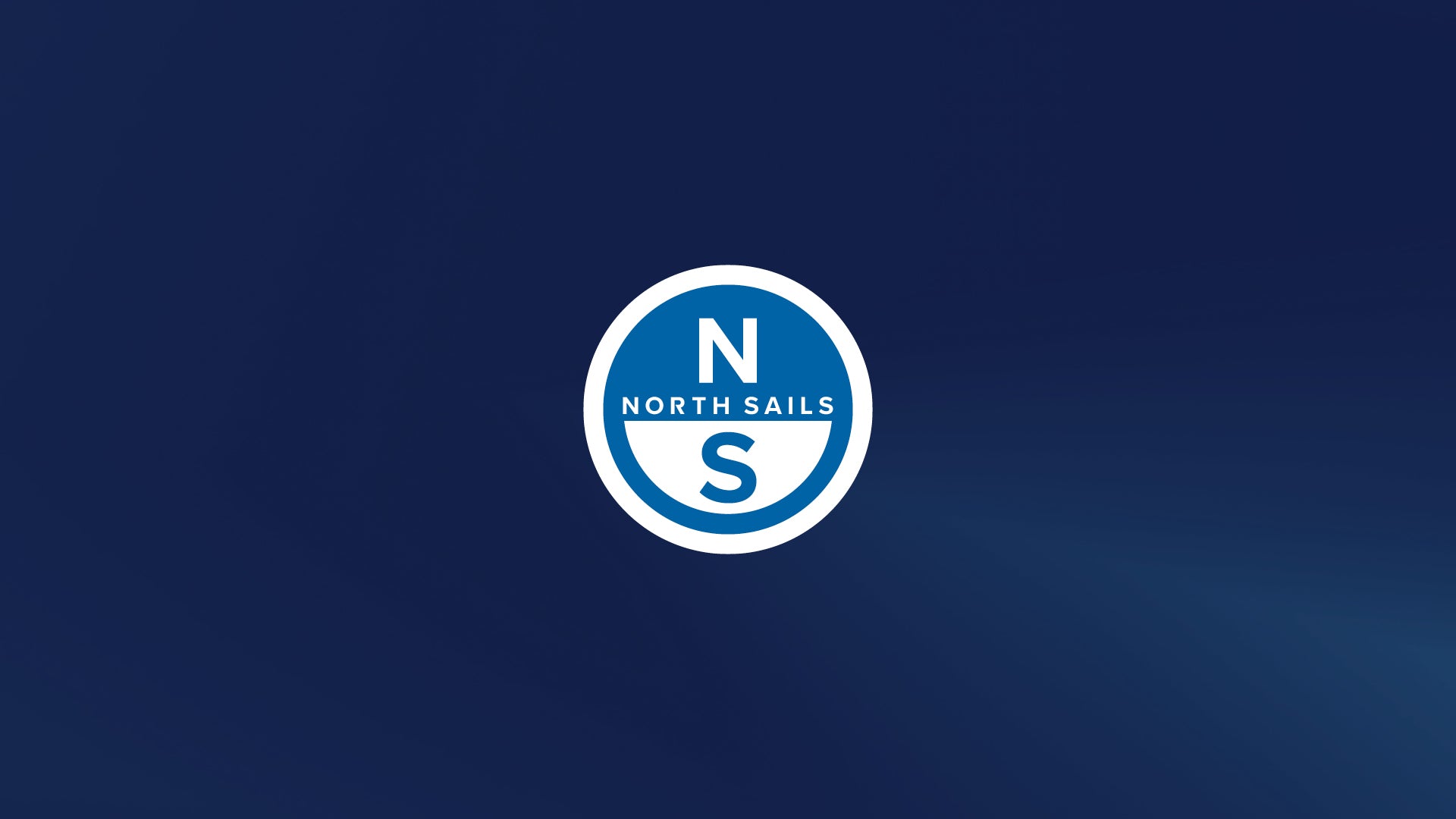
BB-10 TUNING GUIDE
INTRODUKTION
Formålet med denne tuning guide er at give vores BB-10 meter kunder nogle retningslinjer i, hvordan man får størst mulig udbytte af sine nye North Sejl. Tuning guiden er udarbejdet af Theis Palm.Følg vejledningen så nøjagtigt som muligt. Det er dog altid en god idé at eksperimentere på sin egen båd, da mandskabets vægt, bådens balance, riggens beskaffenhed samt lokale forhold også kan have indflydelse på det absolut optimale trim.
MASTETRIM
1. Salingshornenes længde og vinkel er vigtig for storsejlets facon, da disse er med til at kontrollere mastens krumning og dermed også forstagets spænding. Længden af salingshornene måles fra siden af masten til wiren der er placeret i salingshornet, målet er 86 cm, målet tages i midten af salingshornet. Salingshornenes vinkel måles ved at binde en tynd snor fra det ene overvant til det andet og her efter måles afstanden fra snoren og ned til bagkanten af masten skal være 12 cm. Ved samme lejlighed afsættes et tapemærker på 76 cm målt fra siden af masten. Dette mærker bruges senere til trim af fokken.
2. Herefter holdes forstaget og overvanterne ind langs masten og strækkes så meget som muligt. Der afsættes et mærke på wirerne, ud for overkanten af det sorte ved bomfæste. Dette mærke er nu udgangspunkt for mastens hældning.
3. Forstaget placeres i det forreste af de fem huller i skinnen på fordækket.
4. Kontroller at afstanden fra overkanten af det sorte mærke ved bomfæste til dæk målt på siden af masten er 64 cm. Differencen skal korrigeres på det mål på forstaget som følger.
5. Mastens hældning bestemmes således, afstanden fra det afsatte mærke på forstaget til dækket målt parallelt med forstaget til dækket er 1,39 m.
6. Kontroller nu – når den korrekte mastehældning er konstateret – at masten hviler på hele sin trædeflade på mastens fod. I modsat fald vil rig trykket blive ukonstant og forstaget hermed uroligt.
7. Mærkerne på overvanterne bruges til at kontrollere at masten står lige i båden ved at måle fra mærke til dæk i begge sider. Dette er mere præcist end at måle fra mastetoppen.
8. Riggens spænding er svær at definere, da ikke alle er i besiddelse af den samme rigmåler.Til denne vejledning har vi anvendt en Loose Gauge type PT-2 M, hvor vi har følgende mål.
Overvant
Undervant
Let
0-2 m/sek.
27
23
Mellem
3-9 m/sek.
31
28
Hård
10+ m/sek.
4
34
9. Når undervant spændingen er sat, kontrolleres om masten står lige. Tallene på undervanter er kun en guideline, som er erfaringer fra vores egen båd. Det er vigtigt at masten står lige op til 10 m/sek. Herefter strammes undervanterne til masten falder 5-10 cm til læ ved fokke godset alt eftermandskabets vægt.
10. Strutten sætte meget let, masten skal krumme i en jævn kurve fra mastetop til fod.
STORSEJL
TRIM AF STORSEJLStorskødet er meget kritisk og små justeringer har stor betydning for højde og fart. Skøder man hårdt, lukker agterliget mere og giver større rorpres, men til gengæld mere højde. Dette trim kan anvendes i mellemluft på fladt vand, så længe man kan hænge båden ned. I let vind slækkes skødet således at ticklers ved den øverste sejlpind flyver ret bagud. I hård vind skødes godt hjem og hækstaget hales indtil båden igen bliver let på roret uden at man mister højde. I forholdsvis store bølger skal sejlet twiste mere, for at få så stort et styreområde til vinden som overhovedet muligt, samtidigt giver det også bedre fart og hermed også højde. Som tommelfingerregel trimmes den bagerste halvdel på den øverste sejlpind parallelt med bommen i stort set alle vindstyrker.
UDHAL PÅ BOMUdhalet er en anden vigtig trimfaktor. I let vind (0-2 m/sek.) skal sejlet være 4 cm fra sort mærke. I mellemvind (2-5 m/sek.) 2 cm fra sort mærke og over 5 m/sek. hales helt ud på mærke.
CUNNINGHAMUndlad helt at bruge cunningham i let vind. I mellem vind hales kun så meget at rynkerne langs forliget forsvinder. Når vinden er over 7 m/sek. hales der hårdt for at medvirke til at åbne kappen og holde faconen fremme i sejlet.
LØJGANGENJustering af løjgangen påvirker rorpresset væsentligt og bruges alt efter mandskabets vægt. Løjgangsvognen justeres således at bommen, så længe som overhovedet muligt, er på centerlinien af båden, altså til luv (dette for at bevare så stor vindkanal mellem storsejl og genua/fok som overhovedet muligt og for, at kunne sejle maximal højde). Når vinden så frisker og hækstaget er halet maximalt køres løjgangen til læ indtil båden er i balance og let på roret.
HÆKSTAGETHækstaget har to funktioner: at kontrollere dybden i storsejlet og hvor meget forstaget falder mod læ. Det vil sige, at et strammere hækstag betyder et fladere og mere åbent storsejl, mindre forstags fald og hermed også fladere genua/fok. Vi har mærket vores hækstag op for hver 3 cm, så vi hurtigt kan komme tilbage til et godt trim og have båden veltrimmet lige efter mærke rundningerne.
BOMNEDHALBrug aldrig bomnedhalet på kryds. Bomnedhalet bruges på følgende måde: hal til den bagerste halvdel af den øverste sejlpind står parallelt med bommen, både på halv vind og læns, under alle vind forhold.
GENUA/FOK
SKØDEPUNKTSkødevognens placering er kritisk for forsejlenes trim. Som udgangspunkt måles 4,90 m. fra pinboldt i forstag til centrum af skødeblokken til genuaen og 3,10 m til fokken. Forsejlene skal luffe jævnt langs forliget, det vil sige, at ticklers skal stå ens både i top og bund.
SKØDESPÆNDINGGenuaen halse til den står 3 cm fra enden af sallingshornene i alle vindstyrker, underliget er helt inde ved overvant fæste i over 3 m/sek og 1 cm fra under 3 m/sek.Fokken hales til den lige røre salingshornet og akkurat bliver stram langs underlig mærkrt på salingshornet bruges som reference.
FALD SPÆNDINGStræk aldrig faldet for hårdt, da faconen ellers kommer for langt frem. Stræk kun lige så folderne ved løjerterne forsvinder. I let vind må der gerne være små folder ved løjerterne, idet faconen i fokken derved flyttes lidt bagud og dybden øges en smule, dette giver det bedste profil.
SPILER
Spilerstagens fæste på masten bør sidde i en højde af 1,60 m. over ruffet. Stage justeres således, at den står vandret. Derved opnås den størst effektive længde af spilerstagen og det størst mulige projicerede areal til vinden. Vores spiler er designet hertil. I let vind justeres stagehøjden således, at skødebarmene på spileren flyver lige højt, for at få den bedste indfaldsvinkel på det luv sidelig, samtidig med at det læ sidelig er maximalt åbent.På skæring i hård luft må spilerstagen under ingen omstændigheder komme nærmere til forstaget end 50 cm for at forhindre båden kommer ud af kontrol og skærer op.
READ MORE
READ MORE
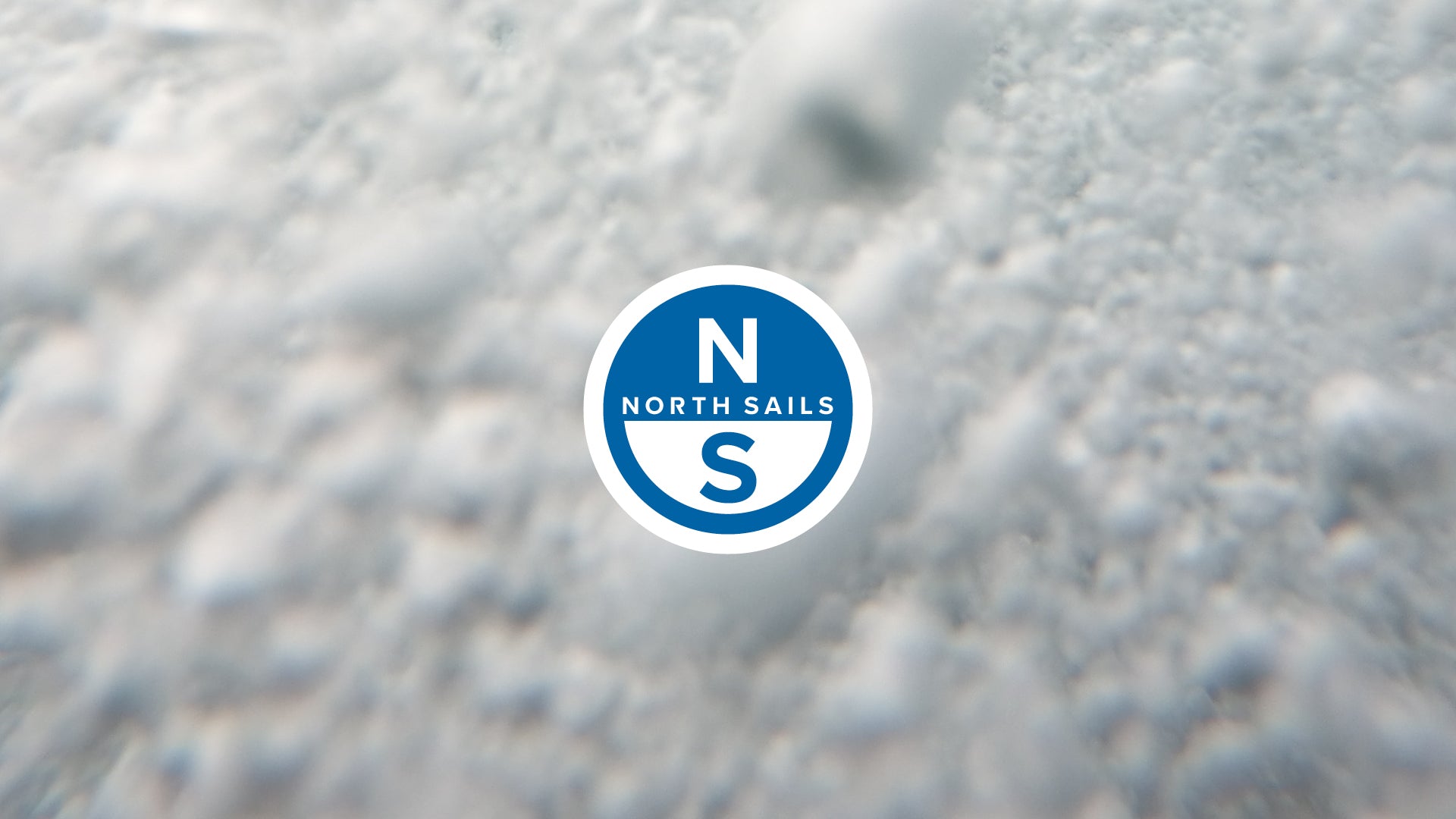
KNARR TUNING GUIDE
Download – Knarr Trimguide (Danish)
The purpose of this tuning-guide is to give our clients in the Knarr class some guidelines on how to get the most out of their North Sails. This tuning-guide was compiled by Henrik Søderlund and Theis Palm.
Always experiment and try finding your own trim using these guidelines. The weight of the crew, the balance of the boat together with specific local wind and sea conditions all have influence on the fastest and final trim.
MAST TRIM
Before stepping the mast in the boat, some very important measurements have to be checked to follow this tuning-guide correctly:
Lead the upper shrouds and forestay along the mast, the upper have to be out of the spreader tips. Pull them as hard as you can and put a mark on all three wires at the top at the black near the gooseneck on the mast. These three marks are now used to check if the mast is centered in the boat, and to check the mast rake.
Place the mast foot the following way. First measure 1.21 meter from the bow and place the forestay here. Move the foot of the mast aft, until you measure 2,00 meter from the forestay position (this is the maximum J measure to the class rules) block the mast on the backside. Leave 20 mm free space on the front side of the mast.The mast foot adjusts the following way: In light winds (0-8 Knots) the mast should be relative hard on the aft edge and pressed 10 mm aft along the mast foot rail for the mast to bend smoothly, and make the forestay loos. In winds above 8 knots move the mast foot back to basic position.
Set the mast rake. Pull the permanent backstay until the forestay stays straight. Then measure the distance from the black mark on the forestay to the deck (along the forestay) the distance is 1,13 meter. Control the distance from the deck to the upper black band at the gooseneck measured on the backside of the mast, the measurement is 80 cm. If there is a difference it should be adjusted on the forestay measurement.
The upper shrouds proper position is located measuring perpendicularly from the center of the mast to the attachment point on the shroud base.
The marks on the upper shrouds (from step 1) are now used to verify that the mast is vertical. This is best done by measure from the mark on the upper shrouds to where the turnbuckles enter the deck – the distance should be the same on both sides. It is very important, that the mast is straight from side to side and not being distorted at deck level.
The lower shrouds are placed 35 cm behind the upper shrouds according to the class rules.
All rig tension measurements we used a Loose Gauge PT-2. The upper shrouds should read 11 as a base setting. In 9 – 15 knots tighten 1½ turn and from 16 knots and up, another 1½ turn.
The lower shrouds are tensioned, so that the mast is completely straight in the boat. The lowers is tighten in the same time as the upper shrouds. In general the rig is very slack to get the mast as fare forward as possible on the downwind leg.
The jumpers are adjusted by pulling the permanent backstay. Then look up along the sail track and check that the jumpers are equally tight on both sides. If this is not the case, they should be adjusted till the mast is completely straight. When the mast is relaxed it will bend slightly forward.
SAIL TRIM
Mainsail Trim
The mainsheet is critical in setting the shape of the sail and small adjustments can have a big effect on speed and pointing. If the mainsheet is sheeted tight, the leech will close and put more pressure on the rudder – on the other hand pointing ability is improved. This can be used in medium winds and flat water, where the boat can be kept flat by hiking. In light winds the mainsheet is eased so that the top tell-tale flies straight. In heavy winds, sheet tight and pull the backstay until the rudder feels light again (but without losing pointing). In large waves, let the leech twist a little more to have a wider steering angle. This increases speed, and therefore pointing, at the same time. As a thumb rule the top batten is trimmed parallel to the boom in almost all wind strengths.
OUTHAULThe outhaul is also an important factor when trimming as it controls the draft in the bottom of the sail. In very light winds (0-5 knots) the sail should be 2 cm from the mark. In medium winds (5-12 knots) about 1 cm from the mark and in more wind than this pull the sail all the way to the mark.
CUNNINGHAMDo not set the cunningham in light winds. In medium winds set the cunningham so that the wrinkles along the luff disappear. When the wind exceeds 15 knots pulled it hard to open the leech and keep the draft forward in the sail.
TRAVELLERAlways to windward in any condition
BACKSTAYThe backstay has two functions: To control draft in the mainsail and to control forestay sag. When the backstay is tightened, the mainsail flattens, the leech opens, and there is less forestay sag and therefore, a jib with less draft. It is a good idea to put marks on the backstay, e.g., every 5 cm, to facilitate finding the right trim after mark roundings, etc.
KICKINGSTRAP/BOOM VANGThe kickingstrap is used when sailing upwind in strong wind and also downwind. Upwind, the kickingstrap push on the mast and opens the leech in the bottom part of the mainsail and keeps the boom down when easing in the gusts. Never use the kickingstrap upwind in less than 18 knots and use caution. Remember always to ease the kickingstrap for downwind sailing when bearing off, otherwise the boom might break. Downwind the kickingstrap is trimmed so that the top batten is parallel to the boom – on all sailing angles and in all conditions.
Jib Trim
North Sails jibs are made for sheeting points both on deck and cabin top. However, we recommend sheeting from the cabin top to make the jib-leech twist more freely and thus allowing the gap between main and jib to be as wide as possible. Furthermore, the control of the jib is improved (particularly in heavy winds) because of the shorter distance from clew to block. The jib-lead track is placed with its center 48 cm (fig2A) from the boat’s centerline.
When sheeting from the cabin top, we recommend using a swivel block on the deck, so that the jib sheet does not create an overwrap on the winch.
SHEETING POINTThe position of the jib lead is crucial for the jib trim. As a reference point measure 2.68 m from the pin in the forestay to the centre of the block (if the lead is on the cabin top). The jib shall luff evenly, i.e. tell-tales must fly at the same time in top and bottom.
JIB SHEETAs a general rule sheet the jib so that the middle batten is parallel to the centerline in most conditions, but in light winds (0-5 knots) leave 2-3 degrees of twist. If the sea is lumpy, move the jib lead 2 – 3 “holes” forward to get more draft and power in the jib (the middle batten shall still be parallel to the boat’s centerline). In heavy winds move the lead 1 – 2 “holes” back without letting the foot of the sail become tight and flutter.
HALYARD TENSIONNever pull the halyard too tight. This will cause the draft of the jib to move too far forward. Pull it until the wrinkles in the luff disappear. In light wind the best shape is obtained when leaving small wrinkles in the luff.
Good luck on the water!
READ MORE
READ MORE
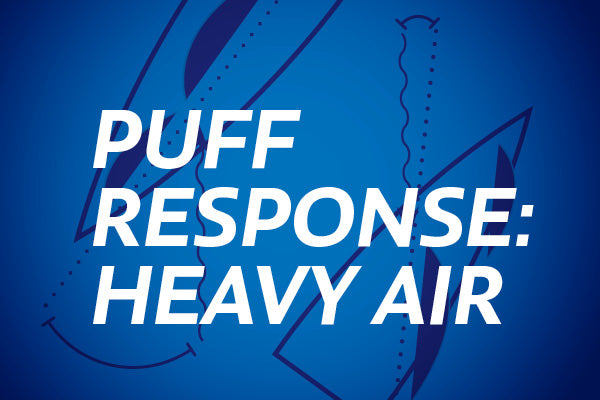
PUFF RESPONSE UPWIND IN HEAVY AIR
PUFF RESPONSE UPWIND IN HEAVY AIR
By Bill Gladstone
This article is derived from the North U Trim Seminar. North U offers seminars, clinics, books, media, online training, and coaching. Visit NorthU.com to Learn More
Proper response to a puff is critical to optimum performance in variable conditions. In our previous segment, Puff Response Upwind, we covered the best response to a puff in moderate air. In this segment we’ll look at Puff Response Upwind in Heavy Air.
Heavy Air vs Moderate Air
We’ll start by drawing a distinction between heavy air and moderate air: In light to moderate conditions as the wind speed increases our boat speed increases. We define Heavy Air, at least for the purposes of this article, as winds where an increase in wind speed does not result in an increase in upwind boat speed. Many boats cross this threshold around 15 to 20 knots True Wind Speed.
Fig. 1: As the wind increases in heavy air our boat speed does not.
The Puff Hits
As a puff hits the True Wind increases (“GUST!”). The stronger True Wind creates a stronger Apparent Wind and a wider Apparent Wind Angle. The best response is to trim sails to match this wider Apparent Wind Angle – usually by lowering the traveler. The trim response maintains a balanced helm and consistent angle of heel.
It can be helpful if crew looking upwind can call or count down the arrival of puffs so the main trimmer and driver can be ready (“Puff in 3-2-1!”).
Ideally the jib would be eased in concert with the main but in reality that can be hard to do – and even harder to retrim. On boats where you can play the jib it can be very fast. J22s come to mind as one boat where the jib and main are both played through the puffs. See Figure 2.
Fig. 2: A puff results in stronger Apparent Wind and a wider Apparent Wind Angle. The proper initial response is a change in trim – lowering the traveler (or making other adjustments) to match the new wind angle.
Acceleration – NOT
The trim response maintains a balanced helm and consistent angle of heel. In heavy air we then feather up to point a little higher. Feathering up will push the apparent wind forward… See Figure 3.
Fig. 3: As we feather up in the new wind the apparent wind moves forward and we can re-trim.
Limits
You can feather up in puffs to a point… but your rig can never outpoint your keel. At some point you’ll be lowering the traveler (or adding twist or… see below) and leaving it down.
Wasted
If we don’t respond to the puff with a change in trim then we waste the energy of the puff in heeling force, weather helm and leeway rather than take advantage of it with a smooth feather up to a higher angle.
More…
Why a Trim Response? Why not just feather the helm?
Why not just feather through the puff? Because a Trim Response is faster. A trim response maintains a balanced helm and reduces leeway. A feathering response gives you a brief bit of height (usually accompanied by more heel and leeway). In actual practice your response will likely be a combination of both trim and feathering. Feathering alone will not be fast or sufficient in most conditions.
Why use the Traveler?
In this depiction we use the traveler to respond to a puff. Lowering the traveler reduces angle of attack. This is often the preferred method on a moderate displacement keel boat.
Alternatives to the Traveler
On some other boats – for example high performance boats with square top mains and high aspect keels, and on multi-hulls – it is more effective to play the mainsheet and change twist. On still others – for example, Etchells – a big pull on the backstay is very effective.
Some boats use “Vang Sheeting” (where the mainsheet controls angle of attack) and respond to puffs by playing the main.
Which is Best?
Snappy Answer: Whichever is fastest.
Longer Answer: You’ll have to test to see what works best on your boat; but the bottom line is that a Trim Response is preferred to just feathering/ steering through the puff.
Puff Response in Heavy Air
In actual practice your response will likely be a combination of trim and feathering. Feathering alone will not be fast or sufficient in most conditions.
© copyright Bill Gladstone
READ MORE
READ MORE
BENETEAU X NORTH SAILS AT THE TORONTO BOAT SHOW
TORONTO INTERNATIONAL BOAT SHOW
Sign Up For Product Information And Expert Advice
READ MORE
READ MORE
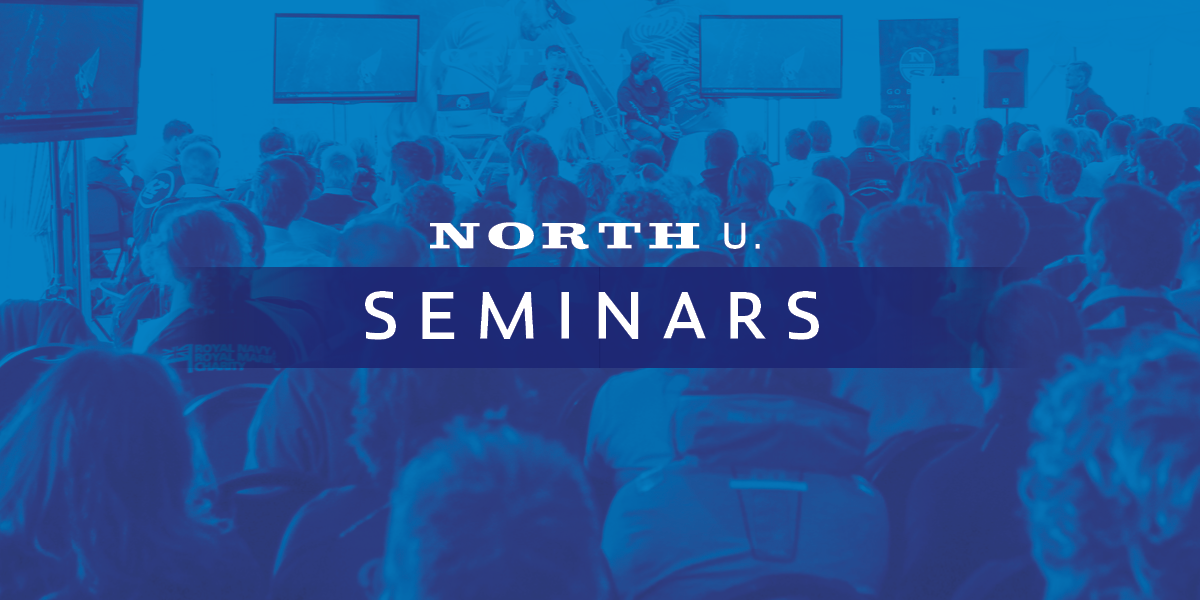
DETROIT WINTER SEMINAR SERIES
NEW YEAR, NEW SKILLS
Start The Year On The Right Track By Preparing For Your Season Of Sailing
READ MORE
READ MORE
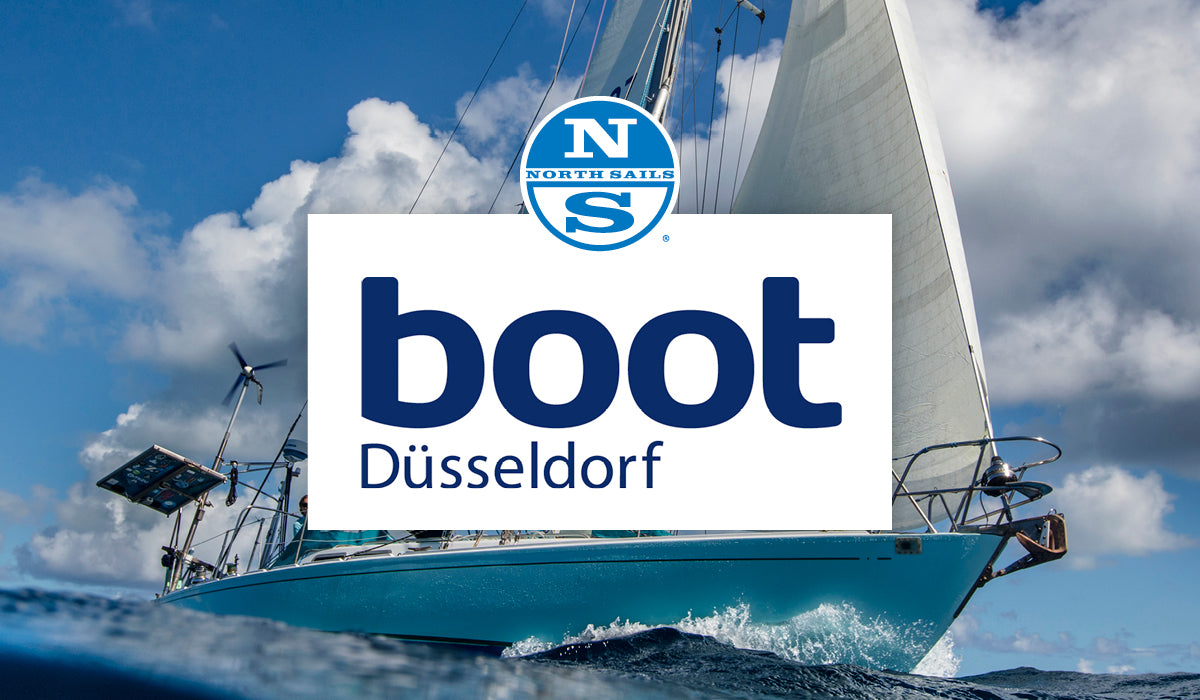
BOOT DÜSSELDORF 2019
WIR SIND DABEI!
Vom 19. - 26. Januar ist Daniel Schroff an der BOOT in Düsseldorf.
Den North Sails Stand finden Sie in der Halle 11, Stand H24.
Gerne können Sie schon heute einen Termin mit ihm abmachen: 071 680 00 80
READ MORE
READ MORE
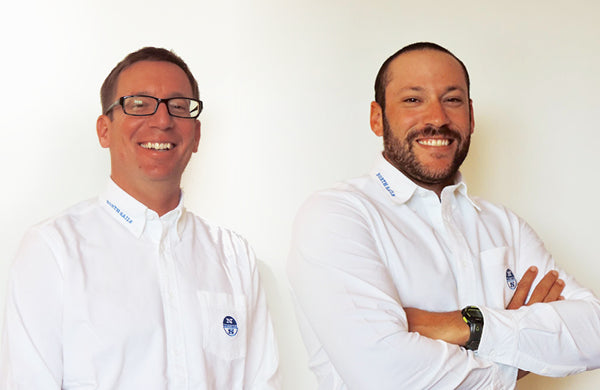
WELLES & HOROWITZ MAKE THE US SAILING YACHTSMAN OF THE YEAR SHORTLIST
WELLES & HOROWITZ MAKE THE US SAILING YACHTSMAN OF THE YEAR SHORTLIST
A Successful Year On The Water Pays Off For North Experts
The annual rundown of the year’s “best in the U.S.” represents a wide range of accomplished sailors from various disciplines and at different stages of their respective careers. All Yachtsman finalists earned their spot on this exclusive list by winning a J/Boat World Championship in 2018. These finalists are seasoned veterans in the sport, and have been tested over time and exceeded expectations. Each sailor on this list represent their own unique pathway after a victorious season on the water within their respective classes.
Some of these sailors were selected based on their consistent exceptional performances throughout the 2018 season and some were chosen for their signature win(s) at major international or national events. These sailors have mastered their craft and have focused on the importance of precision and performance in their competitive sailing efforts, which has shown as a result in their success at major events.
Among the group of fantastic sailors chosen for the shortlist, we are pleased to share that our very own Will Welles and Zeke Horowitz have made the Finalist List for US Sailing’s 2018 Rolex Yachtsman of the Year award. Both Will and Zeke have shown utmost talent in One Design classes all over the world, and we couldn’t be happier for the both of them after all of the hard work they have put into their 2018 sailing season.
Will Welles (Portsmouth, R.I.) – Will Welles is a Two-time J/24 World Champion works out of North Sails Rhode Island and has more than eighteen years of sailmaking experience. Will has won multiple National and North American titles since he joined North in 2007. In 2018, Will won his second J/24 World Championship title in five years. Welles was the runner-up at the J/24 North American Championship and later in the year he dominated the fleet of 89 boats at Worlds.
Zeke Horowitz (Annapolis, MD.) – Zeke Horowitz is also a two-time World Champion and is a key member of the North Sails One Design Team based in Annapolis, MD since 2015. Zeke attended the College of Charleston where he was selected as an Honorable Mention All-American twice as well as an Academic All-Conference All-American. Zeke holds eight North American / National championship titles in various classes. In 2018, Zeke won the J/22 World Championship and secured the Flying Scot North American Championship title. He also placed second at the Viper 640 North American Championship.
Awards Criteria: What Makes A Yachtsman?
Must be eligible to represent the USA under World Sailing regulations, and actually representing the USA at the event(s) for which the nominee is being considered for the award.
Awards recognize the individual male and female U.S. sailor who has demonstrated on-the-water excellence in the calendar year. In the past, there have been outstanding situations resulting in a skipper and crew nomination being accepted (Olympic years).
Must have won a major international or national event and/or performed at a high level consistently in multiple events against elite competition.
There is no minimum age required to win the award.
The awards are not based on career racing results (lifetime achievements) or philanthropic contributions to the sport.
Established in 1961 by US Sailing and sponsored by Rolex Watch, U.S.A. since 1980, the annual presentation of US Sailing’s Rolex Yachtsman of the Year awards are considered the sport’s ultimate recognition of an individual’s outstanding on-the-water achievements for the calendar year.
READ MORE
READ MORE
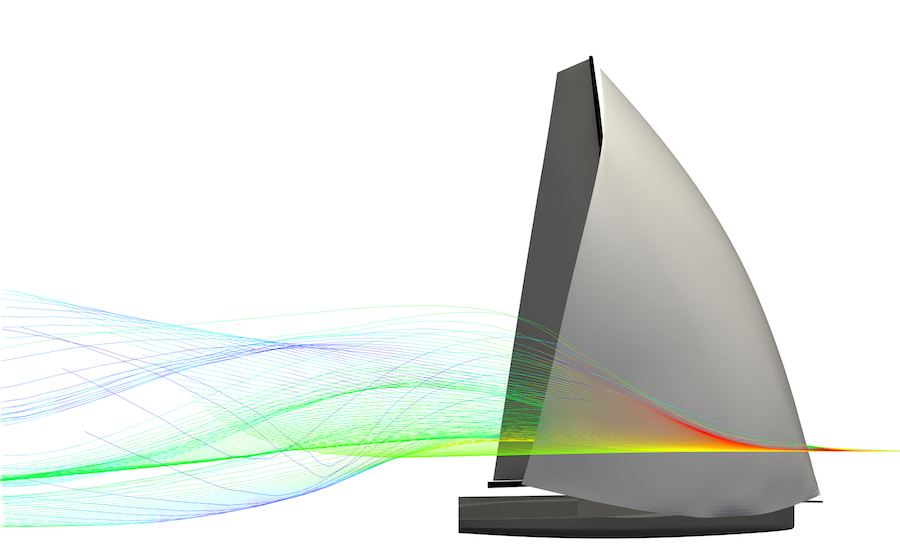
2018 DESIGN MEETING DEBRIEF
2018 DESIGN MEETING DEBRIEF
North Sail Designers Combine Forces In Marblehead
© North Sails
In the final weeks of 2018, 23 North Sails designers from eight countries gathered in Marblehead, MA for a team debrief about progress in 2018 and what they’ll be working on in 2019. Hosted by JB Braun, this international brain trust talked through sail development, refinements to the North Design Suite, and 2019 baseline packages for race teams.
“Everybody said it was a tremendous meeting,” JB said when we caught up with him at his office a week later. “They felt that it was worth their time; not only valuable to the company, but also valuable individually.” Then he laughs. “Now we’re trying to figure out why.”
2018 TP52 Super Series © Nico Martinez
Mickey Ickert has an answer. “Face to face contact with the guys is good, as most of our work is remote,” he says. “Rather than presenting topics we worked through them, progressing as a whole group.”
Magnus Doole chimes in to define that progress in more detail. “As designers, we are encouraged to push the boundaries of both the design and structures of the sails we create; doing this as a team to pull our collective thoughts and reasoning was reinforced. I guess that’s ‘Go Beyond’!”
The North design team first came together for a global meeting in 2017. One year later, the core group—leading designers from key grand prix classes (TP52, Pac52, RC44, Mini Maxi, etc.), covering almost every time zone—were joined by some new blood for three days of collaboration and discussion. “Seeing these talented people – some a little younger,” Mickey says with a smile, “working ‘full noise’ on the same goals…it was refreshing, and everyone felt able to contribute.”
Brodt Taylor, a first-time attendee, agrees. “It flowed together really easily. We were constantly trying to move to the next thing, but at the same time, we didn’t let anything fall by the wayside.”
Technical Breakthroughs
The agenda included summarizing achievements from 2018 and stating goals for 2019. Magnus Doole says, “Each head of department was pushed to take the next step (whether defined or out there in the ether to be found).”
JB is more specific. “All the designs that we did, we made a spreadsheet analysis in the kind of detail that a sail designer would be interested in. We did the graphs…” he points to a model on his enormous computer screen. “Each one of these was done per class. Then the lead designer summarized what they did.”
Helix
Another innovation reviewed by the design team was Helix sails, which use Load Sharing TechnologyTM to transition luff loads away from an anti-torsion cable and move it into with sail structure in offwind sails.
“We’re taking the structure of the sail, and supporting the luff,” JB explains. “That allows the luff to kind of rotate to weather.” As soon as you’re off the wind, a straight luff is no longer ideal. “You want positive luff curve to match the bend in wind from top to bottom. The entry is very nice, more consistent and even up and down. There is still a very small luff cable or rope, so you can adjust the tension.”
Load Sharing Technology coupled with the Helix Luff reimagines both roller furling downwind (Code Zero and A-3 style sails), reaching sails, and even may translate to some styles of upwind sails.
Baseline Packages: TP52
2018 marked the first year that baseline packages were offered in the TP52 class, which is on the leading edge of sail development. The approach worked well and 2019 packages are well under development. “The individual design teams can tweak from there—or just use the baseline designs,” JB says.
2018 TP52 Super Series ©Nico Martinez
One significant breakthrough from this approach was the “bubble-less” jib. When designers spotted an area of extra drag created by narrow sheeting angles, they used the North Design Suite to tweak an already highly refined sail.“We used our tools and design to try to minimize this separation zone,” JB explained. The result was a faster jib.
Development continues for the 2019 TP52 season, of course. “We’re going to make a new layout and structure that’s going to be higher modulus and lighter than we did last year. We have a whole team set up to look at that.”
Once a design tweak like this proves successful in one class, it can be applied elsewhere. “Some things like tape density, or how the tapes are laid into the sail, that can go in and globally affect every single sail that North builds,” JB adds. “All this work filters back, even to your cruising customer, if it’s appropriate for that type of sail.”
2018 Yachting Cup, Pac 52s @ Bronny Daniels / joysailing.com
Tool Tweaks
The North Design Suite is constantly improving as well. Michael Richelson, who heads up NDS development, attended the meeting. Mickey Ickert says, “Having the latest tool updates available with the guys who write the software right there is pretty powerful. It was an impressive mix of people working well together.”
2018 RC44 World Champions, Nico Poon’s Charisma © Studio Martinez
A “Tremendous Success”
After three days of focused discussion in one room, JB says all 23 designers went home freshly inspired—though he admits the technical nitty-gritty may not be that exciting to anyone else. “We have talented designers that are passionate about making boats go faster. North Sails is providing us a unique opportunity, in software, machinery and organization, allowing us “designers” to operate at a super-high level, to get out and build sails, then get instant feedback from professional sailors. And this whole thing is happening right in front of them!”
“Passionate people, doing something that they love…” he shrugs. “They’re being heard, and they’re contributing to something bigger than what they’re doing individually. Maybe that’s why our meeting was such a tremendous success.”
North Sail Designers in Marblehead, MA, USA 2018 © North Sails
READ MORE
READ MORE
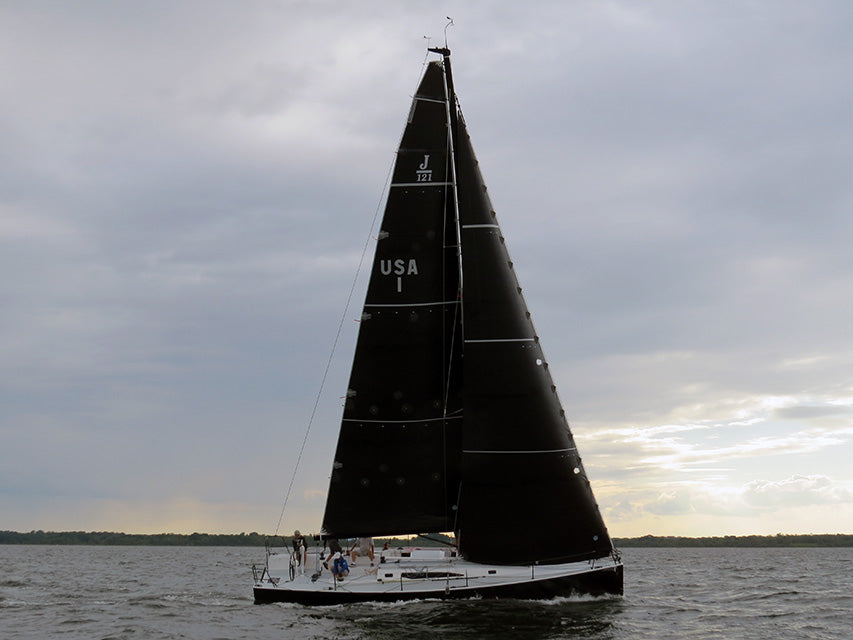
J121 SPEED GUIDE
North Sails experts Kimo Worthington and Chuck Allen answer questions in this speed guide for the J121 class.
Who sails a J121?
There are several distinct types of people who sail a J121, and most are experienced sailors. Some race the boat one design, some race shorthanded or fully crewed offshore, and some head south and cruise the Caribbean. Many are individualists who have been changing keels and adding sails. In the 2018 Newport Bermuda Race, four J121s raced in three different configurations. The point is, the J121 is a versatile boat that’s ready to sail offshore, and the sailors who do buy one all seem to agree that they’d rather do something other than race windward-leeward course configurations.
The J121 is a versatile boat that’s ready to sail shorthanded and/or offshore.
What’s the ideal J121 crew size?
That’s a trick question for this boat. The most crew you’ll ever need is five or six, total, for an event like Block Island Race Week, but the boat was designed for sailing doublehanded. It sails well without water ballast, but it really shines when you fill the windward tank with 850 pounds of water; that’s like having four or five extra people on the rail. Testing in a strong breeze, we have found the performance is spectacular with a reefed main and inner jib.
The most crew you’ll ever need on a J121 is five or six, and the boat is designed for doublehanding.
How do you move a J121 around between races?
The boat is 40 feet long and weighs 11,900 pounds with 4,800 pounds of ballast, so you’re going to move this boat on its own bottom or with a professional trucker. It’s equipped with a 30hp Yanmar diesel and saildrive, so it moves along well under power. And remember, even with only a couple of delivery crew you can add water ballast and power right up.
What sails are recommended?
The boat is billed as a five-sail boat. There’s one mainsail and two jibs, one that roller-furls on the headstay and the other that roller-furls on the inner headstay. The boat has an extendable sprit that can fly a Code Zero/gennaker on a roller-furler, or you can use an all-purpose asymmetric spinnaker. For a closer look at all these sails, view the North Sails product page, but it’s worth talking to a North class expert to make sure you match your sails to sailing style and location. Other speciality sails include smaller and flatter spinnakers and spinnaker staysails.
J121 Tuning
What are the keys to rig set-up?
The J121 has wide spreaders with chainplates outboard at the rail. We recommend easing your headstay length enough to rake the mast, inducing prebend to help keep it stable and secure. Use a rod-rigging tension gauge (e.g. Loos RT-11) and the numbers in the table below as a starting point.
The rig is set up for heavy air with 52 on the uppers.
Any tricks to tuning a boat with multiple headstays?
The inner jib is a big upgrade for most people. Now, instead of wrestling to set and douse a heavy air jib, you can raise and furl it anytime on the inner headstay, which has a halyard lock-off. The lower end of the inner headstay has a 3:1 purchase, and before deploying the heavy air jib we grind the daylights out of it—enough to make the forward headstay just start going slack.
What’s involved in setting up and hoisting the mainsail?
The mainsail has luff slides that live on the mast track. Before bending them on for the first time, tension and secure the battens and check that the main halyard purchase has no twists. Be sure the headboard is on the track and that the battens aren’t too tight. Check that the pressure is evenly distributed between the bottom car and the tack point, which is adjustable. You should be able to hoist the sail by hand; don’t use a winch, because you might over-hoist the sail.
With track cars and batten tension set correctly and no twists in the two-part halyard, you should be able to hoist the sail by hand.
What’s involved in adjusting the bobstay tension?
The bobstay on a J121 counters the upward pressure on the pole from the Code Zero or spinnaker, and your goal is to keep the pole projecting forward in alignment with the sheer line of the hull. The adjustment is in the center of the bobstay and can be set at the beginning of the season. Be sure that the pole is all the way out and that you have a mark on the pole control line before adjusting the bobstay tension.
When the pole is extended all the way, there should be a ½ inch between bulkhead and turning block.
J121 Upwind Sailing
What sail combinations do you use upwind on a J121?
One of the exciting things about this boat is that you can use different combinations depending on the situation. Standard upwind configuration is a full main and J1 (the bigger jib). As the wind builds, you might reef the main and keep the big jib going; offshore, you might not reef and use the inner jib instead. In enough wind, of course, you’ll use the inner jib with a reefed main.
The inner jib sets up on the inner forestay. Note the furling line, which should be rigged along the windward side.
Upwind, where does the crew sit?
The goal is to keep your “bow knuckle” in contact with the water. So if you have a full crew of five or six, in light air most should be sitting well forward. At 10 knots, you’ll still have two crew sitting in front of the shrouds. At 14 knots, one crew is forward; at 18 knots, everyone will move back to normal hiking position.
If your weight placement is correct fore and aft, the knuckle will just kiss the water.
If your weight is too far aft, the bow knuckle will always be out of the water.
Upwind on the J121, when do you add water ballast?
As soon as you’re heeling 18 to 20 degrees, start adding water to the tanks to maintain a constant angle of heel. With a full crew, that’s likely to be around 15 knots true wind. Doublehanded, it might be at 12 knots. Don’t forget to add water when you’re cruising or doing a delivery, too. Not only will it reduce heel and improve speed, it can also settle the motion of the boat.
The boat is heeled too much; it's time to add water ballast (or depower).
How do you trim the main and jib upwind?
In light to medium air, center the boom by raising the traveler, and then sheet as hard as you dare to get some rudder angle and heel the boat over 12 to 15 degrees. Don’t head up and slow down; let the foils work and the boat will gain height. Look for the top telltale to be stalling about 25 percent of the time in light air, 50 percent in medium air. When the breeze comes up, keep the traveler high; ease the sheet to add twist when you have trouble reaching the target numbers.
In medium air, the traveler should be raised well to windward to keep the boom on centerline.
For the jib, add three marks on the spreader that line up with the leech for eased, normal, and tight trim. We also recommend marking the deck for the inhauler to set the lead angle between 7 and 12 degrees. Set the angle tightest in flat water and moderate breeze.
The inhauler is set at 8 degrees.
How do you trim the heavy-air jib on the inner headstay?
As mentioned, you need to crank on the inner headstay until it is carrying about three-quarters of the rig load and the forward headstay loosens just a little. The jib sheets lead to the same floating lead as the J1 and you will still trim to the same spreader marks, as well as watching to keep the leech telltales flowing.
What are the key gear changes for sailing upwind?
We’ve developed a playbook for five wind speeds. It goes like this:
Zone 1 (0-8 knots):You’re looking for power; move weight forward, and keep backstay and headstay loose and outhaul eased. Try to get some heel; pull in the mainsheet.
Zone 2 (9-12 knots): Start moving weight to the rail. Pull on backstay, jib halyard, and outhaul. Sail shape should still be deep. Trim the mainsheet hard.
Zone 3 (13-18 knots): Max outhaul, backstay, cunningham, and jib halyard. Find “magic heel angle” (12 to 15 degrees). Crew weight starts moving aft, sail shape becomes flatter. Consider moving jib leads back.
Zone 4 (18-22 knots): Now you need less power. Consider a single reef. All controls should be maxed. Find the “magic heel angle” (12-15 degrees). Sail shape should be really flat. Trim sails so the boat is easy to steer and fast; ease main (if it flogs, open the slot by easing the jib or moving the jib lead back).
Zone 5 (23+ knots): Smaller jib on inner headstay and/or reefed main. Strive for “magic heel angle” (12-15 degrees). Make the boat easy to sail and keep it going fast through the water.
The Magic Heel angle for the J121 is 12-15 degrees.
J121 Reaching and Downwind Sailing
What are the best J121 sail combinations when reaching?
When close reaching in lighter winds, an eased J1 is very efficient because it has leech battens. As you bear off, switch to the Code Zero well before you think it’s time—about 70 to 80 degrees true wind. By easing the tension on the front of the Code Zero and letting it scallop you can sail even higher, but don’t overdo it. Crew should remain forward, in upwind position.
Not all Code Zeros are the same. North’s are a little smaller and not as deep as some other sailmakers. They also have a shorter foot and lower clew with less girth at the top, for a wider range; you can sail them from 70 to 120 degrees apparent before setting the A2 spinnaker.
Learning the crossover from spinnaker to Code Zero is a key to best reaching speeds on the J121.
What are the crossovers between downwind sails?
Learn your sail crossover chart (see below) to determine the correct angles for the two jibs, Code Zero, and A3 and A2 spinnakers—and keep the leech of your main and headsail well-matched.
The main and Code Zero leeches are well-matched, a fast combination.
At the top end of Zone 3 (18 knots) from 90 to 125 degrees true wind angle, sail with a double-slotted Code Zero and inner jib. In winds over 18 knots, you may be able to carry the combination to 135 degrees. If you have one, you can use a spinnaker staysail at 135 degrees and deeper. When it’s really windy, an A4 (small spinnaker) and inner jib can be a very effective double-slot reaching combination.
This team should be switching over to the Code Zero.
Where does the J121 crew sit when sailing downwind?
Under spinnaker in light air, crew weight should be forward and on the leeward rail, similar to upwind sailing. As the breeze comes up to 8 to 10 knots, you’ll sail with three in front of the shrouds to windward. For wind in the low to mid teens, those crew come aft of the shrouds. When power reaching, they will move halfway back to companionway, or even right back to the skipper.
Both upwind and downwind, light air crew position is well forward to keep the bow knuckle touching the water.
Video of power reaching:
https://youtu.be/BUi29Wpw0r8
J121 Maneuvers
How do you set and drop the Code Zero?
Always hoist a Code Zero on the weather side of the headstay. Raise it until the tack is 1 meter above the pole and tie off the halyard, then tension the luff via the 2:1 tack line. The Code Zero should run through a twing and then aft to the primary block. Unfurl when ready.
To drop a Code Zero: Furl the sail and bear away, tensioning the windward sheet to pull the sail to weather of the headstay as you ease halyard. Accordion it onto the foredeck. When dropping the sail while going upwind, you may have to luff up to get the furled sail to weather of the headstay.
How do you furl the Code Zero?
The key to furling this big sail when it’s windy is to ease the sheet far enough to take the pressure off the sail—but not so far that the sail completely luffs. Maintain a little tension to ensure a tight furl.
https://youtu.be/ytJ8iJ-G6Qw
How do you reef the main?
Mainsail reefing is straightforward on the J121. Ease the halyard and take up the tack line until the new tackpoint is snug. Next, trim the reefing line until the clew is snug against the boom and put a sail tie around the loose sail aft. Then raise the halyard enough for proper luff tension.
How do you change from J1 to inner jib?
Hoist the furled inner jib to its halyard lock with the tack eased off one meter. Then tighten the tack until the luff rope is quite tight—with significantly more load than the headstay. Keep the tack line on a winch for further adjustment and deploy the inner jib, then furl the J1. Your furling lines should run along the weather side of the boat.
How do you set the J121 spinnaker?
The key jobs when setting the J121 spinnaker with a crew are as follows: The sail starts in the bag, typically zipped up and tied off to the foredeck. Bear off to hoist, and raise the sail at least halfway before pulling out the tack and pole. The driver should call for the set when the boat is sailing at the right angle—if windy, bear off so it’s well hoisted before it fills. Also, don’t furl the jib(s) until the kite is up and flying, or you may mistakenly furl a lazy sheet or other part of the spinnaker. For shorthanded sailing, use a snuffer system or spinnaker zipper system.
How do you jibe the J121 spinnaker?
We recommend an outside jibe, so the clew travels forward around the luff before sheeting in on the new leeward side. The new sheet must be in the “gybulator” or “sheet catcher” before the jibe begins so it doesn’t accidentally drop below the sprit pole. (The gybulator is mounted about six inches above the tack on the luff of the sail.)
The “gybulator” is located about six inches above the tack and the sheet must be in it for jibing.
https://youtu.be/nZjE3G0vN7U
Any tips on the starting line?
Be careful not to sail too slowly when approaching the starting line. If your speed falls below 2.5 knots, it can take a long time to get back up to speed and you’ll make a lot of leeway until the water starts flowing effectively over the foils again.
How do you tack a J121?
In light air, roll tacking the J121 is important; use all the crew weight you have. When using water ballast, plan ahead and start shifting the water from one side to the other a minute or two ahead of time. The goal is to come onto the new tack with the water ballast already transferred.
How long does it take to fill, move, and empty the J121’s water ballast?
It takes five minutes to fill the windward tank, one minute to transfer it to leeward before a tack, and two minutes to empty the tank.
The water ballast tanks are filled and drained with three control lines.
What are the keys to sailing a J121 well?
Keep your crew weight out of the aft end of the boat.
Plan ahead for tacks so you have time to shift the water ballast.
In most breezes, max out the backstay to improve headstay tension.
What is the coolest thing about sailing J121s?
We think what’s best about the boat is all the different types of sailors it attracts. J/Boats listened to its clients and introduced a boat that people can sail fast with their families or a few friends, either near shore and for long-distance adventuring.
READ MORE
READ MORE
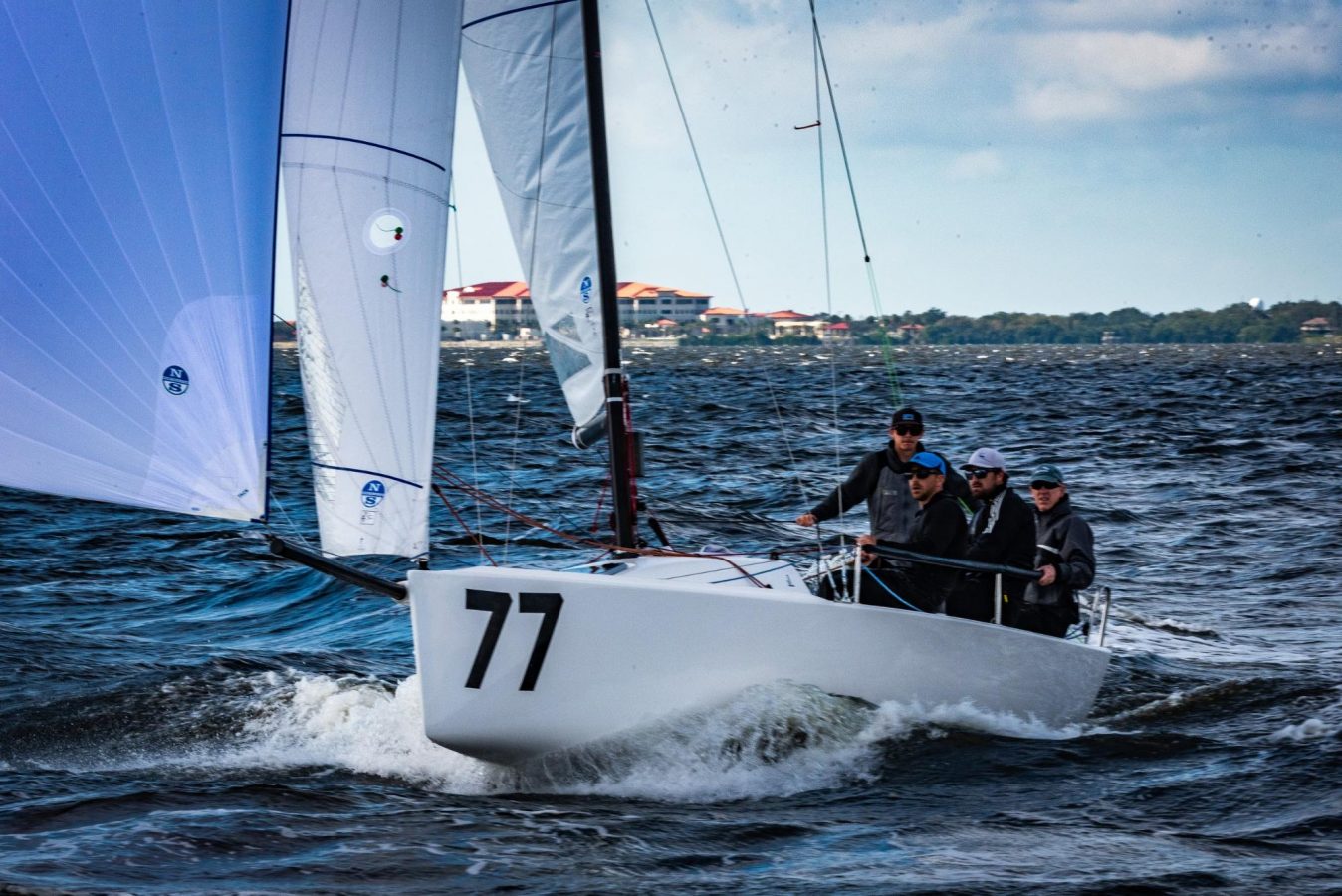
DAVIS ISLAND J/70 SERIES: TAKEAWAYS EVENT 2
DAVIS ISLAND J/70 WINTER SERIES EVENT 2
North Experts Tips & Takeaways
Corinthian team Victory skippered by Buddy Cribb, powered by North Sails. © Phil Pape
Another great weekend at the second event of the 2018-19 J/70 Davis Island Winter Series with fifty-three teams racing in the beautiful waters of Tampa Bay. Congratulations to Joel Ronning on Catapult for winning Event #2. Brian Keane’s Savasana was third overall in the five-race regatta. Tough racing conditions ranged from light and shifty to puffy and shifty, keeping the game close and the battle for the podium even closer. North clients took seven of the top ten spots, with Andrew Fisher’s Button Fly first overall in Corinthian division.
We asked our experts to share some insights from the weekend.
When to Change from Planing to Displacement Mode Downwind?
By Tim Healy
One of the questions that came from sailing this past weekend was: When planing and the breeze drops a bit, when do you commit to displacement mode? The answer is when the boatspeed can no longer average above 9.5 knots, even after heading up for more power. Then it is time to furl the jib, bear off, move crew weight forward, and commit to displacement mode.
At this point you will be going only about 7-8 knots, but your angle is much lower so your VMG is better. You can also consider wing-on-wing mode. This will take you almost dead downwind with a speed of 6-7 knots, depending on the puffs. Wing-on-wing works especially well at bottom of runs when you want to minimize jibes and keep clear of traffic.
Mike Marshall adds:
This weekend, you could save some of the transitions to displacement by chasing the plane a bit more than you normally would. Since the changes in pressure were normally very short, you would lose a bit of VMG by staying on the plane but be back on it again sooner when the next puff came. It translated into a net gain on the downwinds.
Dividing Up the Work
By Mike Marshall
On Saturday, we had the opportunity to sail in some very variable conditions where the peak wind was 16 knots and the lulls were around 8 knots. These variations required frequent sail control adjustments. Something that the top boats do really well is divide up the tasks, making sure that everything is trimmed correctly more of the time. Here’s an upwind example:
Driver holds the traveler and the tiller
Mainsail Trimmer holds the mainsheet and the backstay
Jib Trimmer has the windward jib sheet
Bow Person has the vang
This allows all controls to be changed at the same time, which is critical to keeping the boat going when the wind changes from 8-16 knots or back down to 8 again.
Pinching the Puffs
By Will Welles
For the flat water sailing out of Davis Island, you can really pinch in the onset of the puffs to help keep the boat under control. Make sure not to pinch too long or after the puff has gone by, so you don’t lose speed. The key is to maintain a constant angle of heel through puffs and lulls. This is done with vang sheeting, playing the weather sheet of the jib, and steering.
J/70 Davis Island Winter Series – Event 2
Powered by North Sails
1
Catapult / Joel Ronning *
3
Savasana / Brian Keane
5
Dark Horse / Greiner Hobbs
6
New Wave / Will Welles
7
Polar / Doug Clark
8
Black River Racing / Douglas Strebel
10
Button Fly / Andrew Fisher – 1st Corinthian!
* Denotes Partial North Sails Inventory
Full results
Learn more about North’s J/70 products.
Brian Keane’s Savasana, third place. © Phil Pape
© Phil Pape
READ MORE
READ MORE
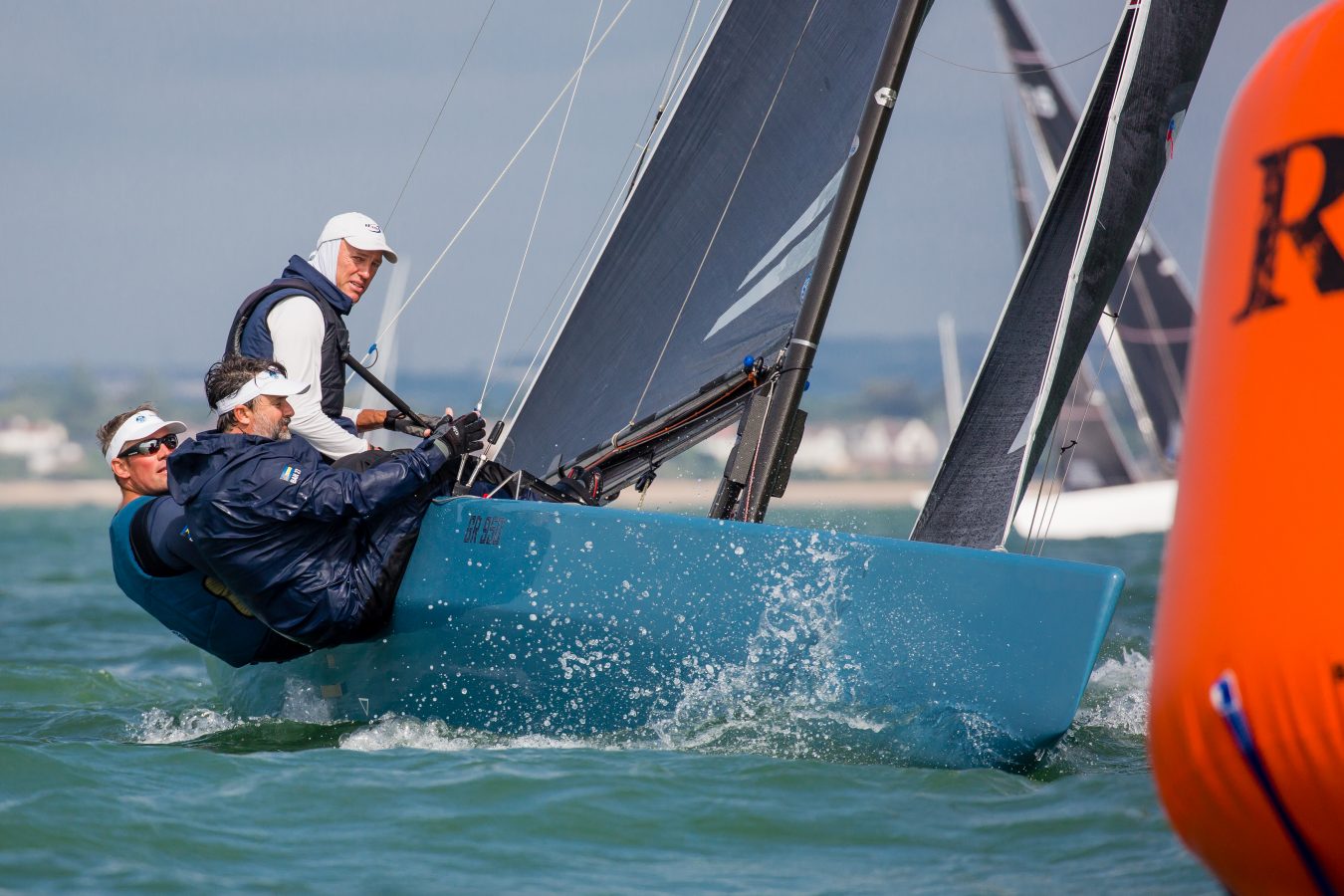
NEW CLASS LEADER FOR THE 5.5 METRE
NEW CLASS LEADER FOR THE 5.5 METRE
World Champion Christoph Burger Takes On New Role
© Robert Deaves
Christoph Burger has sailed a lot of different one designs since childhood, including two Olympic campaigns in the Finn, but he’s always returned to the 5.5 Meter class. “My dad built one of the first modern boat in 1994, when I was 18. That was my first link and I never really stopped sailing this beautiful boat.” Taking over as 5.5 class leader for North Sails has been desirable, he says, because “it is one of my favorite classes to sail.”
Based in Switzerland, Christoph joined North Sails in 2013 and now combines professional sailing and coaching clinics with selling sails. “That’s often a win-win situation. When you introduce someone to sailing or help him to get better, then the orientation to North Sails is very helpful and simple.” He continues to sail other classes, including the Finn, J70, Dragon, and Star, as well as campaigning the 5.5 as middle crew on New Moon, a Bahamian team that won the 2018 Worlds. They also finished either first or second at the other big 2018 regattas.
“I’m always saying you don’t have to win every regatta to be a good salesman,” Christoph says, “but it helps now and then that you’re on top and people look up to you. I’m really happy that other North Sails clients are performing well; I think we won all the regattas in 2018 and all the podiums with our sails.” Which is easier to do when ninety percent of the top 10 during the 2018 worlds, of the fleet is using North Sails.
© Robert Deaves
Sail Development
3Di is an “absolute rocket ship” in moderate to heavy winds, and Christophe says he’s quite happy with the current three jib designs (light, medium, and heavy air). “The designers just finished a lightweight jib and clients are buying.” The spinnakers are also fine up and down the range, so the next development project is to tweak the mainsail design to be more dynamic in light air.
“Only a year ago, we were the only team having 3Di sails,” Christoph reminds us. “We decided not to use them because they were not officially for sale yet and it would’ve been too much of a speed advantage. Now one year later, we’re already talking about new mainsails again!”
Technology unique to North makes it possible to continually improve designs, but that can be potentially confusing to his customers.
“I have to communicate really well what we have right now and where we want to go, and make a steady clever but sustainable development of the product.”
The 5.5M presents some specific challenges compared to other classes because it is not strictly one design in hull shape. Like twelve meters and other meter classes, “5.5” is the output number of a formula that includes hull displacement, waterline length, and sail area.
“So if the boat designer chooses to have maximum sail area, he has to build a heavier boat or choose a shorter waterline,” Christoph explains. “Each boat has its own sail plan; they all look the same but they’re optimized for each boat.” At the end it is still the crew that makes the biggest difference.
5.5 sailors like to be kept informed about sail developments, he says. “It’s not their profession like ours, they don’t have their heads 24/7 around sails. So whenever they see me, they’re really excited. What’s the new guy’s doing, what have I been doing, what’s the latest.” That’s a nice entry point for Christoph to explain the latest design tweaks.
© Robert Deaves
On the boat
Christoph won the second title during the 2018 5.5M Worlds with a team that has sailed together for three years. “Basically I’m responsible for the boat setup,” he says. “Which sails and then what tuning, getting the whole setup ready to go sailing. On the water, I’m doing strategy and tactics and a little bit of everything. The helm focuses on the steering and the bow is calling wind and current.” Christoph adds “But at the end we are a team with equally importance. We stand and fall together”. His team is excited to compete at the 2019 Worlds, the 100th anniversary of the class, in Helsinki—where the very first Gold Cup was sailed.
Off the boat
Christoph isn’t home much during the sailing season, so he tries not to schedule any travel in December to January in order to have time with his wife and three kids—aged eight, six, and three. The family enjoys skiing, as well as all kind of sports.
“It’s very cool to see the little ones growing up,” he says. “I’m always the first one suffering when I’m going sailing for two weeks.” A few winter boat shows are also on the docket this year. “It’s always good to get to see clients in a different environment. At regattas, everyone is in their own focus.”
The sailing season starts up again in early February with a J/70 regatta in Monaco, which makes Christoph grateful for his access to other North Sails experts. “As soon as I have a question I shoot an email to a colleague and he responds normally within a day, so I have a perfect first-hand answer. I do the same with the others.
“You have to keep on working and do your homework so you can be better,” Christoph adds. “I’m trying to get better every year.”
© Robert Deaves
© Robert Deaves
© Robert Deaves
READ MORE
READ MORE
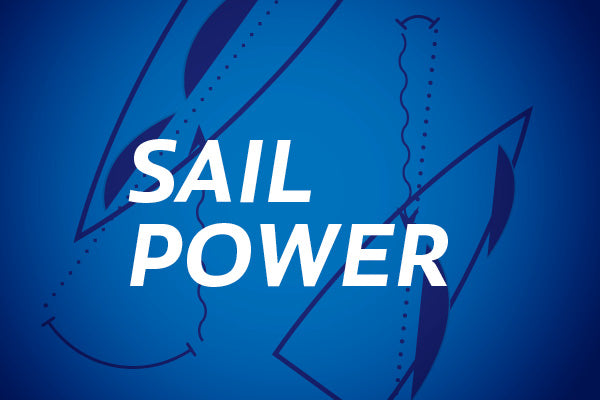
FULL POWER & MIX OF POWER
SAIL POWER: FULL POWER & MIX OF POWER
By Bill Gladstone
This article is derived from the North U Trim Seminar. North U offers seminars, clinics, books, media, online training, and coaching. Visit NorthU.com to Learn More
In our first segment we defined the three sources of sail power: Angle of Attack, Depth, and Twist. Segment two focused on twist and the impact of twist on performance.
In this segment we address how our three sources of power combine to create our total power, how we add and reduce power to match the conditions, and how we can change not just the total power, but the mix of power. Later segments will explore the relationship between the main and jib and also describe how each of our sail controls impacts shape and power.
Optimum Performance
Each sail gets its power from a combination of angle of attack, depth and twist. It is time to explore how these combine and how we can adjust both the total and the mix of power to optimize performance in different wind speeds and sea states.
Total Power, Full Power, Mix of Power
Our first goal is to get to full power – neither overpowered nor underpowered. Full power means the crew are fully hiked, the boat has its designed angle of heel, and the helm is well balanced and easy to steer.
Fig. 301 Our total power is the sum of power from each source: Angle of Attack, Depth, and Twist.Once we are at full power we can fine tune to suit the conditions. Here are a few generalizations to help in finding the best mix of power.
First, understand that we can trade one kind of power for another. We can add power from one source, reduce from another and have the same total but a different mix. For example: Adding depth adds power while adding twist spills power. By adding depth and increasing twist we can get the same total power, but a different mix.
Fig. 302 On the left, trimmed flat with little twist. On the right, a deeper (more power), more twisted (less power) shape. Same total, different mix.
Moderate Air Trim
By moderate air we mean enough wind to get the boat to full power – as described above, this means, the crew fully hiked and the boat sailing at its designed angle of heel, and the helm balanced. On most boats we transition from light air to moderate in 6 to 7 knots of true wind speed. Some boats need more, some less. Once we are at full power we can fine-tune performance by changing the mix of power. Here’s what we mean:
Waves or Chop
In wavy conditions a deeper more twisted shape is preferred. The extra depth provides power to punch through the waves and better acceleration to build speed as each wave slows the boat, while the extra twist provides a wider steering groove and is less prone to stalling. The waves make a narrow course hard to hold, and each wave slows the boat, so we are constantly accelerating.
The downside is a slight compromise in pointing ability compared to smooth water sailing. But remember: you’ll never point if you are slow. Speed First.
Similarly, coming out of a tack our sails are initially trimmed with extra twist to ease flow at a wider angle of attack, and with extra depth for acceleration, with final trim coming only as the boat accelerates to full speed and is brought up to a narrower, high pointing angle of attack.
Smooth Water
In smooth water and that same full power wind speed we trim with less twist – adding power and pointing ability – while sailing with a flatter sail – reducing power and drag. We have the same total power, but a different mix.
The downside to flat sails with little twist is a narrower steering groove and poor acceleration. In smooth water we can sail in a narrower groove, and once we are up to speed we won’t be slowed by waves. It only works if you can sail to it; you won’t point well if you use high pointing trim in unsuitable conditions. You’ll just stall and go slow.
Fig. 303 As conditions vary across the spectrum of smooth to choppy we can fine tune our mix of depth and twist.
Across the Spectrum
We’re rarely in perfectly smooth or ferociously chopping conditions. Mostly we sail in something in between. For best performance we’ll adjust the mix of depth and twist to suit the prevailing conditions while maintaining full power. The differences are nuanced and often the performance advantage is small… but critical. The difference between good and great, between mid-fleet and winning is just a couple percent and is often comprised of several things each contributing fractions of a percent. Never relent. Every little increment matters. It adds up.
Fig. 304. Across the spectrum, from flat with little twist to deep and twisted. We do most of our sailing in the middle, making incremental changes as wind and sea state fluctuate.
Next Time…
In our next segment we’ll look at the role of Angle of Attack in upwind performance and look at de-powering in heavy air and powering-up in light air.
© copyright Bill Gladstone
READ MORE
READ MORE
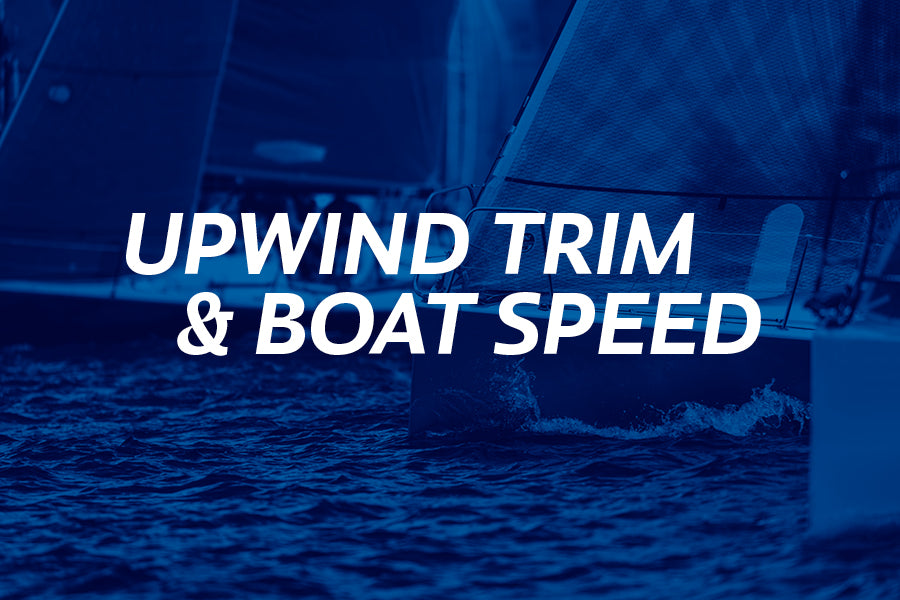
SAIL TRIM TALK AT GREYSTONES SAILING CLUB
TRIM TALK AT GREYSTONES SAILING CLUB
Thursday 17th January at 19.30.
Presented by Shane Hughes & Nigel Young
North Sails Ireland would like to offer the members of Greystones Sailing club and visitors a presentation on the latest theory and techniques for improving and refining upwind trim and boat speed. The presentation draws on the North U syllabus so successfully used around the world by North Sails representatives and includes the use of North Sails proprietary Sail Trim Simulator to help illustrate some of these trim solutions.
Upwind Sail Trim & Boat Speed
Topics Covered:
This session shows how the angle of attack, depth, and twist combine to control upwind speed, pointing and balance; and how to change the trim to improve performances as conditions change.
Mainsail trim
Jib trim
Helming in light, moderate and heavy air
All are welcome, members and visitors. No entry fee.
READ MORE
READ MORE
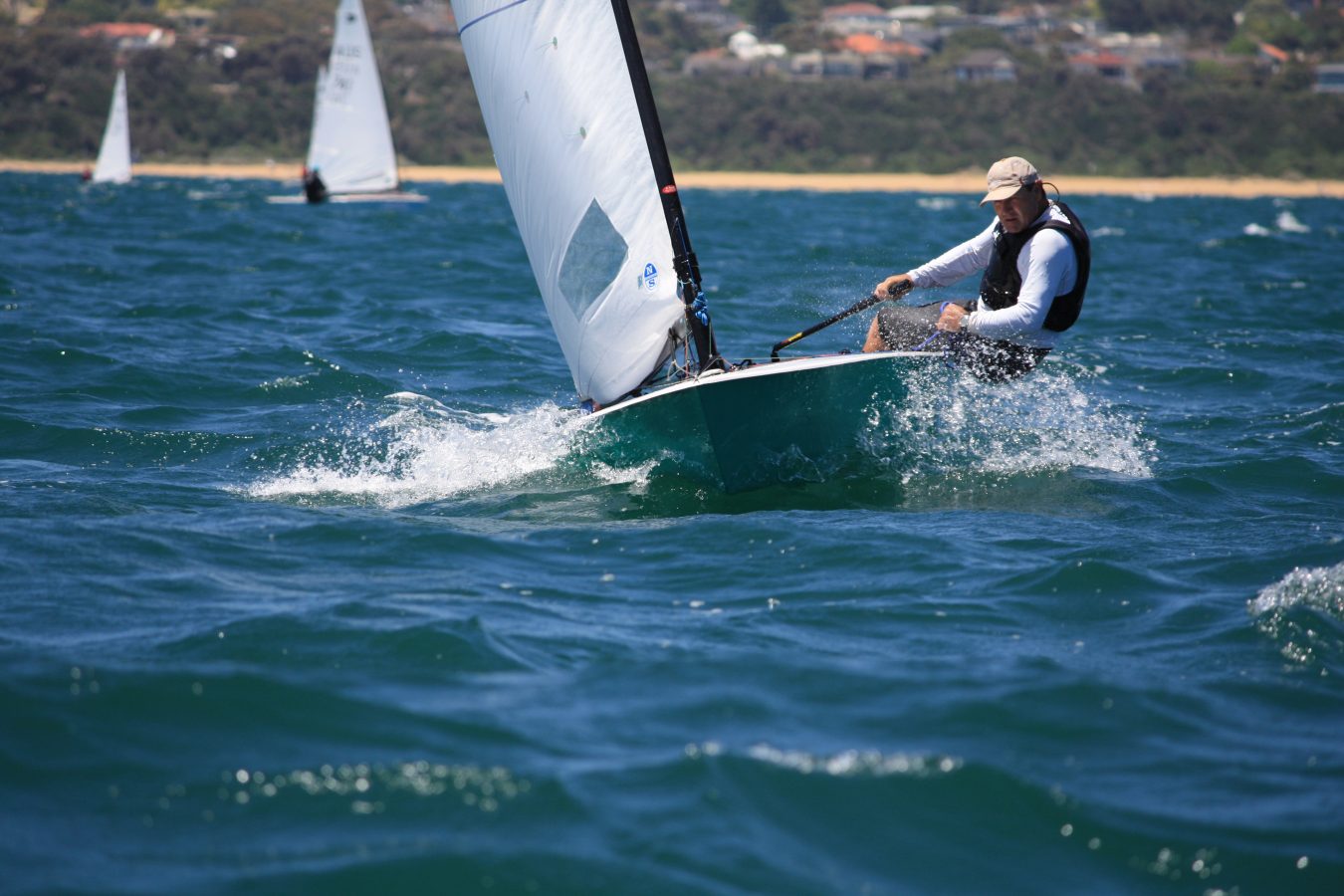
OK DINGHY AUSTRALIA NATIONAL CHAMPIONSHIP
OK DINGHY AUSTRALIA NATIONAL CHAMPIONSHIP
North Client Snatches The National Title At Black Rock
The famous dinghy club, Black Rock Yacht Club, in Melbourne, Australia held the 57th OK Dinghy Nationals.
With a 40-boat fleet, Roger Blasse won with a series score of 12 points total, including seven first place finishes- all using his new main, the North Sails KAP-1.
Roger commented;
“Using North Sails for the first time, I found it easy to get up to speed and was immediately on the pace. My mainsail has a great range of modes, and can be trimmed for height or speed throughout a broad range of conditions. My downwind speed wasn’t a problem either.”
With the 2019 World Championships in Wakatere, on Auckland’s North Shore this February, this regatta has been a great lead-up event for training.
Want to know more about North Sails OK Dinghy suggested inventory? Contact your local expert.
READ MORE
READ MORE
OK DINGHY AUSTRALIA NATIONAL CHAMPIONSHIP
OK DINGHY AUSTRALIA NATIONAL CHAMPIONSHIP
North Client Snatches The National Title At Black Rock
Roger Blasse, OK Dinghy Austrlian National Champion 2019 © Lara Blasse / Blue Peter
The famous dinghy club, Black Rock Yacht Club, in Melbourne, Australia held the 57th OK Dinghy Nationals.
With a 40-boat fleet, Roger Blasse won with a series score of 12 points total, including seven first place finishes- all using his new main, the North Sails KAP-1.
Roger commented;
"Using North Sails for the first time, I found it easy to get up to speed and was immediately on the pace. My mainsail has a great range of modes, and can be trimmed for height or speed throughout a broad range of conditions. My downwind speed wasn’t a problem either."
With the 2019 World Championships in Wakatere, on Auckland’s North Shore this February, this regatta has been a great lead-up event for training.
Want to know more about North Sails OK Dinghy suggested inventory? Contact your local expert.
READ MORE
READ MORE
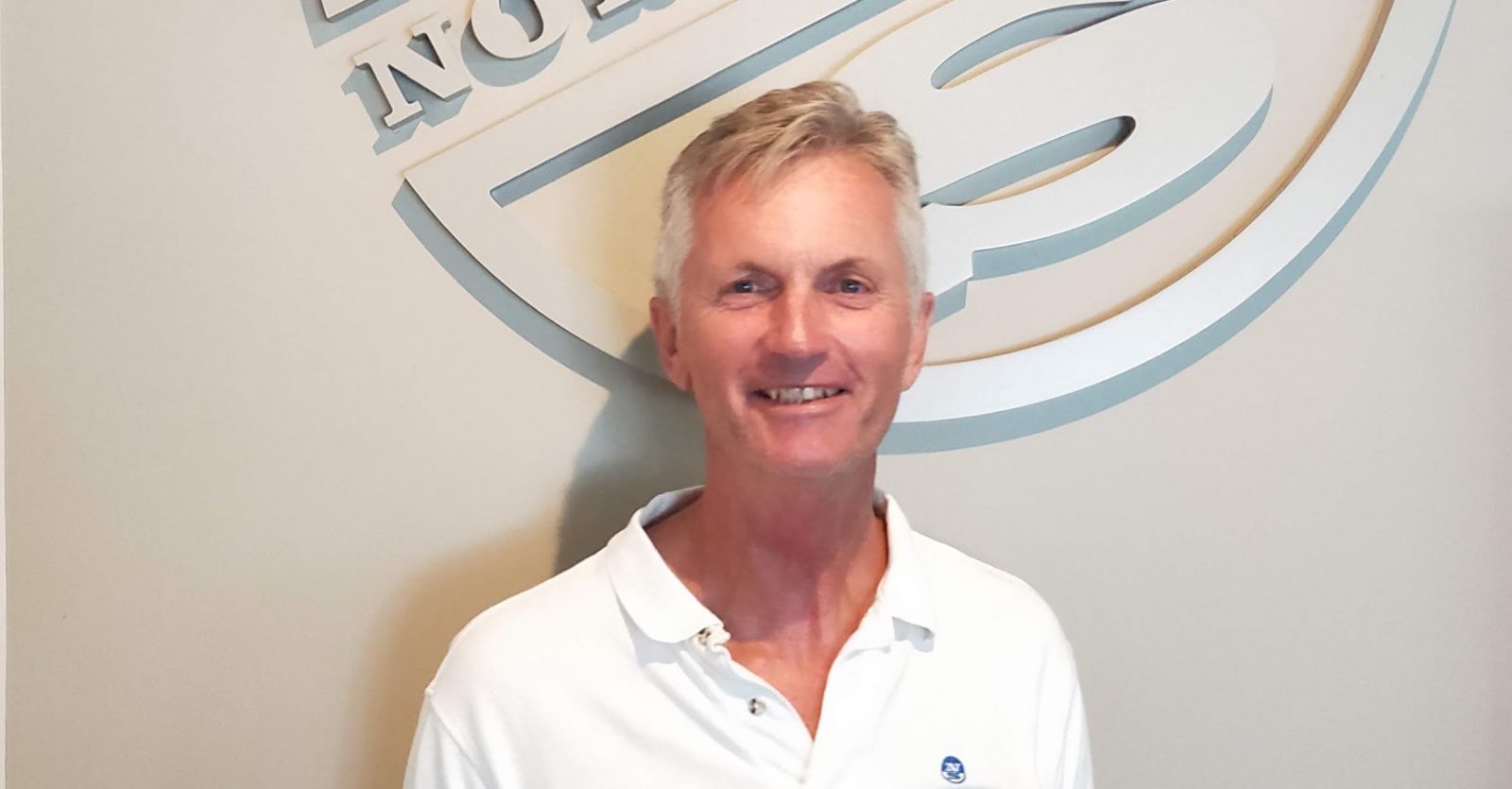
NORTH SAILS WELCOMES NOEL DRENNAN TO THE TEAM
Noel's new role will allow him to pursue his passion over many One Design classes.
READ MORE
READ MORE
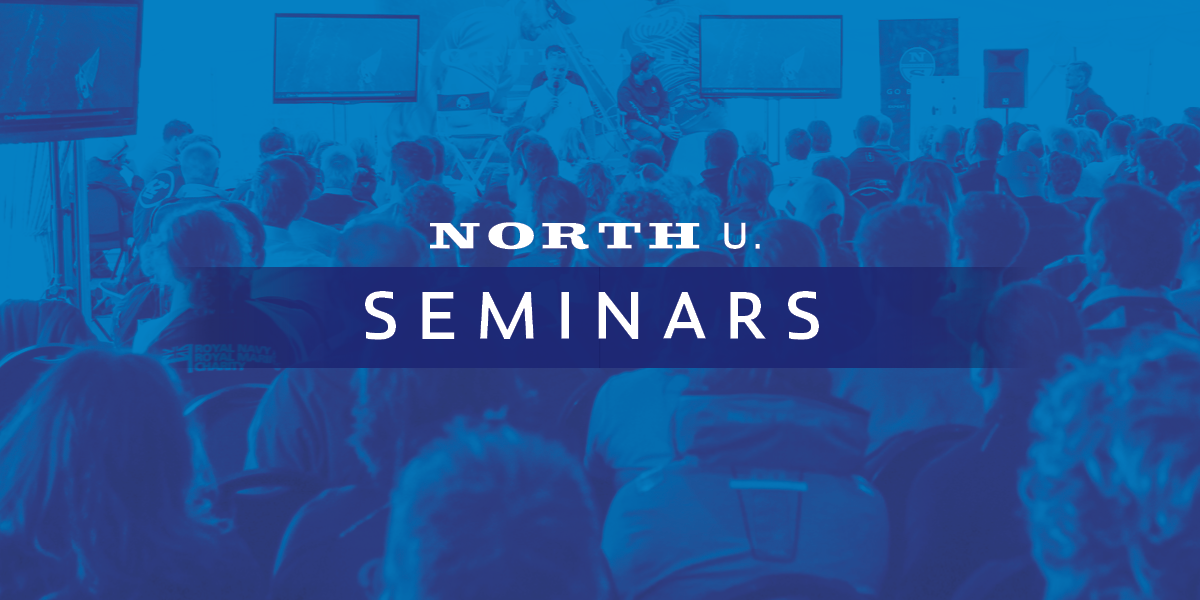
NORTH SAILS DETROIT AND BAYVIEW YACHT CLUB PARTNER AGAIN
NORTH SAILS DETROIT & BAYVIEW YACHT CLUB PARTNER AGAIN IN 2019
Exclusive Sailmaker of the Bell's Beer Bayview to Mackinac Race and Bayview One Design Regatta for 2019.
Bayview Yacht Club and North Sails are pleased to announce their continued partnership in the Bell’s Beer Bayview to Mackinac Race and the Bayview One Design Regatta for 2019. “North Sails is committed to not only delivering superior product and service but to also help in any way possible to build participation in these two great events as well as sailing in general.” states North Sails Manager Karl Kuspa.
“Bayview Yacht Club is very grateful for North Sails Detroit continued support of our events including the Bayview One Design Regatta and the Bell’s Beer Mackinac Race,” according to 2019 Race Chair Bob Nutter.
Upcoming events for the 2019 Bell’s Beer Bayview Mackinac Race:
On January 12th from 9 am to 5 pm, Bayview will be hosting an ORR/ ORR-ez Seminar. This first time event is being put on by the Mackinac Race Committee to help make the registration process easier for the competitors. Jim Teeters and Nathan Titcomb from ORR and ORR-ez will be on hand to provide an overview of the rule process, answer questions, and help competitors complete their online rating request forms. Registration is required as space is limited. To register call Bayview Yacht Club at 313-822-1853.
Continuing North’s technical support of the Bell’s Beer Bayview Mackinac Race, on March 17th from 7 to 9 pm at Bayview Yacht Club, North U’s own Bill Gladstone will be hosting a seminar on Mackinac Race Strategies, Weather and Routing.
Upcoming North Sails/North U Seminars at their new Detroit location:
January 24th from 7 to 9pm - Tactics & Trim- Bill Gladstone
February 23rd from 9am to 4pm- Sail Trim and Boat Speed (Upwind and Downwind)- Bill Gladstone
Click here to register for the North Sails/North U seminars.
READ MORE
READ MORE
